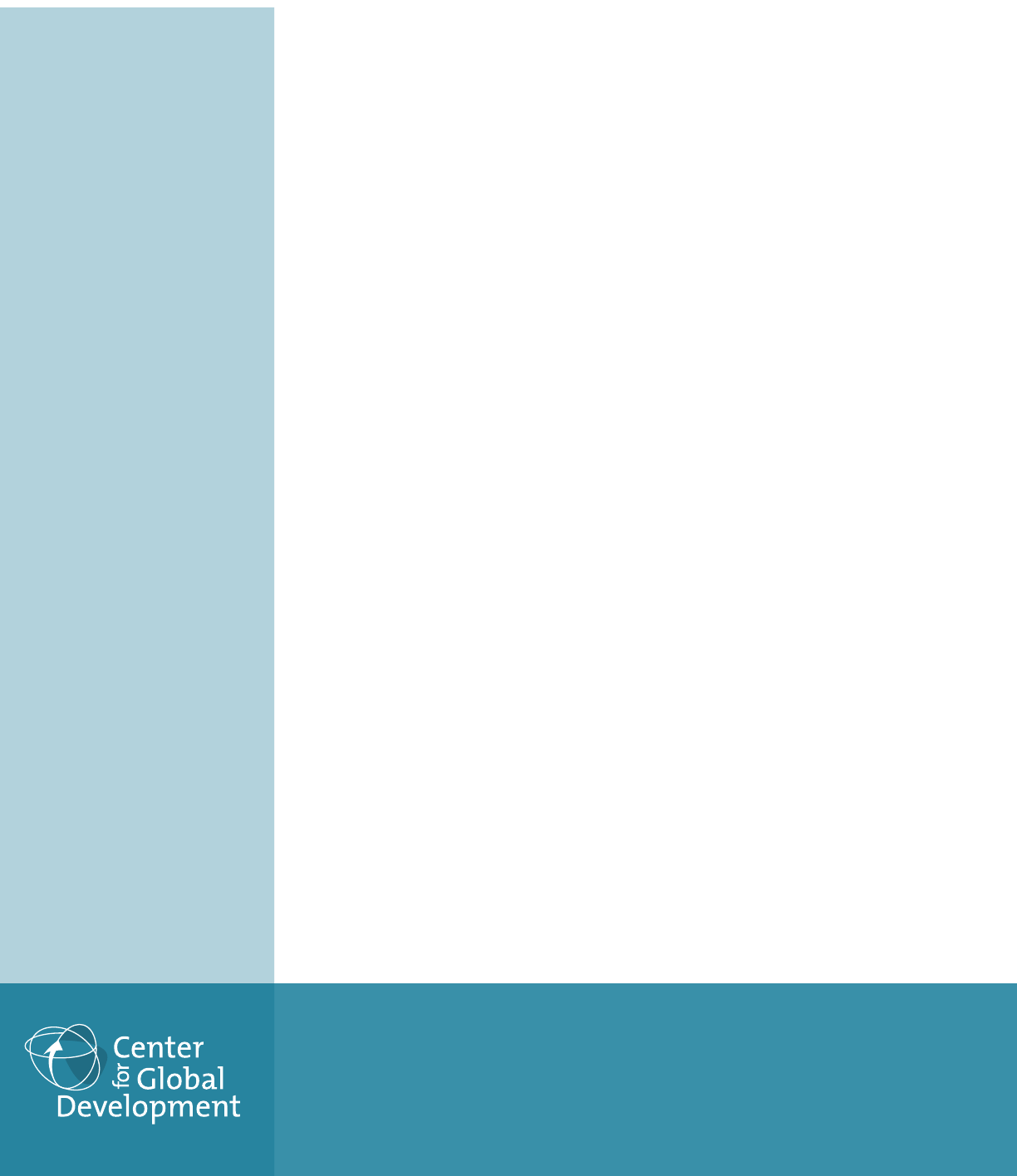
CGD Policy Paper 221
July 2021
Binding Constraints on
Digital Financial Inclusion in
Indonesia: An Analysis Using
the Decision Tree Approach
www.cgdev.org
Center for Global
Development
2055 L Street NW
Fifth Floor
Washington DC 20036
202-416-4000
www.cgdev.org
This work is made available
under the terms of the Creative
Commons Attribution-
NonCommercial 4.0 license.
Despite the concerted eorts of the Indonesian government to increase financial inclusion
and the e-commerce–led growth of digital payment services, a large proportion of the
country’s population remains financially excluded. Much of the growth and innovation has
mainly benefited those already financially included.
To understand this outcome, we use the decision tree approach developed by Claessens and
Rojas-Suárez (2020), focusing on one of the products with the largest potential to increase
financial inclusion in the country: e-money.
Our analysis finds that a crucial binding constraint on the expansion of e-money services
is a regulatory framework that creates an unlevel playing field between banks and nonbank
providers of digital financial services. Regulatory restrictions applied to nonbanks on cash-
out services, agent recruitment, and know-your-customer processes are at the core of the
problem. In addition, a perception of low benefits from the usage of formal financial
services results in a lack of the critical mass of customers necessary to ensure the profitability
of agents, particularly in remote and rural areas, and thus the expansion of e-money services.
We also find other constraints that are not binding at the national level but are binding for
some specific groups. The low provision of digital infrastructure in rural areas outside Java
is one of them. In addition, constraints such as low trust in providers, though not binding,
should be addressed in order to maximize the gains that could be obtained from relaxing the
binding constraints.
Abstract
Firman Witoelar, Teguh Yudo Wicaksono,
and Carlos Mangunsong

Center for Global Development
2055 L Street NW
Washington, DC 20036
202.416.4000
(f) 202.416.4050
www.cgdev.org
The Center for Global Development works to reduce global poverty
and improve lives through innovative economic research that drives
better policy and practice by the world’s top decision makers. Use and
dissemination of this Policy Paper is encouraged; however, reproduced
copies may not be used for commercial purposes. Further usage is
permitted under the terms of the Creative Commons License.
The views expressed in CGD Policy Papers are those of the authors and
should not be attributed to the board of directors, funders of the Center
for Global Development, or the authors’ respective organizations.
Binding Constraints on Digital Financial Inclusion in Indonesia:
An Analysis Using the Decision Tree Approach
Firman Witoelar
Australian National University
Teguh Yudo Wicaksono
Mandiri Institute
Carlos Mangunsong
DTS Indonesia
The authors would like to thank Liliana Rojas-Suarez and Alejandro Fiorito
Baratas from the Center for Global Development for their guidance and
feedback in the development of the project. The paper has benefited from
the discussions with Djauhari Sitorus and Rifki Akbari (National Council
for Financial Inclusion of Indonesia/DNKI), Ida Rumondang Sipahutar
(Indonesian Financial Services Authority/OJK), I Gede Putra Arsana
(The World Bank), Dwinita Larasati (Coordinating Ministry for Economic
Aairs), and Praswistiadi Syamsuri (Indonesia Fintech Association/
AFTECH), and from feedback from two anonymous reviewers. Finally,
we would like to thank Natanael Waraney Massie for providing invaluable
research assistance throughout the project. All errors are our own.
The Center for Global Development is grateful for contributions from
the Bill & Melinda Gates Foundation in support of this work.
Firman Witoelar, Teguh Yudo Wicaksono, and Carlos Mangunsong. 2021.
“Binding Constraints on Digital Financial Inclusion in Indonesia: An Analysis
Using the Decision Tree Approach.” CGD Policy Paper 221. Washington,
DC: Center for Global Development. https://www.cgdev.org/publication/
binding-constraints-digital-financial-inclusion-indonesia-analysis-using-decision-tree
Contents
Abbreviations .........................................................................................................................................1
Foreword ................................................................................................................................................2
1. Introduction ....................................................................................................................................... 4
2. The digital financial system landscape: providers and products ...............................................7
3. Methodology: identifying binding constraints using the decision tree approach ..................12
4. Prices for digital payment and store-of-value services ..............................................................15
5. Supply-side constraints on payment and store-of-value services.............................................22
5.1. Market structure of banks and nonbank digital service providers ..................................22
5.2. Insucient or poor private digital infrastructure ...............................................................34
5.3. Low appropriability of returns ............................................................................................. 39
6. Demand-side constraints on payment and store-of-value services .........................................47
6.1. Perceived low or no benefits of usage .................................................................................47
6.2. Low trust in providers ............................................................................................................50
6.3. Low income and geography ...................................................................................................55
7. Conclusions ......................................................................................................................................57
8. Appendixes ......................................................................................................................................59
Appendix 1. Electronic money licenses ......................................................................................59
Appendix 2. Sources for provider-level data ..............................................................................60
Appendix 3. Key stakeholders and regulations ..........................................................................66
Appendix 4. The decision tree methodology: further details ................................................... 69
Appendix 5. Sources for account registration requirements ....................................................71
Appendix 6. Sources for telco provider–level prices ................................................................ 72
Appendix 7. Sources for institution-level fraud data .................................................................72
9. References ........................................................................................................................................74
List of figures
Figure 1. Formal financial products ever used, Indonesia, 2018
(self-reported use, percentage of adults 15+) ...................................................................................5
Figure 2. Use of regular savings accounts, BSAs, and e-money, Indonesia, 2014–2018 ............6
Figure 3. E-money transaction volume and nominal value as percentage
of ATM and debit card transactions, Indonesia, 2015–2020 .........................................................9
Figure 4. Method of making account withdrawals and deposits, Indonesia, 2018 ...................10
Figure 5. Decision tree for payment and store-of-value digital financial services .....................13
Figure 6. Average bank ATM withdrawal fee as percentage of daily GNI per capita,
2020, Indonesia and selected comparator countries ......................................................................16
Figure 7. ATMs per population and usage of digital payments, Indonesia and selected
comparator countries, 2020 ...............................................................................................................17
Figure 8. Number of points of service for BSAs, including banks, ATMs,
and branchless banking BSA agents, Indonesia, 2018 ...................................................................17
Figure 9. External transfer fees for e-wallets of selected banks and e-money providers
as percentage of daily GNI per capita, Indonesia, 2020 ...............................................................18
Figure 10. External transfer fees for e-wallet transfers, as percentage of daily
GNI per capita, Indonesia and selected comparator countries, 2020 .........................................19
Figure 11. External withdrawal fee from e-wallet, as percentage of daily GNI per capita,
Indonesia and selected comparator countries, 2020 ......................................................................20
Figure 12. Average fees to open a regular savings account, as percentage of GNI
per capita, Indonesia and selected comparator countries, 2020 ...................................................21
Figure 13. Average annual administrative fee to keep a bank account, as percentage
of daily GNI per capita, Indonesia and selected comparator countries, 2020 ...........................21
Figure 14. Top 10 commercial and retail banks by total assets, Indonesia, 2020,
IDR trillions (percentage of total assets in parentheses) ..............................................................30
Figure 15. Five-bank asset concentration (percentage of all bank assets),
Indonesia, 1996–2016 ........................................................................................................................30
Figure 16. E-money transaction market shares, Indonesia, 2019 ................................................. 32
Figure 17. Transfer between e-money providers ............................................................................34
Figure 18. 3G and higher network coverage by village, Indonesia, 2018 ....................................35
Figure 19. Average price per 100 gigabytes of data (converted to US dollars), Indonesia ....... 36
Figure 20. Number of BTSs by provider, Indonesia, 2016–2018 ................................................ 37
Figure 21. Median monthly profit (in US dollars) of branchless banking agents,
Indonesia versus benchmarks of comparator countries ..............................................................40
Figure 22. Percentage of adults making digital payments and perception of corruption,
Indonesia and comparator countries, 2017–2020 ..........................................................................41
Figure 23. Most-used payment methods, Indonesia, 2018 ............................................................ 43
Figure 24. Where users top up their e-money accounts, Indonesia, 2018 ..................................44
Figure 25. Convenience stores and supermarkets per 1,000 population,
Indonesia, 2018 ....................................................................................................................................45
Figure 26. Distribution of MSMEs by sector, Indonesia, 2019 ...................................................46
Figure 27. Reasons for not having a bank account,
by demographic characteristic (percentages) ..................................................................................48
Figure 28. Knowledge of financial terms, Indonesia, 2018 ..........................................................49
Figure 29. General trust level and digital payments, Indonesia and comparator
countries, 2017–2020 ..........................................................................................................................50
Figure 30. Bank account ownership and trust in financial service providers,
Indonesia, 2018 ..................................................................................................................................51
Figure 31. Consumer preferences on the cost of and trust in digital platforms .......................53
Figure 32. Ownership of bank savings account and income level, Indonesia, 2018 ...............57
Figure A4.1. Distinguishing between supply and demand problems .........................................70
List of tables
Table 1. Major players in digital financial payment and store-of-value
services, Indonesia .............................................................................................................................11
Table 2. Requirements to open an account, Indonesia, 2020 ......................................................27
Table 3. Costs and time for KYC process ......................................................................................28
Table 4. Progress of Laku Pandai (BSA) program from June to December 2015 ....................31
Table 5. Market share of MNOs, Indonesia, 2018 ......................................................................... 36
Table 6. Recent cases of fraud, crime, and data breach involving
the digital economy, Indonesia, 2018–2020 ....................................................................................52
Table 7. Percentage of low-income people and ratio of PoS machines, Indonesia .................56
Table A1.1. E-money licenses, Indonesia, 2020 .............................................................................59
Table A2.1. Sources for provider-level cost and price data displayed in
Table 1 and Figures 6 and 9–12 ........................................................................................................60
Table A.3.1. Key regulations on digital financial services, Indonesia,
through October 2020 ........................................................................................................................67
Table A5.1. Sources of data displayed in Table 2, requirements to open an account ............... 71
Table A6.1. Sources of data displayed in Figure 19, average price
per 100 gigabytes of data ...................................................................................................................72
Table A7.1. Sources of data displayed in Table 6, cases of institution-level fraud ...................72
1
Abbreviations
ATM automated teller machine
BCA Bank Central Asia
BI Bank Indonesia
BNI Bank Negara Indonesia
BPD Bank Pembangunan Daerah
BRI Bank Rakyat Indonesia
BSA basic savings account
BTPN Bank Tabungan Pensiunan Nasional (National Pension Savings Bank)
BTS base transceiver station
DSP digital service provider
EDC electronic data capture (device)
FII Financial Inclusion Insights
GNI gross national income
GPN Gerbang Pembayaran Nasional (National Payment Gateway)
KYC know-your-customer
LKD Layanan Keuangan Digital (Digital Financial Services program)
MINFO Ministry for Communication and Informatics
MNO mobile network operator
MSMEs micro, small, and medium enterprises
OJK Otoritas Jasa Keuangan (Financial Services Authority)
P2P person-to-person
PODES Village Potential Statistics
PoS point-of-sale
QRIS Quick Response Indonesia Standard
2
Foreword
Financial inclusion, especially through digital means, is broadly regarded as a catalyst for
development and a driver of economic inclusion. While a large number of countries have
implemented policy changes to advance digital financial inclusion, results are mixed and
there is a substantial divide between countries that have achieved great success and those that
continue to lag behind.
To support policymakers’ eorts to improve the eectiveness of their financial inclusion
strategies, in early 2020 CGD published an analytical framework, A Decision Tree for Digital
Financial Inclusion Policymaking, that allows a systematic identification of the most problematic
constraints in country-specific settings. Many constraints can restrict financial inclusion, but
to dierent degrees. Therefore, the Tree aims at diagnosing which constraints are binding,
i.e., impeding significant usage of digital financial services. Without this kind of analysis,
gaps in financial inclusion strategies may persist and policymakers may focus attention on
non-binding constraints, obstacles whose solutions will not deliver significant improvements
unless other first-order impediments are addressed.
The Tree methodology uses a deductive top-down approach to analyze various potential
demand and supply causes (branches in the tree). An important feature of the analytical
framework is that it calls for analysis of the observed (or shadow) prices of digital financial
services to identify the most pressing (binding) constraints. Application of the methodology
involves benchmarking with a wide-ranging set of indicators, including aggregate and micro-
level statistics as well as survey data to reflect providers’ and consumers’ perceptions.
In this paper, Firman Witoelar, Teguh Yudo Wicaksono, and Carlos Mangunsong apply the
Tree methodology to the case of Indonesia.
The southeast Asia country has experienced a significant expansion of digital services
in recent years. E-commerce in particular has become increasingly popular, and many
innovations have taken place in this arena. However, the innovations and their benefits
have mostly advantaged individuals who were already financially included. Improvements
in eciency and digital financial services functionalities have not reached the substantial
population that remains excluded—over 50 percent of the adults, according to the most
recent estimates.
In their price analysis for digital payments and store-of-value services, Witoelar, Wicaksono,
and Mangunsong find that fees charged for e-wallet transfers are higher in Indonesia than in
comparable countries, indicating the presence of supply-side constraints.
Indeed, the authors find that an unlevel playing field between bank and non-bank providers
is a binding constraint. Regulations for non-bank providers ban their oering of cash-out
services restrict agent recruitment and impose higher know-your-costumer costs than those
applied to banks. They also reduce profitability and create substantial disadvantages to this
group of suppliers, which in many instances would be better suited to serve unbanked
populations. The authors also identify a coordination failure between suppliers and customers
3
as a binding constraint. The coordination problem manifests in the absence of a critical mass
of users, which further hinders agents’ profitability, limiting the oering of the services.
A deeper regional analysis shows the presence of additional binding constraints particular
to populations in remote and rural areas outside Java. Specifically, the low provision of
digital infrastructure and demand-side constraints such as customers’ perceptions of low
benefits from using digital financial services and lack of trust in providers are identified
as impediments whose solution would increase the potential of digital financial services
in Indonesia.
Indonesia’s digital financial services landscape is peculiar, with almost costless basic savings
accounts promoted by the government and a dynamic e-wallet market with multiple
providers, including those with non-traditional agents, such as GoJek drivers (equivalent to
Uber) that have many interactions with customers in urban areas. However, this promising
environment has continued to yield disappointing outcomes. Solving the binding and severe
constraints identified by Witoelar, Wicaksono, and Mangunsong could substantially benefit
the over 100 million Indonesians that remain financially excluded.
This is the last in a series of five policy papers that employ the Decision Tree methodology
that my colleagues and I developed to disentangle the most pressing constraints to financial
inclusion in countries where the low levels of inclusion are truly concerning and a hindrance
to prosperity. The other four papers study Ethiopia, India, Mexico, and Pakistan.
To learn more about this project, find these papers, and read additional material, please visit
cgdev.org/page/policy-decision-tree-improving-financial-inclusion.
Liliana Rojas-Suarez
Director of the Latin America Initiative and Senior Fellow
Center for Global Development

4
1. Introduction
In recent years, as countries have recognized the promise of increased use of modern
financial services, exemplified in studies such as those of Suri and Jack (2016), Claessens
(2006), and Beck, Demirguc-Kunt, and Peria (2006), national strategies for financial inclusion
were adopted, programs were rolled out, and new regulations were introduced to facilitate
financial inclusion. Indonesia, like many other middle-income countries around the world,
has likewise put a concerted eort into increasing financial inclusion.
To understand the limiting factors that still constrain financial inclusion, a large number of
studies, observational or experimental, have focused on particular determinants of financial
inclusion or addressed a specific constraint. Such research has often led to a long list of
policy or reform prescriptions, as many factors are indeed relevant for financial inclusion.
Dierent from previous studies, our paper takes a broader but also more nuanced approach
by looking at a large set of potential constraints to identify the binding ones. We use the
decision tree approach to the study of financial inclusion that was developed by Claessens
and Rojas-Suárez (2020), who in turn adapted the growth diagnostic approach introduced by
Hausmann, Rodrik, and Velasco (2005). The approach provides a framework to systematically
assess potential constraints on both the supply and the demand sides of the markets for
financial services, and to identify which of those constraints are binding. We use the decision
tree methodology to identify the most important factors that prevent improvement in the
adoption of two types of digital financial services in Indonesia—payments and store-of-
value services
1
—and focus on electronic money (e-money) products, which oer both
types of services, the latter through e-wallets. It is worth noting that e-money is provided in
Indonesia by both banks and nonbanks.
Our definition of financial inclusion is based on usage metrics; however, ownership (of a
device or account, for instance) may be used as a proxy
2
when usage data are not available. In
Indonesia, data from Financial Inclusion Insights (FII) surveys
3
(SNKI and FII 2019) show
that in 2018, around 45.5 percent of individuals 15 and older reported having owned and
used either a regular bank account, a basic savings account (BSA), or e-money (Figure 1).
4
1
We define digital payments (digitally stored value) as payments made (value stored) using any kind of digital
infrastructure and delivered using any of various channels such as a basic mobile phone, a smartphone, the
Internet, an ATM, or electronic data capture. Products for such purposes can come from various providers:
banks, nonbank providers, or e-commerce platforms.
2
This proxy, by definition, will overestimate financial inclusion, as some accounts will be open but dormant.
3
The FII 2018 survey (SNKI and FII 2019) was a nationally representative survey conducted by the country’s
National Council for Financial Inclusion in 34 provinces. The sample design was a stratified multistage cluster
sample of 6,695 adults in separate households, with urban-rural stratification.
4
“Regular banking accounts” here include regular savings accounts, demand deposit accounts, and other
products other than BSAs. The BSA is a low- or no-fee savings account with basic features, targeted to previously
unbanked populations. Electronic money (e-money) is a financial product whose record of funds or value
available to a consumer is stored digitally. E-money does not require a bank account. More precise definitions of
terms used in the analysis are provided in Section 2.
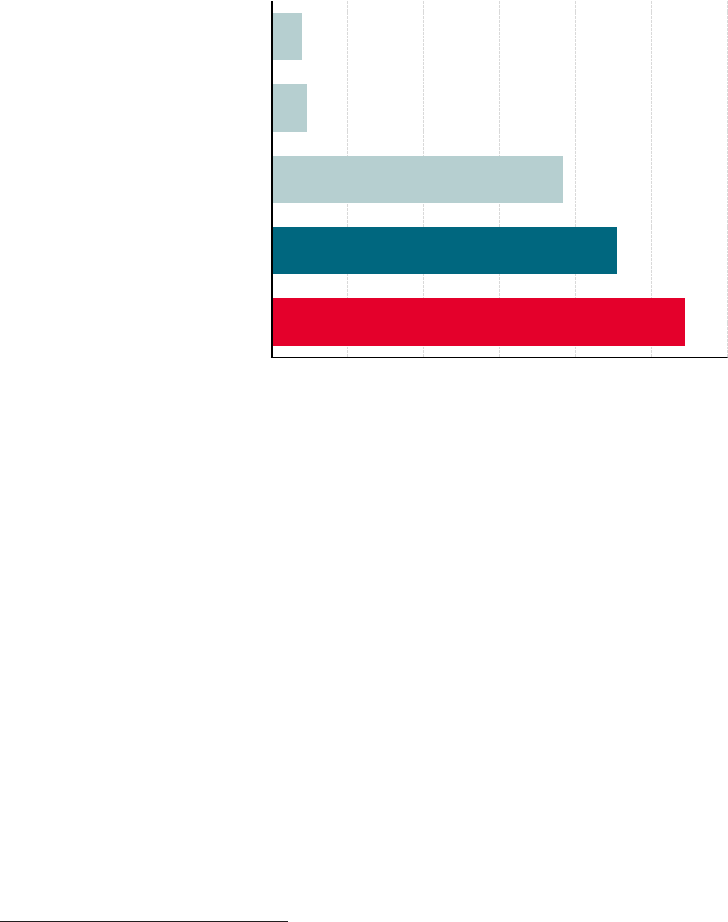
5
This means that more than half of the population reported never having used any of these
financial products. Thus, defining financial inclusion in terms of usage of these products
means that less than half of the adult population is financially included. Although there has
been remarkable growth in the percentage of the population with a bank account, from
35 percent in 2016 to 55 percent in 2018 (SNKI and FII 2019), there is still a significant
unbanked share of the population.
5
Figure 1. Formal financial products ever used, Indonesia, 2018
(self-reported use, percentage of adults 15+)
55%
46%
38%
5%
4%
0% 10% 20% 30% 40%50% 60%
Never used any
Any bank accounts or E-money
Regular bank accounts
E-money
Basic saving accounts
Source: Authors’ calculation using FII 2018 data (SNKI and FII 2019).
Note: The bars show the percentage of the adult population who reported owning and using each of the products.
Individuals may use more than one product.
The large proportion of the population that is financially underserved is striking, considering
that in the last five years Indonesia has made significant progress in extending financial
services. The use of regular bank accounts, for instance, experienced rapid growth. Between
2016 and 2018, the proportion of the adult population using a regular bank account
increased by 11.4 percentage points, although that brought it up to only 38.4 percent
(Figure 2), or approximately 50.3 million people, confirming that more than half of the adult
population is still financially excluded.
5
Note that the percentage shows ownership, not necessarily usage; usage numbers are closer to 45 percent.
A significant proportion of the new account owners in 2018 were social assistance beneficiaries, who started
to receive their social assistance via digital transfers that year.
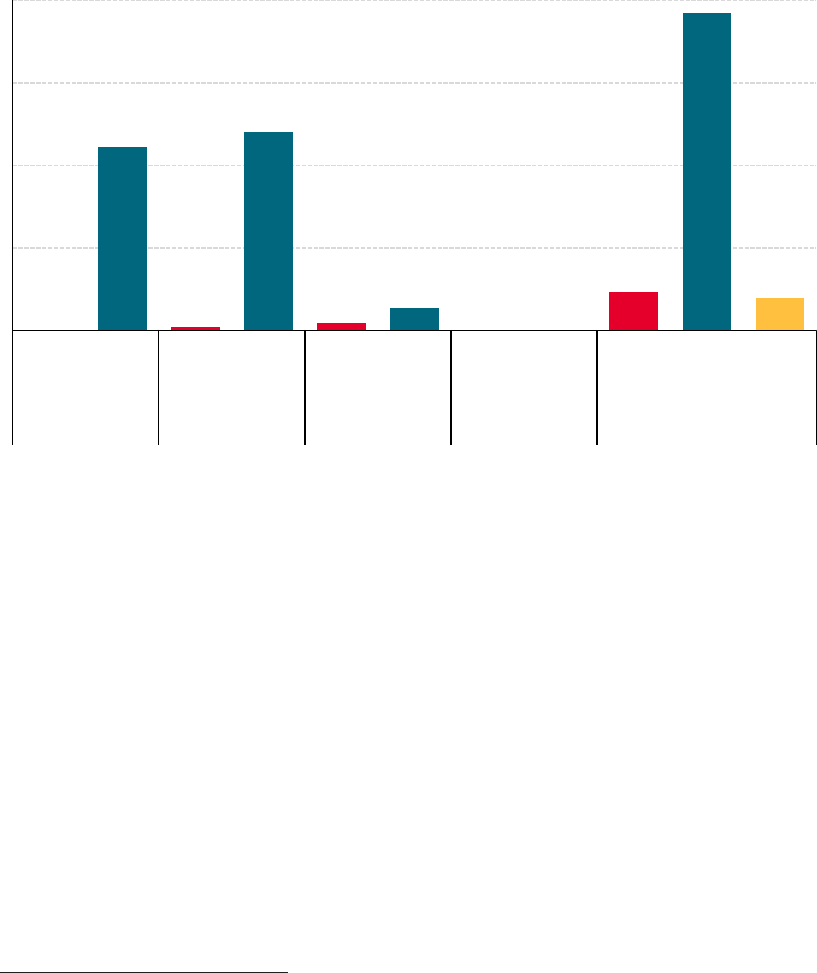
6
Figure 2. Use of regular savings accounts, BSAs, and e-money, Indonesia, 2014–2018
0.1%
22.2%
0.4%
24.1%
0.9%
2.7%
4.7%
38.4%
4.0%
0%
10%
20%
30%
40%
E-money Regular
bank
account
Regular
bank
account
Regular
bank
account
Regular
bank
account
E-money E-money E-money Basic
savings
account
2014 2015 2016 2018
Source: Authors’ calculation using FII 2018 data (SNKI and FII 2019).
Note: The bars show the percentage of the adult population who reported owning and using each of the products.
Individuals may use more than one product.
The introduction of digital financial services, particularly e-money, has been touted as a
vehicle to achieve the goal of financial inclusion. In 2014, the government of Indonesia
launched a national program to promote e-money, called Layanan Keuangan Digital (LKD),
which translates as “Digital Financial Services,” spearheaded by a number of state-owned
banks. E-money users are not required to have a bank account, and this early version of
e-money required only a feature phone.
6
These characteristics made it seem that LKD
had the potential to extend financial services to the unbanked. At around the same time,
regulators took a relaxed approach to e-money licensing, allowing a significant number of
e-money providers, mostly nonbank providers, to flourish. However, although the use of
e-money increased rapidly over the ensuing four years, overall usage remained low. Data show
that in 2018, only around 4.7 percent of the adult population used e-money (SNKI and FII
2019).
7
In this paper we investigate the reasons behind the poor performance of e-money
6
Around 46 percent of the adult population uses a smartphone, compared with 70 percent who own a feature
phone. Nevertheless, even among smartphone users, e-money usage is low (9.5 percent of smartphone owners)
(Moorena et al. 2020, using data from SNKI and FII 2019). Our calculation, using data from the same survey,
shows that 38 percent of the financially excluded adult population use a smartphone. In 2019, four state-owned
banks and a state-owned telecommunication company, through a subsidiary, launched a new e-money product
called LinkAja to replace the e-money products introduced through the LKD program. LinkAja requires a
smartphone.
7
Based on a slightly dierent definition of mobile money use, which included online purchases and
bill payments, the World Bank’s Global Findex 2017 found usage in Indonesia to be around 6 percent
(Demirguc-Kunt et al. 2018).
7
services in Indonesia, which can shed some light on the causes of the overall low levels of
financial inclusion in the country.
While innovations in digital financial services are being developed rapidly—for payments,
remittances, and credit—it seems that many of those who previously were not served by
banks still cannot exploit the benefits of digital financial services. Instead, there are signs that
the utilization of digital financial services has been more concentrated among the already
financially included population.
The rest of the paper is organized as follows. In Section 2, we further discuss the landscape
of digital financial services in Indonesia to provide context for the paper. The section
presents the digital financial products that we are going to analyze and provides more precise
definitions of a number of terminologies that we discuss in the paper. It also provides
an overview of the state of digital finance, focusing on e-money. Section 3 describes the
Claessens and Rojas-Suárez (2020) methodology of the decision tree. In Section 4, we
undertake a price analysis that compares the fees charged for digital financial services oered
in Indonesia with those in other selected countries; this analysis provides initial insights as
to whether the binding constraints are on the supply or the demand side of the decision
tree. In Sections 5 and 6, we assess each of the potential constraints aecting, respectively,
the supply of and the demand for digital financial services, in order to determine which are
binding. Section 7 provides key lessons and conclusions.
2. The digital financial system landscape:
providers and products
The explosion of digital financial services in recent years has brought with it a number of
new providers that oer dierent services, such as payments, loans, and insurance, either
individually or as a bundle through specific products (e-money and a BSA, for instance). In a
market that is still innovating, the lines between the dierent types of products are sometimes
blurred, and there is not always a clear-cut definition that is uniform.
This paper focuses on analyzing the use of digital financial products for payment and store-
of-value services—in particular, the digital financial product that may have the highest
potential to expand financial inclusion: e-money. This product has both payment and store-
of-value functionalities, though both are somewhat limited. Given the fast-growing adoption
of e-money, even among those who do not own and use a bank account, there are reasons to
believe that if some constraints were removed, its potential could be unleashed to reach the
unbanked population.
Electronic money, or e-money, is a record of funds or value available to a consumer that
is stored digitally, whether on a microchip, a prepaid card, a mobile phone, or a computer
system. An e-money account belonging to a customer is called an e-wallet. Transactions
can be done via a basic mobile phone, a smartphone, a card, an ATM, or an electronic data
capture (EDC) device, and the provider of the service can be a bank, a nonbank financial

8
institution, a mobile network operator (MNO), or an e-commerce platform.
8
As discussed
later, many forms of e-money oered in Indonesia lack some important e-money features
that are available in many other countries, most importantly the cash-out feature.
9
Although
the main functionality of e-money is making payments, by allowing users to have a balance, it
also oers store-of-value services, albeit for limited amounts.
10
As in many other countries, e-money in Indonesia does not require a bank account and is
issued by both banks and nonbanks. However, unlike in other countries such as Kenya,
where mobile money has flourished using feature phones, in Indonesia, e-money providers
typically issue server-based e-money that requires a smartphone,
11
and the market continues
to move toward requiring these devices.
12
In Indonesia, the dramatic increase in transactions
relying on e-money was spurred by e-commerce, which established e-money as an integral
part of the big tech platform ecosystem.
13
One of the most prominent providers is GoJek,
a ride-hailing service, which established GoPay, an e-money that was initially intended to
let customers pay their drivers within the GoJek network.
14
In recent years, e-money has
continued to grow, particularly through nonbank providers.
8
Most recently, one of the largest chains of convenience stores in Indonesia, Indomaret, issued its own server-
based electronic money, called iSaku, that can be used for payments, transfers within the network, and purchases
at participating merchants.
9
A few other countries have similar restrictions on cash-out services. In India, for example, only providers with a
banking license can provide cash-out services.
10
Electronic money, as discussed in our analysis, includes both server-based and card-based e-money. Card-based
e-money is similar to a debit card, in which the value is stored in a chip that is embedded in the card. Users can
access their e-wallet by using the card. E-money issued by banks in Indonesia typically uses this technology and
requires agents to use EDC devices. Server-based e-money typically does not require a card; instead, users access
their e-wallet using a mobile phone. The value is stored, recorded, and managed centrally on the server of the
e-money provider. This type of e-money allows customers to transfer money through smartphone other Internet-
based applications.
11
Several attempts to develop MNO-based mobile money failed to take o. As discussed in the analysis, part of
the failure can be attributed to an uneven playing field in the regulations that puts MNOs at a disadvantage.
12
For example, when a consortium made up of state-owned banks and the state-owned MNO introduced its
own e-money called LinkAja in 2019, it chose to use server-based e-money that requires a smartphone to replace
the feature phone–based e-money previously issued. Before establishing LinkAja, each of the state-owned banks
had its own e-money, launched under the LKD program in 2014. The state-owned MNO, Telkomsel, oered the
mobile money called T-Cash. Indosat, the second-largest MNO in Indonesia, exited the mobile money market in
2017 after three years. The third-largest MNO, XL Axiata, shut down its mobile money, XL-Cash, in 2020. We
discuss the barriers faced by MNOs in entering the e-money market in Indonesia in Box 3. Except for the recent
market reentry of Indosat with a feature phone–based mobile money product called IMkas, no major e-money is
currently feature phone–based.
13
The development of e-money in Indonesia seems to follow the mobile financial service model of China,
whereby large tech platforms such as e-commerce companies set up their own payment systems to enable their
customers to pay for their services (Demirguc-Kunt et al. 2018). For example, the e-commerce giant Alibaba
provides its own payment system, Alipay, and customers in China use an Alipay smartphone app to access their
accounts. Customers in Indonesia use a GoJek app to access their GoPay accounts. In contrast, in Kenya, mobile
financial services are oered mainly by MNOs, and the accounts do not need to be linked to a bank account.
14
Over time, as GoJek expanded its business model, including food delivery and logistics, it began allowing GoPay
to be used for person-to-person and person-to-business transactions. GoPay has now transformed itself into a
significant electronic payment service that can be used to conduct transactions both within and outside the GoJek
ecosystem, including transactions with brick-and-mortar stores.
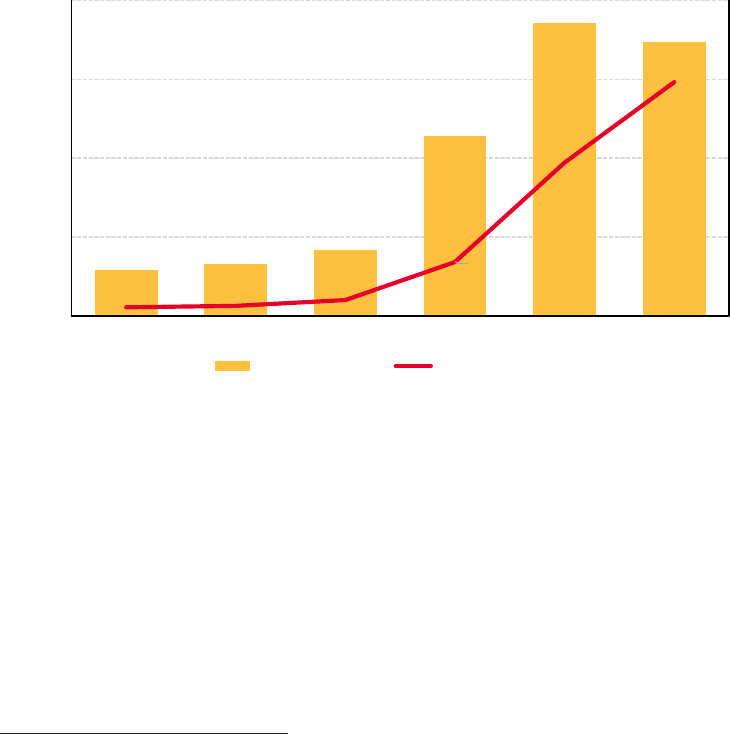
9
This solid growth of e-money providers can be attributed to the regulatory support of Bank
Indonesia (BI). In 2020, BI approved 51 e-money licenses (see Appendix 1), an increase of
31 percent compared with 2019, when only 39 companies were approved to operate e-money.
Figure 3 shows the rapid increase of transactions using e-money, in terms of both volume
and value. Note that the figure includes e-money transactions using both server-based and
card-based e-money. Finally, it is plausible that the growth reflects more an expansion at
the intensive margin—that is, a subset of the population using more e-money—rather than
at the extensive margin—that is, an increase in transactions due to more individuals using
e-money.
15
Figure 3. E-money transaction volume and nominal value as percentage
of ATM and debit card transactions, Indonesia, 2015–2020
0%
1%
2%
3%
4%
0%
20%
40%
60%
80%
2015
0.11% 0.13%
0.20%
1.94%
2.96%
2016 2017 2018 2019 2020
% Volume (LHS) % Nominal value (RHS)
0.68%
Source: BI (2021b).
Note: Percentage of volume is on the left-hand side (LHS) axis and percentage of nominal value is on the right-
hand side (RHS) axis. Labels on the red line indicate the nominal value of transactions in billions of USD PPP.
With regard to other digital payment and store-of-value services, in 2018, according to the
FII 2018 survey (SNKI and FII 2019), around 36 percent of the adult population owned an
ATM card,
16
which is close to the percentage of individuals with a bank account (regular and
BSA combined). In contrast, the survey showed that only around 4.7 percent of the adult
15
Publicly available data do not reveal the number of users. Thus, it is dicult to determine whether an increase
in the number of accounts and transactions means a proportional increase in the number of users.
16
Banks in Indonesia typically do not oer checking accounts (also called “current accounts”) to regular savings
account customers. The features of checking accounts are targeted to businesses and certain individuals with high
transaction needs, and in fact, opening a checking account requires proof of a business license. Thus, checking
accounts are very uncommon, and the tradition of making (digital) payments with a card seems to be well
established.
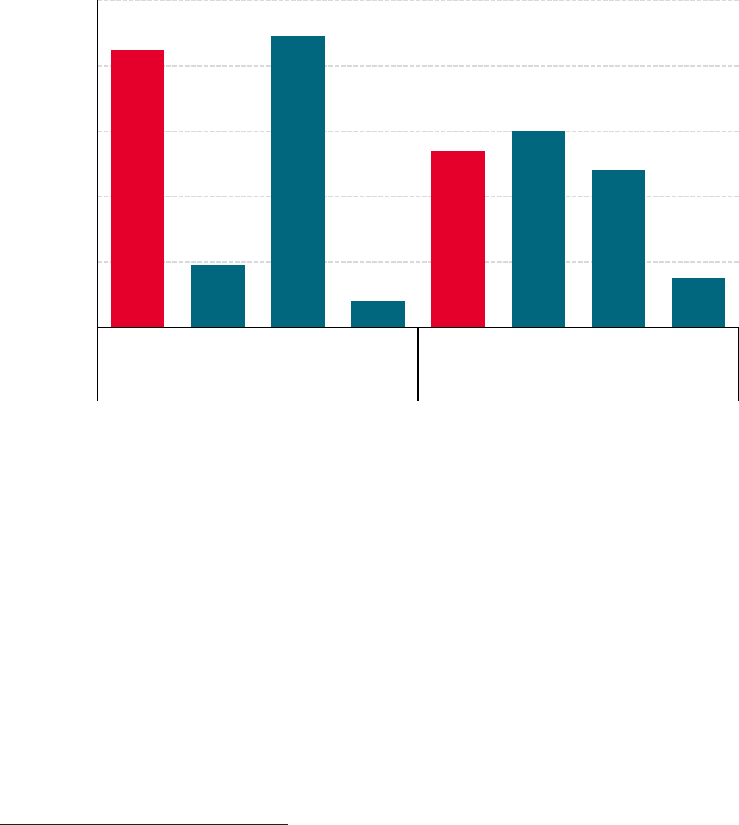
10
population used e-money.
17
Among those who said they had used it, only 60 percent reported
having “used it regularly in the past month,” although its use has been increasing rapidly.
18
In terms of usage, ATMs are also the most important channel used to withdraw or deposit
money (SNKI and FII 2019). The survey also shows that 85 percent of individuals with a
bank account withdrew money at least once in the past six months, and around 89 percent
withdrew money through an ATM (Figure 4).
Figure 4. Method of making account withdrawals and deposits, Indonesia, 2018
85%
19%
89%
8%
54%
60%
48%
15%
0%
20%
40%
60%
80%
100%
Average Teller ATM Agent Average TellerATM Agent
Any Withdrawal Any Deposit
Source: FII 2018 survey (SNKI and FII 2019).
Table 1 shows the major providers of digital financial services in Indonesia and the services
they oer. Three of the banks listed in the table—Bank Mandiri, Bank Negara Indonesia
(BNI), and Bank Rakyat Indonesia (BRI)—are state-owned banks. One of the nonbank
digital service providers (DSPs) listed, LinkAja, is owned by a consortium of state-owned
banks—Mandiri, BNI, BRI, and Bank Tabungan Negara (BTN)—and the state-owned
MNO, Telkomsel. The table shows some key dierences between the digital payment services
oered by banks and nonbank DSPs, and whether they charge users for these services.
Nonbank DSPs’ services are restricted to payments, transfers between domestic accounts,
17
Based on a slightly dierent definition of mobile money use, which included online purchases and
bill payments, the World Bank’s Global Findex 2017 found usage in Indonesia to be around 6 percent
(Demirguc-Kunt et al. 2018).
18
Payment statistics from BI (2021b) reported that between 2018 and 2019, ownership of app-based and card-
based e-money accounts increased by 74.8 percent. The number includes accounts owned by businesses and
individuals, and each group can have multiple e-money accounts, so the number is not directly comparable to the
percentage of e-money users extracted from the survey.
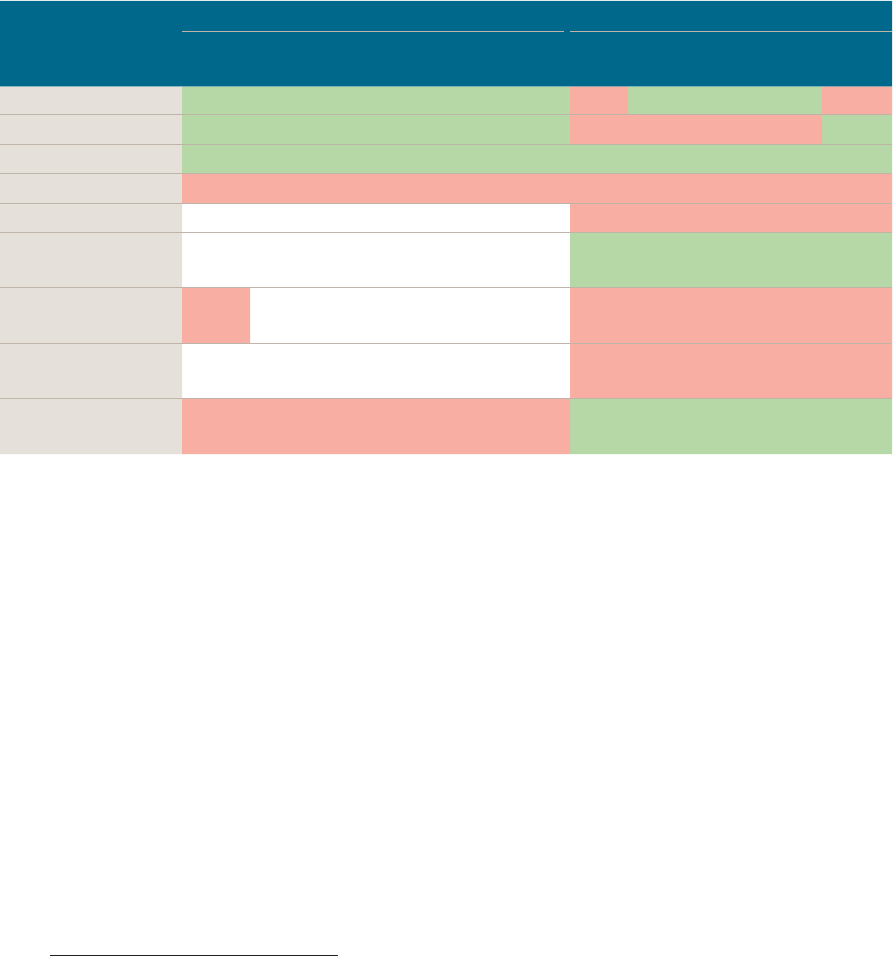
11
and deposits (cash-in services), while banks also allow users to withdraw money (cash-out)
and conduct international transfers, with some restrictions.
19
Table 1. Major players in digital financial payment
and store-of-value services, Indonesia
Service DSPs Banks
GoJek OVO LinkAja Dana ShopeePay BCA Mandiri BNI BRI CIMB
Niaga
Open account Free Free Free Free Free Paid Free Free Free Paid
Annual admin Free Free Free Free Free Paid Paid Paid Paid Free
Internal transfer Free Free Free Free Free Free Free Free Free Free
External transfer Paid Paid Paid Paid* Paid Paid Paid Paid Paid Paid
International transfer N/A N/A N/A N/A N/A Paid Paid Paid Paid Paid
Withdraw from own
ATM
N/A N/A N/A N/A N/A Free Free Free Free Free
Withdraw from other
ATM, domestic
Paid* N/A N/A N/A N/A Paid Paid Paid Paid Paid
Withdraw from other
ATM, international
N/A N/A N/A N/A N/A Paid Paid Paid Paid Paid
Top up card or
account
Paid Paid Paid Paid Paid Free Free Free Free Free
Source: Compiled by authors from banks’/providers’ websites (see Appendix 2).
Note: BCA = Bank Central Asia; N/A = not applicable. * GoJek has only started recently to allow ATM-based
withdrawal in collaboration with BCA.
20
To summarize, in terms of reaching the goal of financial inclusion, e-commerce–based
e-money, as well as bank-issued e-money such as LinkAja, has the potential to introduce
digital payment services to a substantial segment of the adult population who have
smartphones, some of whom do not currently use bank accounts or e-money—around
31.7 percent of financially excluded adults own smartphones, according to our estimate
from FII 2018 data (SNKI and FII 2019).
Appendix 3 completes the landscape section by discussing the key stakeholders and
regulations that aect digital financial inclusion in Indonesia.
19
E-money issued by banks can be cashed out under some conditions. Users must be registered, and registration
requires additional know-your-customer documents. Most banks allow only agents that meet certain criteria—
usually measured by their performance—to provide cash-out services. Nonbank DSPs must apply for a separate
permit to oer cash-out services. Section 4 discusses more extensively the regulations governing this issue.
20
Recently, verified and premium Gopay users can withdraw funds from ATMs if have BCA accounts,
per Gojek’s ocial statement accessed on July 19th 2021, from: https://www.gojek.com/blog/gopay/
cara-tarik-tunai-tanpa-kartu-bca/.

12
3. Methodology: identifying binding constraints
using the decision tree approach
This section discusses the application of the decision tree methodology to analyze binding
constraints on the use of digital payment and store-of-value services. The methodology
follows Claessens and Rojas-Suárez (2020), adapting the growth diagnostics approach
developed by Hausmann, Rodrik, and Velasco (2005) and Hausmann, Klinger, and Wagner
(2008). The details of the methodology are further described in Appendix 4.
21
As previously noted, the goal of this paper is to identify the binding constraints on financial
inclusion, focusing on digital payment and store-of-value services. The binding constraints
are the main limiting factors that are currently impeding the development of financial
inclusion in the country, and whose relaxation would yield substantial improvements in
inclusion. The decision tree starts by acknowledging that the use of digital payment services
is determined by supply and demand factors. Under each branch of the tree, the first-tier
nodes represent factors that, based on existing theories and empirical literature, are identified
to be constraints on the supply of and the demand for digital financial services. Again, based
on the existing literature, each of these factors is known to be determined or aected by
additional factors, which are listed in the second-tier branches.
We see that on the supply side, the three factors that are listed as potential constraints
are the market structure of banks and DSPs, insucient digital infrastructure, and low
appropriability of returns (see Figure 5). The three factors that can potentially constrain the
demand for digital payment and store-of-value services are perception of low benefits of
usage, low trust in providers, and income and geographical factors.
The market structure of providers may limit the availability of digital payment and store-
of-value products to only a narrow segment of the population. For example, limited
competition can prevent providers from oering a wide range of services to large segments
of the population. Increased competition has the potential to encourage providers to expand
their services at the extensive margins as well as improve their services to existing users.
Market structure is also determined by the regulatory environment—when the regulations
treat alternative providers of similar products dierently, it is likely that the disadvantaged
providers may not be able to provide services at prices that are low enough to attract users.
Insucient digital infrastructure, in terms of both quantity and quality, may prevent
providers from reaching the population segments that will benefit from financial inclusion.
Low availability of reliable digital infrastructure and high prices for usage of this
infrastructure indicate constraints on the supply side, which can be a result of several factors,
including limited competition and entrenched lack of interoperability between providers.
21
Claessens and Rojas-Suárez (2020) provided two dierent decision trees—one for payment and transfer
services and one for store-of-value services. The main dierence between the two trees is the presence of two
additional nodes in the store-of-value services tree that are not in the other tree, namely, financial literacy and
macroeconomic instability.
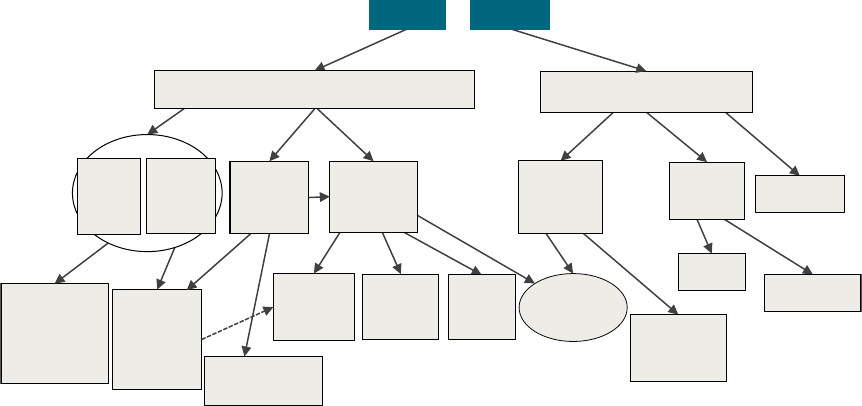
13
Figure 5. Decision tree for payment and store-of-value digital financial services
Unleveled playing
field, inadequate
rules
(also related to low
perception of
benefits)
Poor
institutional
quality and
governance
Low
appropriability
of returns
Low income
Low trust
in providers
Limited
competition
oligo/monopoly
Entrenched
lack of
interoperability
Distortionary
taxes and
other
policies
Limited demand for payment and
store of value services
Limited provision of payment and store of value services
by banks and DSPs to large segments of the population
Perceived low
or no benefits
of usage
Supply & Demand
Insufficient
or poor
private
digital
infrastructure
Problems
identifying
customers
Coordination
failures (e.g.,
critical mass)
Too costly to operate
privately, given
geo/demography
Consumer
insecurity
Lack of
awareness of
financial
products
Market
structure
of banks
Market
structure of
telecoms
and other
DSPs
Macroeconomic
instability
Source: Claessens and Rojas-Suárez (2020).
The third supply-side factor that can constrain the supply of digital payment as well as
store-of-value services is the low appropriability of returns. Providing digital services to the
unbanked population may have high social returns. However, providers may find it dicult
to appropriate these returns, and low private returns may discourage providers from entering
the market. The diculties in appropriating the returns can be due to four factors, which
constitute the second-tier nodes of the supply branch. First, poor quality of institutions
and governance may hinder the ability of providers to appropriate returns. Second, there
could be distortionary policies or taxes that reduce profits and discourage providers from
participating. Third, there may be diculties in verifying the identity of customers. This
know-your-customer (KYC) issue, both necessary as internal provider policy and imposed
by regulations, may increase costs for both providers and customers. Finally, there could be
coordination failures between the supply side and the demand side whereby, on one hand,
providers are discouraged from entering the market due to the lack of a critical mass of
users, and on the other hand, large segments of the population are reluctant to take up digital
payment or store-of-value products due to lack of either agents that can provide the services
or counterparts to transact with.
Returning to the first-tier branch on the demand side, the first factor that can limit demand is
the perception that using digital products carries low or no benefit. For instance, to continue
with the example of coordination failure above, when there are only a few agents available to
provide digital payment or store-of-value services, customers may not find it worthwhile to
take up these products. Lack of awareness regarding available financial products also causes
a perception of low or no benefits.
14
The next factor that can aect demand is low trust in providers, which makes customers
less likely to demand the products. Low levels of trust can stem from past experience
with fraud, other sources of consumer insecurity, or macroeconomic instability. Because
households’ usage of financial services for store-of-value purposes is usually associated with
larger monetary amounts than their usage for making payments, consumer insecurity and
macroeconomic instability may be more important factors in the decision tree for store-of-
value services than for payments.
Finally, the last factors that can constrain demand are low income and geography. For the
segment of the population with very low incomes, even low prices of digital payment or
store-of-value services can prove to be prohibitive. In countries with large geographical
diversity, like Indonesia, there may be pockets of remote areas where high transaction costs
restrain customers from demanding the services.
We apply the four principles proposed by Hausmann, Rodrik, and Velasco (2005), when
possible, to each branch and sub-branch of the tree. The first principle is to consider the
(shadow) price of the services to distinguish between supply and demand constraints, as low
usage of services can be a result of either or both. High service fees indicate that providers
are willing to provide only a limited quantity of services, and that only for a high price. When
the price is high and the quantity of digital finance usage is low, then the constraint is on the
supply side. On the other hand, when both the price and the usage are low, it is very likely
that the binding constraint is on the demand side.
The second principle indicates that any movement in a constraint that is binding should
produce significant movements in the objective function; that is, when a binding constraint
is relaxed, usage of digital finance will likely increase significantly. The third principle states
that if agents in the economy attempt to overcome or bypass a constraint, that constraint is
probably binding. Any evidence of agents who are willing to incur additional risks or costs in
order to circumvent a constraint provides an argument that the constraint is binding. Finally,
the fourth principle suggests that agents who are less aected by a binding constraint will be
more likely to thrive, and vice versa.
To proceed with the analysis, the first step we take is to look at prices of the relevant digital
financial services for which data are available (Section 4). The price analysis will oer key
signals that guide us in the search for binding constraints. We will then analyze each branch
of the decision tree, both on the supply side (Section 5) and on the demand side (Section 6),
using a set of indicators.
15
4. Prices for digital payment and store-of-value services
We start our analysis by examining the prices that are relevant for usage of digital payment
and store-of-value services. We begin by looking at fees charged for using an ATM, which
would be a good benchmark for cross-country comparisons, given the widespread use of
ATMs not only in Indonesia but also in other countries. We then look at fees charged for use
of an e-wallet, including external transfer fees and withdrawal fees. It is worth noting that
ATM fees are also relevant for e-money, as many users may withdraw their funds via ATM.
Although we focus on e-money, it may be useful to compare this product with what may
currently be the most popular digital payment product in Indonesia, namely, ATM cards
(or debit cards in general). Indeed, before the advent of e-money in Indonesia, payments
using an ATM card were the only digital payments available. Based on the data from SNKI
and FII (2019), around 36 percent of the adult population owned an ATM card in 2018,
which is close to the percentage of individuals with a bank account (regular and BSA
combined). ATMs are also the most popular digital financial services used to withdraw
or deposit money. From the same data, around 85 percent of individuals with a bank
account withdrew money at least once in the past six months, and around 89 percent of
them withdrew money using ATM cards (SNKI & FII, 2019). ATM cards are arguably also
popular in other countries, a fact that allows us to assess the relative prices of ATM cards in
Indonesia and other countries. Benchmarking with other countries in ATM card prices and
usage gives us a perspective on how the price of digital financial services aects the use of
such services.
We begin by looking at the cost associated with the use of an ATM. Figure 6 shows the
average ATM fees to withdraw money from a regular savings account in Indonesia and in
selected other countries as a percentage of daily GNI per capita (converted to US dollars
and adjusted for purchasing power parity). The graphs show that while the fee is lower in
Indonesia than in China, Laos, and Vietnam, it is still higher than in neighboring Malaysia, the
Philippines, and Singapore. Note that while this fee tells us the market price of withdrawing
money from an ATM, there are important indirect costs—such as access to the ATM
itself, typically measured as the distance to the closest ATM or the number of ATMs per
population—that determine the shadow price of ATM services. These nonpecuniary costs
are relevant for both savings account users and e-money users who wish to withdraw cash
from an ATM. Note that because e-money issued by nonbank DSPs does not have a cash-
out feature, users of these types of e-money need to have a bank account to access an ATM.
The growth in the penetration of ATMs in recent times is likely to have lowered these
indirect costs. The number of ATMs—accessible by people with a regular savings account
and by those whose BSAs come with ATM cards—grew from around 13 per 100,000
population in 2010 to 55 in 2018 (World Bank 2020). Further, the interoperability between
dierent ATMs that now allows virtually any bank card to be able to withdraw from any
ATM is also growing.
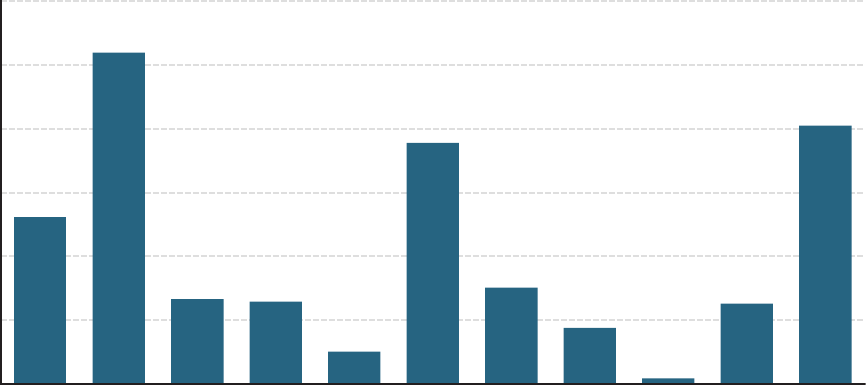
16
Figure 6. Average bank ATM withdrawal fee as percentage of daily GNI per capita,
2020, Indonesia and selected comparator countries
2.6%
5.2%
1.3%
1.3%
0.5%
3.8%
1.5%
0.9%
0.1%
1.3%
4.1%
Cambodia
China
Indonesia
Japan
Korea
Lao PDR
Ne
w Zealand
Philippines
Singapore
Thailand
Vietnam
1%
2%
3%
4%
5%
6%
Source: Compiled by authors from providers’ websites (see Appendix 2).
However, we can see in Figure 7 that the number of ATMs per population is still lower
in Indonesia than in a number of neighboring countries, and it corresponds to a lower
percentage of the population making digital payments.
In terms of geographical disparity, Figure 8 shows that the number of points of service for
regular bank accounts and BSAs—including banks, ATMs, and branchless banking agents—
is uneven across the country, implying that the costs are even higher for populations outside
Java and other urban centers.
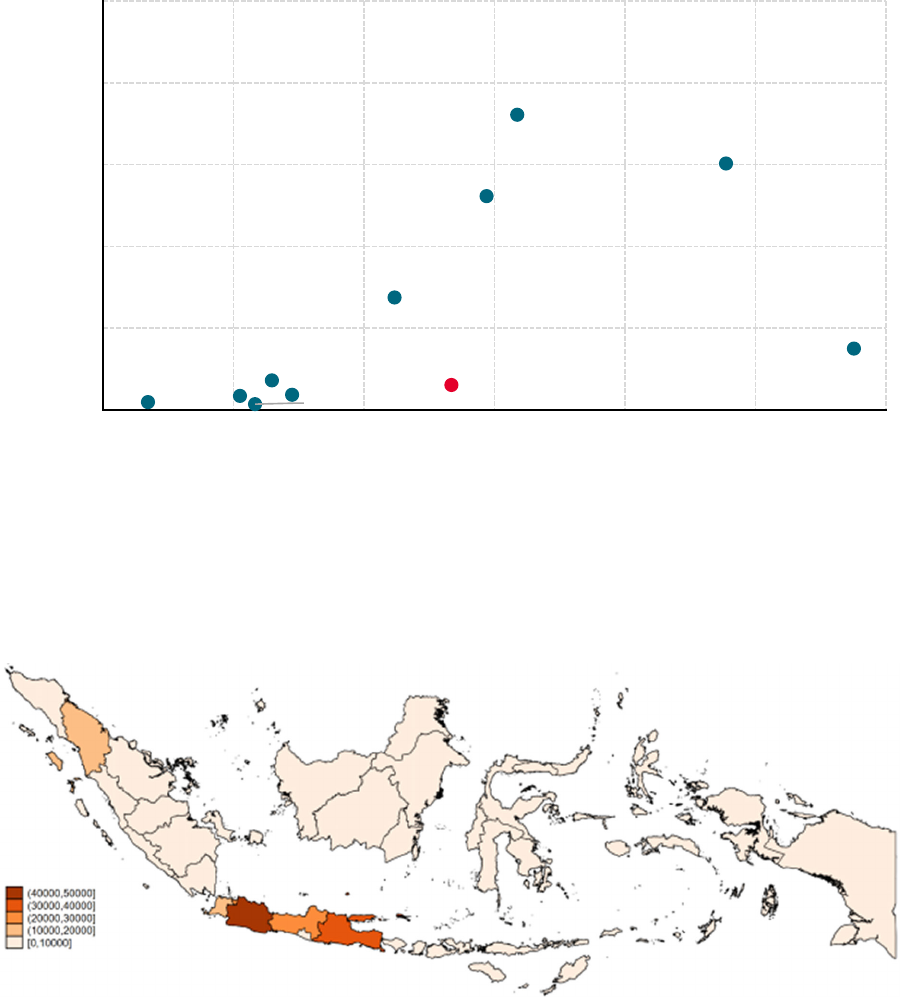
17
Figure 7. ATMs per population and usage of digital payments,
Indonesia and selected comparator countries, 2020
CHN
IDN
IND
KHM
MMR
MYS
NZL
PHL
SGP
THA
VNM
0%
20%
40%
60%
80%
100%
020406080100 12
0
Made digital payments in the past year
(% age 15+)
Automated teller machines (ATMs) (per 100,000 adults)
Source: World Development Indicators (World Bank 2020) and Findex 2017 (Demirguc-Kunt et al. 2018).
Note: India, Cambodia, and Viet Nam are the correct order of countries sorted in ascending order of ATM per
100,000 adults.
Figure 8. Number of points of service for BSAs, including banks, ATMs,
and branchless banking BSA agents, Indonesia, 2018
Source: FII 2018 (SNKI and FII 2019).
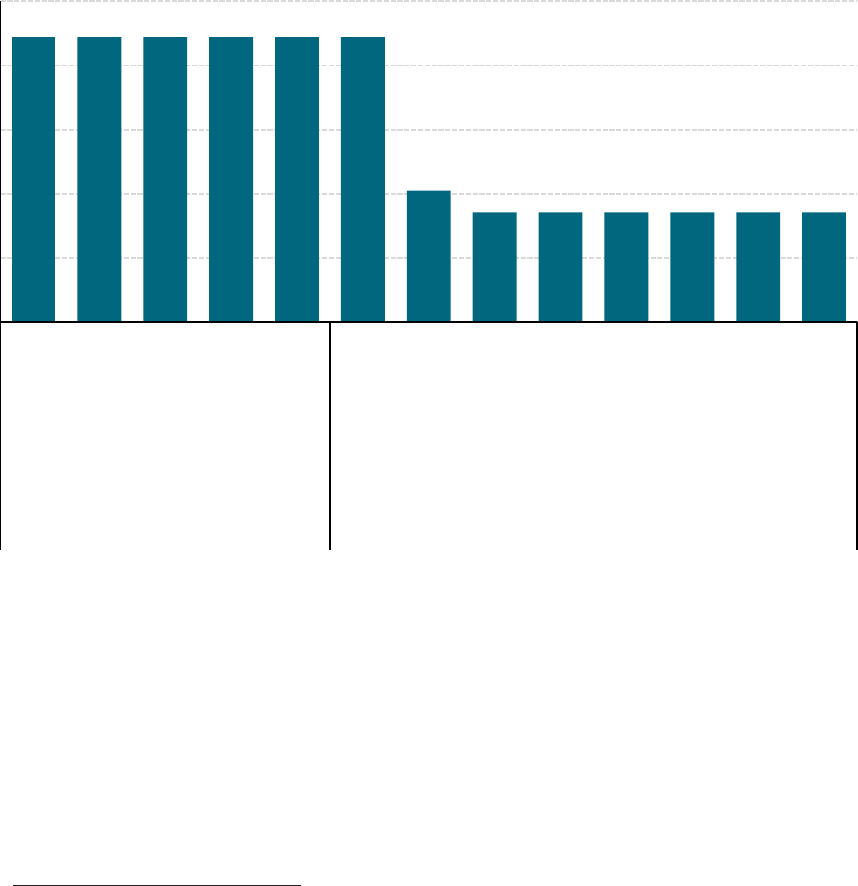
18
For e-money users, one of the most relevant prices is the e-wallet transfer fee. Figure 9 shows
the cost of transferring funds from a bank account or from an e-wallet issued by a nonbank
DSP in Indonesia. The cost shown represents the fee that a user must pay to transfer funds
to an account outside the same bank (for bank-issued e-money) or e-commerce platform.
Note that for nonbank DSPs the transfer is always to a bank account and not to an e-money
account in a dierent platform. The figure shows that for most nonbank DSPs except
LinkAja, transferring funds outside the platform is cheaper than from a bank account.
Figure 9. External transfer fees for e-wallets of selected banks and e-money providers
as percentage of daily GNI per capita, Indonesia, 2020
1.3% 1.3% 1.3% 1.3% 1.3% 1.3%
0.6%
0.5% 0.5% 0.5% 0.5% 0.5% 0.5%
0.0%
0.3%
0.6%
0.9%
1.2%
1.5%
OVO (IDN)
Mandiri (IDN)
CIMB (IDN)
BRI (IDN)
BNI (IDN)
BCA (IDN)
Bank
Link Aja (IDN)
Shopeepay (IDN)
OVO Premier (IDN)
Gopay Plus (IDN)
Gopay (IDN)
Dana Premium (IDN)
Dana (IDN)
E-Wallet
Source: Compiled by authors from providers’ websites (see Appendix 2).
Figure 10 shows the fees for transferring funds from an e-wallet issued by a nonbank DSP in
selected countries.
22
This is the cost that a user must bear to transfer funds from an e-wallet
to an account outside the e-wallet’s platform. For Indonesia, the transfer always means a
transfer to a bank account. The figure shows that the fee for transferring funds in Indonesia
is comparatively high.
22
For most countries, we have data from one provider, except for Japan, the Philippines, and Thailand, from
which we have two. For Indonesia, the data are from the major nonbank DSPs. Because the cost is nominal,
we use the cost per 1,000 transactions, converted to US dollars and shown as percentage of daily GNI.
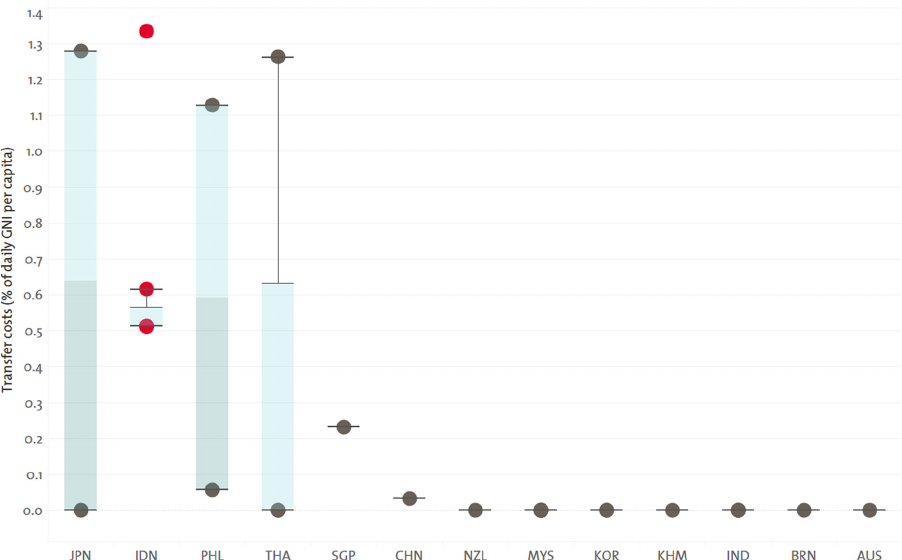
19
Figure 10. External transfer fees for e-wallet transfers, as percentage of daily
GNI per capita, Indonesia and selected comparator countries, 2020
Source: Compiled by authors from providers’ websites (see Appendix 2).
Note: For the first four countries in the figure, the box represents the 25th through 75th percentiles, and the large
dots represent the outliers. Only countries with available data are shown in the figure.
Figure 11 shows the fees for withdrawing money from a nonbank DSP across countries.
The bar for Indonesia represents the fact that in Indonesia nonbank DSPs are not allowed
to perform cash-out services. Along with the previous graph, this suggests that the binding
constraints on the expansion of e-wallet digital payment services might be on the supply side
of the decision tree.
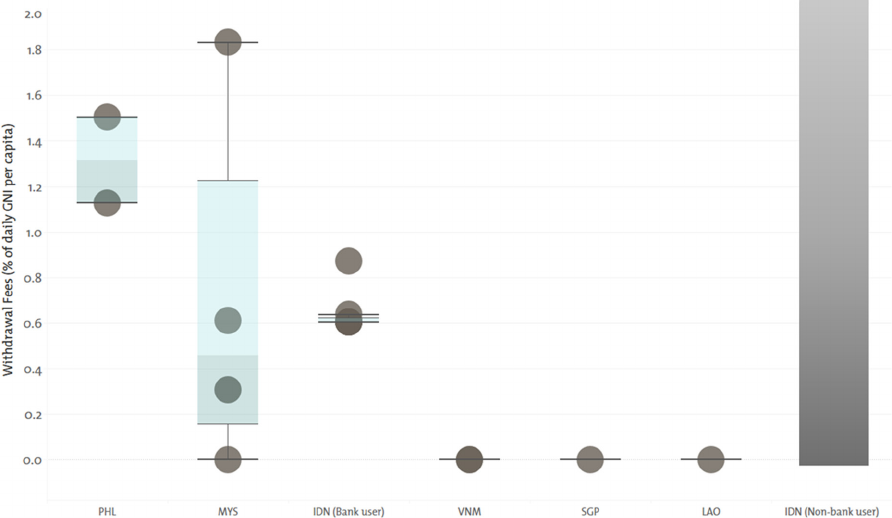
20
Figure 11. External withdrawal fee from e-wallet, as percentage of daily
GNI per capita, Indonesia and selected comparator countries, 2020
Source: Compiled by authors from providers’ websites (see Appendix 2).
Note: In Indonesia, e-money issued by nonbank DSPs cannot be cashed out. Thus, we calculated two prices
for Indonesia. For people with bank accounts, the cost of withdrawing cash from their e-wallet consists of the
cost for transferring to their bank account plus the cost of withdrawing cash from that bank account. For those
without bank accounts, no cashing out is allowed, which is represented by the dark vertical bar in the figure. For
the first four countries in the figure, the box represents the 25th through 75th percentiles, and the large dots
represent the outliers.
The fees related to the use of ATMs and e-wallets thus far point to binding constraints
on the supply side, which potentially limit the use of e-money to provide payment as well
as store-of-value services. The next set of figures shows the fees that are more relevant to
traditional store-of-value services provided by savings products.
Figure 12 shows the average fee for opening a bank account, and Figure 13 shows the average
fee for maintaining a regular savings account. Again, note that there are other, nonmonetary
costs associated with opening an account, such as access to the financial institution and
fulfilling application requirements related to KYC issues, that are not included in this analysis.
Fees charged in Indonesia are higher than in most of the other countries shown in Figures 12
and 13, again signaling that the binding constraints are on the supply side.

21
Figure 12. Average fees to open a regular savings account, as percentage of GNI
per capita, Indonesia and selected comparator countries, 2020
20.1%
19.3%
2.7%
0.0% 0.0% 0.0% 0.0% 0.0% 0.0% 0.0% 0.0% 0.0% 0.0% 0.0%
0%
Brunei
Lao PDR
Indonesia
China
India
Japan
Cambodia
Korea
Myanmar
Malaysia
New Zealan
d
Philippines
Thailand
Vietnam
5%
10%
15%
20%
25%
Source: Compiled by authors from providers’ websites (see Appendix 2).
Figure 13. Average annual administrative fee to keep a bank account, as percentage
of daily GNI per capita, Indonesia and selected comparator countries, 2020
72.5%
57.8%
49.6%
37.8%
21.4%
14.5%
1.6%
0.0% 0.0% 0.0% 0.0% 0.0%0.0% 0.0% 0.0%
0%
20
%
40
%
60
%
80%
Brunei
Lao PDR
Indonesia
China
India
Japan
Cambodia
Korea
Myanmar
Malaysia
New Zealan
d
Australia
Singapore
Thailand
Vietnam
Source: Compiled by authors from providers’ websites (see Appendix 2).
To sum up, the fees for using regular savings accounts and e-wallets point to binding
constraints on the supply side that prevent providers from oering these services aordably.
We use these findings to guide our decision tree analysis in the following sections.
22
5. Supply-side constraints on payment
and store-of-value services
We will start our analysis by going through each node of the tree, keeping in mind the
observed (relatively high) fees discussed above. In keeping with the decision tree presented
in Section 3, we will first focus on whether some of the aspects of the market structure
of banks and other DSPs impose a binding constraint on the supply side. We then discuss
whether digital infrastructure is a binding constraint and evaluate whether there are problems
with investors’ appropriability of returns. Each of these nodes has dierent subsections that
address additional relevant factors.
5.1. Market structure of banks and nonbank digital
service providers
The high fees charged for the use of a financial service and the limited availability of
the product to a large segment of the population may be driven by a problematic market
structure in which imperfect competition and/or regulation drives prices up. We consider
two key factors characterizing the market structure dynamics. First, the regulatory
environment determines whether the existing regulations treat all providers oering the same
services the same way or give rise to an unlevel playing field between banks and other DSPs.
Second, the degree of competition between the providers may also impact the provision of
digital financial services; limited competition occurs when the number of providers is small.
The resulting limited competition can, in turn, cause a lack of interoperability between digital
networks that harms customers. These two factors appear as second-tier nodes under market
structure in the decision tree, and we assess each node using the price analysis and the other
methodology principles to determine whether each constitutes a binding constraint.
5.1.1. Unlevel playing field created by regulations
As discussed in Section 2, the current regulatory environment governing digital financial
services in the country reflects the combination of a set of new regulations designed
to specifically address the relatively new industry and the legacy of existing regulations
governing the traditional banking and financial industries. In this section we identify three
key issues stemming from the current regulations that create an unlevel playing field and,
in turn, are likely to aect fees, both directly and indirectly, and limit the supply of services.
The first issue is the restriction on cash-out services (cash withdrawals) that is imposed on
some, but not all, e-money providers. The second issue is the dierent restrictions on and
policies governing how dierent providers can recruit their agents. The third one is the
dierent regulations on how providers can conduct their KYC processes of verifying their
customers’ identities. Each of these may limit providers’ ability to increase the services they
oer existing customers as well as to expand their markets on the extensive margins, thereby
restricting the scope for financial inclusion. Next, we discuss how these key issues may create
an unlevel playing field and whether the unlevel playing field creates a binding constraint for
the expansion of digital financial services.

23
Restriction on cashing out and other services. BI regulations prevent nonbank digital
financial services providers’ agents from oering cash-out services. In order to be able to
provide cash-out services, e-money issuers must apply for a completely separate license
as money remitters, whereas branchless banking agents, which also provide services for
e-money transactions, are exempted from this requirement.
23
In addition, nonbank providers
wishing to provide person-to-person (P2P) transfers through their network of agents must
have each agent individually apply for a money remittance license, which is a burdensome
task. In fact, the requirement for a separate license may be one of the barriers preventing
MNOs from getting a foothold in the e-money market in Indonesia.
24
These regulations
prevent nonbank DSPs from oering full services, which limits their benefits to potential
customers and potentially curtails the demand for the products.
25
Users of a bank-issued e-wallet can withdraw cash from the bank’s agents as well as from the
bank’s ATMs. For most nonbank e-wallet users, the only way to withdraw cash from their
account is to send the money to a bank account and then withdraw money from that account
using the bank’s ATM. This regulation means that users without bank accounts have no easy
way to take cash out of their e-wallet. This obviously has some implications on the uptake
of the product itself, as customers may perceive fewer benefits due to the service limitations.
We analyze this last issue on the demand side in Section 6.1.
Further, the extra step for withdrawing money entails other costs, beyond the direct cost of
the withdrawal fee. The necessity of taking these additional steps could prove to be wasteful
in both time and money for users, especially given that the process has to be done repeatedly.
In conventional (bank) settings, the diculty of cashing out from a bank could be the
product of a lack of ATMs in a particular area. However, an increased penetration of ATMs
would not solve the problems created by the restriction on cash-out services from e-wallets.
Research has in fact suggested that robust cash-out (and cash-in) services may be necessary
for the growth of noncash payment products such as e-money (Hernandez 2019). Where
cash is still the dominant method of payment, such as in Indonesia, e-money users need to
be able to withdraw cash easily to perform transactions that cannot be done digitally.
26
23
Branchless banking agents are managed by the local branch of the bank, which is allowed to perform all kinds
of transactions.
24
If an MNO has a remittance license, to be able to take advantage of its network of airtime suppliers, each
supplier must apply for an individual remittance license (CGAP 2010). As discussed in Section 2, other barriers to
entry for MNOs include the requirement to include funds transfer as a business activity in the corporate articles,
which proves to be prohibitive for some publicly listed MNOs.
25
One argument put forward to justify the regulation was consumer security. Unlike money in savings accounts,
the funds stored in e-money are not protected by any kind of deposit insurance. Partly because of that, the
functionality of e-money in Indonesia is geared toward payment services, in which the amounts involved are
relatively small, rather than store-of-value services. Ability to cash out may cause users to keep a higher balance
in their e-wallet, turning it, functionally, into a savings product. Granted, this argument is at odds with the
government’s push to digitize social assistance so that the poor population can start saving by not withdrawing the
full amount of the social assistance payment, in eect treating the social assistance e-wallet as a savings account.
More important, this reasoning contradicts the goal of using e-money to increase financial inclusion.
26
E-money users also need to be able to top up their e-wallets conveniently at points of service. This means easy
access to agents that can provide cash-in services is also important, as discussed next.

24
Recently, GoPay has formed a strategic alliance with one of the largest private banks, Bank
Central Asia (BCA), that allows GoPay users to withdraw funds from the partner bank’s
ATM without administrative fees and without a requirement that users have an account at
BCA. BCA charges a withdrawal fee of 5,000 Indonesian rupiahs (IDR; about US$0.35).
This fee, however, is lower than the withdrawal fee for other banks’ debit cards when using
BCA’s ATM, which is around IDR 6,500. Previously, users of a non–BCA e-wallet (or bank)
service would have to go through the extra step of moving their e-wallet balance to their
bank account first, and then withdrawing the money afterwards.
27
Applying principle 3 of the decision tree methodology to identify a binding constraint, the
discussion above shows a clear example of actors finding a way to circumvent the constraint.
There are several reasons why BCA may benefit from the partnership with GoPay. First, it
may be able to tap into the huge network of GoPay users, leading to a significant increase
in the usage of the BCA ATM network.
28
Second, since BCA is allowed to charge a fee for
these withdrawals, the partnership can be lucrative for both parties. This is, however, an
exception to a system in which generally, individuals find severe diculties in withdrawing
money from e-money services, negatively impacting their customer experience.
Finally, on top of the shadow costs, direct costs are also typically incurred by e-wallet users
transferring funds to banks. Generally, transferring to a bank incurs a small transfer fee.
While this fee is similar to an interbank transfer fee in a conventional setting, the relative
availability of ATMs in recent years has made bank accounts more attractive than e-money
options, at least in terms of cash-out services.
The combination of the above-mentioned shadow and direct costs for cashing out may well
explain the reluctance of Indonesian users to store high values of funds in their e-wallet
accounts, and hence the low prevalence of e-wallet use for nonpayment purposes in the
Indonesian market.
Note that cash-out restrictions do not apply to BSAs. BSA customers can withdraw cash
at branchless banking agents and, if the BSA account comes with an ATM card, they can
withdraw cash from an ATM. Thus, this constraint is potentially binding for nonbank
e-money services, but not for BSAs.
Restrictions on and policies governing agents’ recruitment. At least two opposing
forces are at work to create an unlevel playing field in agent recruitment. On the one hand,
under the branchless banking model, banks are allowed to recruit agents to provide digital
financial services with dierent requirements from those imposed on nonbank DSPs. In
particular, BI Regulation No. 20/6/PBI/2018 provides that while digital finance agents can
27
The extra step of cashing out—that is, having to transfer the funds to a bank first—is not the only shadow cost
associated with the process. There is also the factor of delayed receipt of the funds, since the funds transferred
to a bank are not received instantly in many cases. While OVO users can transfer funds to their bank accounts
instantaneously, other users (e.g., GoPay and ShopeePay users) are subject to a wait of one or more working days
before the funds are successfully obtained by the receiving bank account.
28
Unfortunately, we cannot find data on any increase in GoPay users resulting from this new collaboration.

25
be either individuals or legal entities, only banks can recruit individuals to be their agents.
These agents serve as individual contractors and typically add digital financial services to their
existing businesses. This means that a small and informal corner shop that meets a bank’s
internal requirements can serve as a bank agent. Nonbank DSPs, in contrast, can establish
partnerships only with legal entities, which typically means larger and more formal stores or
businesses; this substantially limits their expansion. Data from the country’s Village Potential
Statistics 2018 show the existence of around 3.2 million small stores, including informal
ones, of which only around 43,000 (about 1.3 percent) are legal entities or formal businesses.
Exceptions are given to “incidental agents,” such as GoJek drivers. What this means is that
agents of banks can have farther reach in the communities of potential users (especially low-
income consumers and those in rural areas) while agents of nonbank DSPs are more likely to
operate in urban and semi-urban areas. To the extent that the acquisition of new agents helps
banks expand on the extensive margin, this restriction seems to disadvantage nonbank DSPs.
Further, this restriction means that users of e-money issued by nonbank DSPs, especially in
rural areas, are facing higher shadow prices to conduct payment transactions because their
agents are less likely to be found nearby, and consumers have to cover more distance to
reach them.
Since the branchless banking agent program was launched in 2015, the number of bank
agents has grown from around 60,000 in the first year to more than 1 million in May 2019
(BCG 2019).
29
However, despite this apparent success, transaction volume is low, with a
median of 4 transactions per agent per day in 2017, compared with 15 in Pakistan and 30 in
Bangladesh, Tanzania, and Uganda. Profitability is low (as further discussed in Section 5.3),
and more than 30 percent of agents are dormant, having done no business at all after being
recruited. A study conducted in 2018 on the harmonization of BSA and e-money regulations
suggested that at the branch level, the majority of bank managers find branchless banking
agents to involve too much cost for low returns.
30
Regulation governing the exclusivity of
agents, discussed in Box 1, however, seems also to be working in favor of banks.
29
The other policy that aects growth in the number of agents, favoring banks, is the policy to use agents to
disburse government social assistance. Since 2018, state-owned banks have been given mandates to use their
existing agents and recruit new agents to disburse social assistance electronically.
30
The study, commissioned by the country’s Financial Services Authority (Otoritas Jasa Keuangan, or OJK) and
BI, aimed to provide input on harmonizing the often conflicting regulations of the LKD e-money program,
which is under BI and the BSA program (Laku Pandai). Harmonization of the regulation on agents is needed to
improve the eciency and eectiveness of LKD and Laku Pandai implementation, in order to support achieving
the national financial inclusion target.

26
Box 1. Exclusivity of agents
By regulation, branchless banking agents in Indonesia are exclusive to a bank, allowing
banks to invest in their agents without fearing that other banks will free ride on the
investment. This regulation may have impacts on the competition between banks over
e-money as well as other services oered, such as savings and transfers. As discussed above,
nonbank DSPs are barely involved in the market for e-money in rural areas, partly because
of restrictions on the types of agents they can recruit. Indeed, one of the arguments for
exclusivity is the diculty of finding qualified agents in some areas, an issue that potentially
can be addressed by relaxing the restrictions on agent recruitment.
For nonbank DSPs, there is no regulation that imposes exclusivity between DSPs and the
respective e-commerce platforms. Exclusive collaborations are formed for commercial
reasons, whereby DSPs have all the incentives to be the sole payment providers for
e-commerce platforms and can negotiate terms that are acceptable to both parties.
Exclusivity matters less for users, who can easily download apps for dierent payment
platforms.
The restrictions on agent recruitment are also related to coordination failures, a potential
constraint that we will expand on later. Loosening the restrictions to allow nonbank DSPs
to recruit individual agents in communities with unbanked populations is expected to spur
nonbank DSPs to enter the market when there is a critical mass of users. At the same time,
potential users may not be interested in taking up the new financial products unless there are
enough points of service where they can perform transactions. Limiting the type of agents
that can operate in the community—including those who perform door-to-door services,
such as GoJek drivers—may prevent a critical mass from forming.
31
However, even if
these types of agents are allowed to operate in the communities, the restriction on cash-out
services, discussed earlier, will likely still prevent large gains in uptake.
Unlevel playing field in KYC processes. The need for providers to adequately identify
customers in order to fulfill regulatory as well as internal requirements is an additional
constraint holding down the growth of digital payment services at the extensive margin. As
in many countries, the KYC process in Indonesia is operated under a tiered system in which
the document requirements depend on the services oered or the risk involved (Gelb and
Castrillón 2019).
For example, unregistered card-based e-money does not require any identification. Basic
payment accounts with GoJek and OVO require applicants only to download the respective
apps on their smartphones and fill in their names and email address in the online application
form. However, in order to get more types of services, such as the ability to carry a higher
balance, make transfers to bank accounts, and cash out at bank ATMs without a card, the
31
The story about the expansion of GoJek ride-hailing services and GoPay payment in urban areas in Indonesia
is indeed an example of the application of principle 2: loosening of a constraint that resulted in a huge increase in
uptake of a new digital payment product.
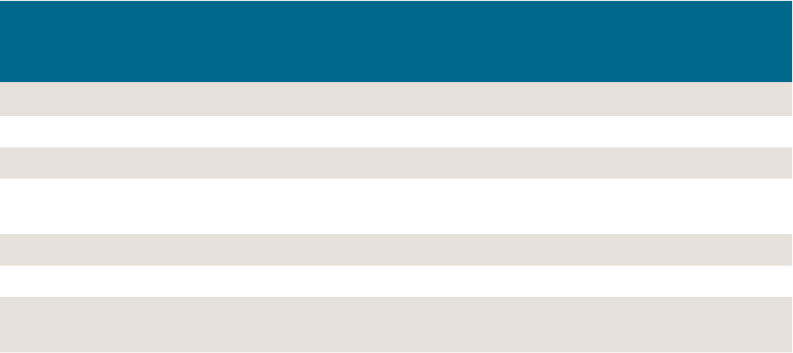
27
requirements are more stringent. Upgrading to these “premium” accounts requires that the
applicant also supply an ocial national identification card—a Kartu Tanda Penduduk (KTP)
containing name, birthplace and birthdate, and address, or e-KTP, the electronic version
of KTP containing the national identity number (NIK) that can be linked with central
storage where verified fingerprint data are stored. Opening other services, such as a BSA,
also requires a KTP and a paper application form. Regular savings accounts, in addition to
requiring more documents, typically also require users to meet face-to-face with the bank.
Table 2 summarizes these requirements.
Table 2. Requirements to open an account, Indonesia, 2020
Requirement BSA
(Laku
Pandai)
Regular
saving
account
Card-
based
e-money
Server-
based
e-money
Premium
server-based
e-money
Paper application form
Online/app-based form
Ocial identification
Tax identification number (Nomor
Pokok Wajib Pajak, or NPWP)
Minimum deposit
Card purchase fee
Self-verification (photo-or
video-based)
Source: Compiled by authors from banks’ and DSPs’ websites (see Appendix 5).
We use two measures as indicators of whether the KYC process constitutes an important
constraint. First, we consider the costs of onboarding of customers, merchants, and agents
into the network; among these, the cost of identity verification against the civil registry
database is an important one. The second indicator is the time it takes for the onboarding
process, where again, identity verification is an important component. Table 3 summarizes
the cost and time needed to conduct the KYC process for e-money, a BSA, and a BSA
targeted for social assistance.
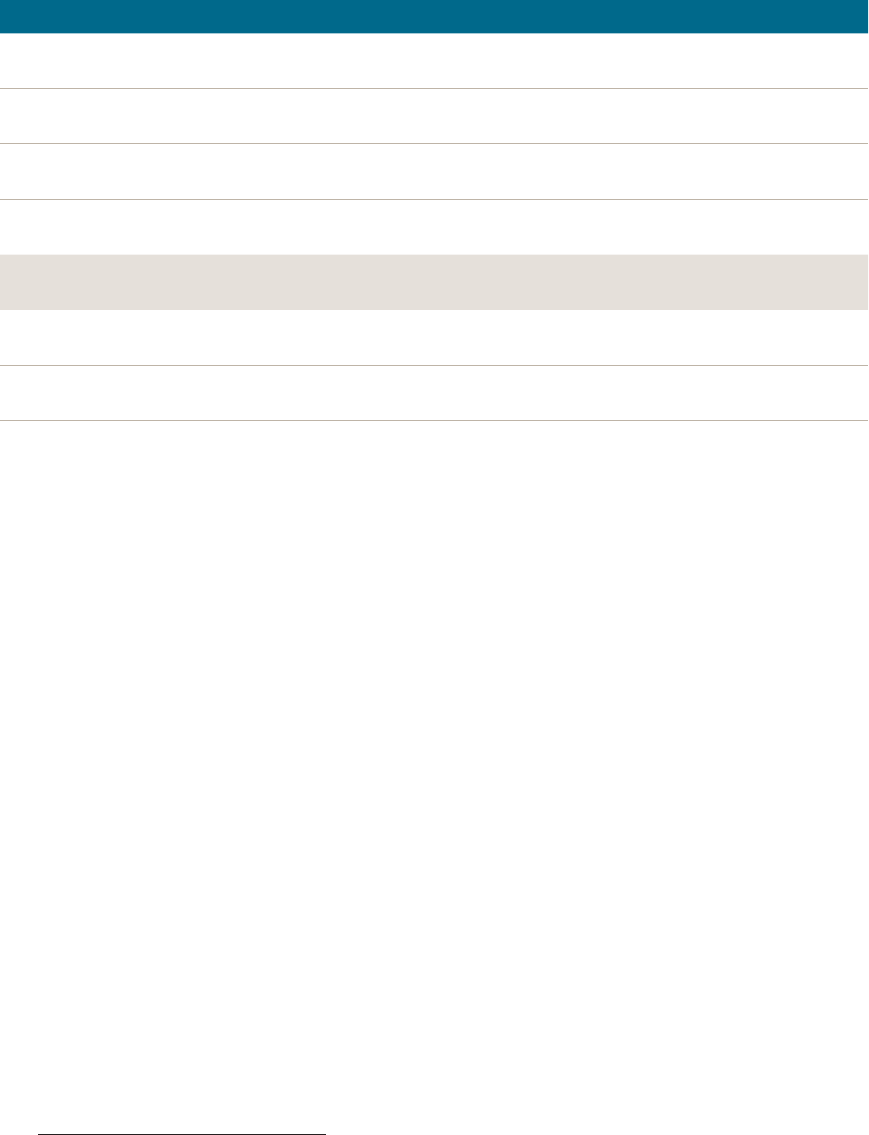
28
Table 3. Costs and time for KYC process
Category Nonbank e-money BSA BSA for social beneficiary
Cost of verifying
customer’s ID
IDR 1,600–IDR 16,000
(US$0.11–US$1.10)
IDR 6,200 (US$0.43) IDR 400 (US$0.03)
Cost of verifying
agent’s/merchant’s ID
IDR 3,000–IDR 32,000
(US$0.21–US$2.20)
IDR 1,650 (US$0.11) IDR 1,650 (US$0.11)
Cost of onboarding
customer
IDR 1,600–IDR 16,000
(US$0.11–US$1.10)
IDR 13,800–IDR 35,000
(US$0.96–US$2.43)
IDR 24,000–IDR 64,000
(US$1.66–US$4.44)
Cost of onboarding
agent/merchant
IDR 4,500–IDR 115,000
(US$0.31–US$7.97)
IDR 170,000–IDR 195,000
(US$11.78–US$13.52)
IDR 170,000–IDR 195,000
(US$11.78–US$13.52)
Total cost IDR 10,700–IDR 179,000
(US$0.74–US$12.41)
IDR 191,650–IDR 237,850
(US$13.28–US$16.49)
IDR 196,050–IDR 261,050
(US$13.59–US$18.09)
Time for onboarding
customer
Up to 2 days Up to 14 days Up to 60 days
Time for onboarding
agent/merchant
Up to 10 days Up to 5 days Up to 5 days
Source: Salyanti et al. (2020).
The table shows some dierences in the monetary costs and time between banks and
nonbank DSPs. The wide range of costs to onboard customers and merchants primarily
reflects the variation in distance to the nearest provider. Onboarding BSA customers who are
social assistance beneficiaries is more costly due to the need to check the names against the
list of program recipients, which further reduces the profitability of agents and may explain
the limited success that this program has had.
Nonbank DSPs face further restrictions in terms of the quantity of verifications they can
do within a period of time (i.e., there is a monthly quota on the checks they can request)
(Salyanti et al. 2020). Nonbank DSPs are allocated much smaller quotas than banks. While
the cost of KYC processes for nonbanks is lower than for banks, the shadow cost of
performing KYC faced by nonbank DSPs is higher than the price faced by banks.
32
Finally, there are also some ambiguities in the regulations about who can perform KYC.
Regulations on agent banking do not allow banks to outsource their KYC processes,
forbidding them to use their agents to conduct KYC for store-of-value products. However,
regulations on e-money allow banks to use their agents, including the small informal
stores in rural areas, to conduct KYC for e-money accounts. While nonbank DSPs’ agents
can conduct KYC to open e-money accounts, the restrictions on who can be DSPs’
agents, discussed above, mean that only formal stores that are legal entities can conduct
KYC for DSPs.
32
The shadow price includes higher costs faced by nonbank DSPs due to the longer application process to gain
the “right to access” the relevant data, the requirement to renew the application more frequently than banks, and
the smaller quota of checks that are allocated to them within a time period (Salyanti et al. 2020 and discussions
with digital finance providers).
29
Altogether, the current regulations on cash-out services, agent recruitment, and KYC tip
the playing field in favor of banks (and their agents) at the expense of nonbank DSPs. We
consider these unfortunate regulations to constitute a binding constraint on the provision of
e-money services.
5.1.2. Limited competition and entrenched lack of interoperability between providers
Insucient competition, either within the banking sector or between banks and nonbank
DSPs, could prevent the widespread usage of digital financial services. By restricting new
players from entering the industry and keeping service fees high, insucient competition
could limit the industry’s ability to fill the needs of the financially excluded population. In
this section we examine whether limited competition prevents new players from entering
the industry. To this end, we look at the dynamic interaction of providers within the banking
sector and between banks and nonbank DSPs.
In 2019, there were around 100 commercial banks and 1,709 rural and credit banks (BPS
2021a). Despite the large number of banks, just a few large banks control most of the market
share. Figure 14 shows that the four top banks—BRI, Mandiri, BCA, and BNI—account
for more than half of total assets in the country, with no others accounting for more than
4 percent. Moreover, the market share of state-owned banks (Mandiri, BNI, BRI, and BTN)
in the industry has been significant. In terms of assets, the state-owned banks account
for 47 percent of market share. However, the trend of asset concentration in the top five
banks has declined in the last few years (Figure 15). This may suggest that despite the high
degree of asset concentration, the industry is moving toward a relatively more competitive
environment.
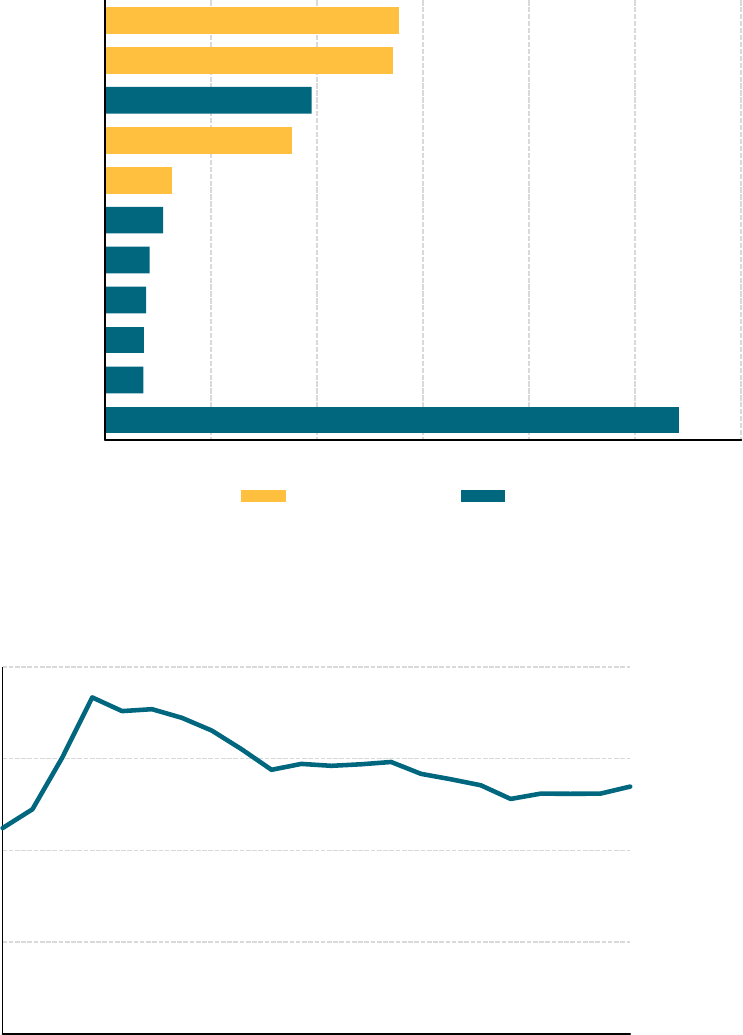
30
Figure 14. Top 10 commercial and retail banks by total assets, Indonesia, 2020,
IDR trillions (percentage of total assets in parentheses)
(31.2%),
2,705.90
(2.1%), 182.2
(2.1%), 185.2
(2.2%), 194.4
(2.4%), 211.3
(3.2%), 274.4
(3.6%), 314.6
(10.2%), 880.1
(11.2%), 975.1
(15.2%), 1,359.40
(16%), 1,387.80
0 500 1,000 1,500 2,000 2,500
3,000
Others
Bank OCBC NISP
Bank Tabungan Pensiunan Nasional
Bank Danamon Indonesia
Bank Pan Indonesia
Bank CIMB Niaga
Bank Tabungan Negara (BTN)
Bank Negara Indonesia (BNI)
Bank Central Asia (BCA)
Bank Mandiri
Bank Rakyat Indonesia (BRI)
State-owned banks Private banks
Source: Fitch (2020).
Figure 15. Five-bank asset concentration (percentage of all bank assets),
Indonesia, 1996–2016
0%
20%
40%
60%
80%
1996 1999 2002 2005 2008 2011 2014 2017
Source: World Bank (2020).

31
Another concern is that the dominant position of the top five banks (by assets) could
prevent the expansion of financial services to the underserved, as these banks may focus
only on currently served customers, who are perceived to be more profitable. However,
the government has required these banks to extend banking services to unbanked groups
through government programs. For example, after the Indonesian Financial Services
Authority (or OJK, for Otoritas Jasa Keuangan) launched its flagship program, the BSA (or
Laku Pandai), in March 2015, only six banks participated in the early stage of the program
(June 2015), but these did include the five largest (see Table 4).
Table 4 shows that within six months after the program launched, the number of banking
agents had increased by 1,528 percent. The number of BSAs increased from around 35,000
to more than 1.2 million, skyrocketing by 3,282 percent. The rapid increase of agents and
BSAs was due to participation of the top five banks plus Bank Tabungan Pensiunan Nasional
(BTPN, the national pension savings bank) and one regional development bank, Bank
Pembangunan Daerah (BPD) of Kalimantan Timur state. Recently, all state-owned banks
were tasked with channeling social assistance through their branchless banking agents, which
has led to further expansion of agent networks. It appears that the top banks have played
a central role in expanding financial services to unbanked groups, and we did not find any
evidence that the concentration of assets in them has negatively impacted competition in the
banking industry.
Table 4. Progress of Laku Pandai (BSA) program from June to December 2015
Indicator June 2015 September 2015 December 2015 Change, June to
December 2015
Bank participants Bank Mandiri, BRI,
BNI, BTN, BTPN,
and BCA
Bank Mandiri,
BRI, BNI, BTN,
BTPN, and BCA
Bank Mandiri, BRI, BNI,
BTN, BTPN, BCA, BPD
Kalimantan Timur
+1
Agents 3,734 19,411 60,805 +1,528%
Accounts 35,984 1,061,076 1,216,952 +3,282%
Source: Otoritas Jasa Keuangan (OJK) (2020).
When we look at the competition between banks and nonbank DSPs, we find that they
collaborate with each other to extend the services available to their own consumers, which
may suggest that there are not significant competition constraints. For example, as discussed
earlier, BCA collaborates with GoPay, allowing GoPay customers to cash out their money
using BCA’s ATMs at a reduced cost. BRI, the largest state-owned bank, collaborates with
the fintech ecosystem such as Investree, one of the largest fintech companies focusing on
providing loans. Indeed, the rapid growth of nonbank DSPs has led banks to improve their
own digital payment services. For example, after BI launched QRIS (the Quick Response
Indonesia Standard code), allowing interoperability of payments via QR codes, private banks
like BCA innovated by integrating QRIS in their BCA mobile app.
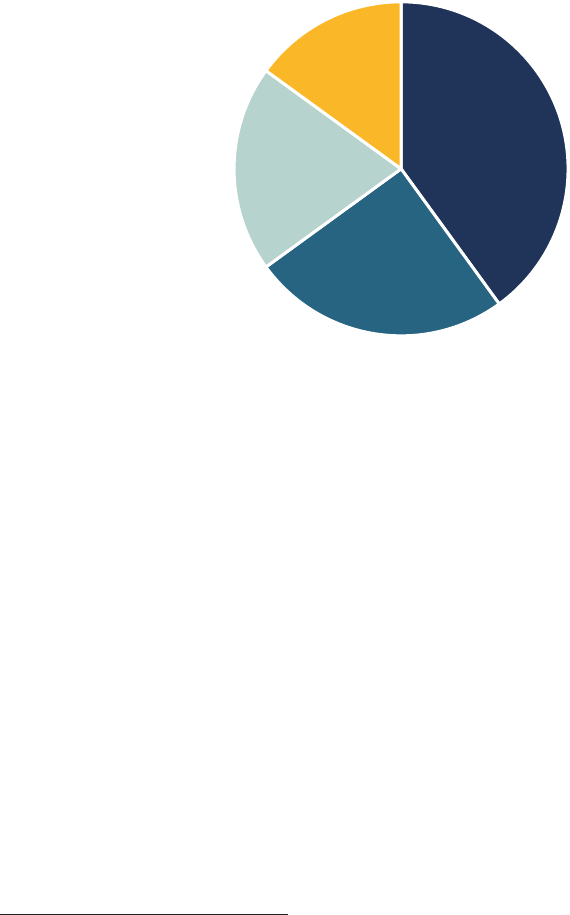
32
Regarding competition within nonbank DSPs, we also see that the explosion of DSPs
in recent years reflects a healthy competition among them. As of 2020, there were 51
companies with e-money licenses, around 70 percent of them nonbanks. Part of the rapid
growth can be attributed to a relatively easy process to obtain a license. For example, in
addition to being a legal entity, the company applying for the license must have a float fund
of around IDR 1 billion (US$67,568), which is not particularly high.
33
Despite this increasing
rate of new entrants, the e-money market is dominated by three players (Figure 16); similar to
the banking industry, however, we do not observe serious competition problems.
Figure 16. E-money transaction market shares, Indonesia, 2019
Ovo, 40
%
Gopay, 25%
Dana,
20%
Others, 15%
Source: Lesmina and Noverdanius (2020).
To summarize, despite the high concentration of assets in a few providers, both banks and
nonbank DSPs enjoy relatively healthy competition in providing digital financial services.
The top banks have participated in the early stage of the government program to extend
banking services to the underserved population, and DSPs have grown rapidly and created
a strong competitive environment. This appears to suggest that competition is not a binding
constraint.
In addition, we also observe that banks and nonbank DSPs have collaborated with each other
to improve interoperability. Individuals can send payments or transfers through multiple
applications or e-money, though there are some fees to conduct such transactions. However,
payment systems, including e-money, are fully interoperable across DSPs—both banks and
nonbanks—as described in Box 2.
33
The process, however, may take at least six months. Specifically, new applicants enter a regulatory “sandbox,” in
which authorities observe, monitor, and test their business models (Emerhub 2018).

33
Box 2. Interoperability in digital payments
A potential constraint that could limit digital financial inclusion is lack of interoperability,
which leads to lower demand for digital financial services. Lack of interoperability can
be due to limited competition; given the evidence in this section on how dominant some
players are in the Indonesian market, we may expect this to be a problem that harms user
experience.
Observing how interoperability has evolved, we see that Indonesia’s path reflects a situation
described by Claessens and Rojas-Suárez (2020). In the early stage, the government did not
impose interoperability, allowing private DSPs to invest in their networks through their own
platform ecosystems. However, as the networks became more established, the government
announced measures to promote interoperability. In addition, all players involved in
digital payment services, including banks, nonbank DSPs, and even MNOs, have strong
cooperation between them in the form of a “full integration model” (Bourreau and Valletti
2015) that is exemplified by two recent policy directions.
The first policy change is the introduction of the National Payment Gateway (known as
GPN, for Gerbang Pembayaran Nasional) by the central bank in 2019, which is expected
to improve the interoperability and switching of the national payment system. GPN is
targeted to increase the eciency of card-based transactions and reduce transaction costs.
GPN uses domestic payment network firms that charge smaller fees than the multinational
payment network companies. This is one of the major ways in which the program lowers
transaction fees.
The second policy direction to improve interoperability in mobile payments is QRIS,
launched by BI (the country’s central bank) in 2019. With QRIS, merchants need only a
single code that can be used for payments by customers with dierent e-money platforms.
BI reported that by 2020, around 6 million merchants will have joined QRIS, 85 percent of
them micro, small, and medium enterprises (BI 2021c).
Although the policy promotes interoperability through BI’s channels, such as GPN or
QRIS, there is also close cooperation between DSPs (banks, nonbanks, and MNOs) outside
those channels, suggesting a model of full interoperability. This can be detected in the
interoperability between LinkAja—a platform owned by Telkomsel (the MNO subsidiary
of the state-owned PT Telkom) and state-owned banks—and GoPay, a nonbank DSP.
Figure 17 illustrates how customer A, who has a LinkAja account, can transfer money to
customer B’s GoPay account. This process is conducted automatically. Despite having a
bank in the middle of this process, the transfer cost is much lower than interbank transfer
costs (more than 50 percent cheaper). In Indonesia digital payments are fully interoperable,
and we therefore conclude that interoperability is not a constraint.

34
Figure 17. Transfer between e-money providers
Transfer from
customer A's
LinkAja account
LinkAja
Specific code
for escrow account
of GoPay plus phone
number for GoPay
account of B
Bank
Permata
Customer B's
GoPay account
receives money
GoPay
Source: Authors’ compilation based on information uploaded in Ecaraku (2021)/https://ecaraku.com.
5.2. Insufficient or poor private digital infrastructure
The low usage of digital financial services could stem from poor digital infrastructure, since
such infrastructure is necessary for digital financial inclusion.
34
If the population does not
have access to aordable digital infrastructure, they naturally will not be able to access digital
financial services. In this section, we investigate whether poor digital infrastructure is a
binding constraint on the use of digital financial services.
In the last five years, Indonesia has seen a rapid adoption of digital technology and digital
devices. In 2015, around 56.92 percent of the population used mobile phones—including
both smartphones and feature phones. By 2019, 63.5 percent of the population had used
a mobile phone, an increase of 6.58 percentage points within four years. We also saw a
rapid increase in the use of the Internet, from 21.98 percent of the population in 2015 to
47.69 percent in 2019, an increase of 25.7 percentage points in the same period (BPS 2021b).
The same data show that most of those who accessed the Internet, around 91.45 percent,
accessed it through cellular phones.
The rapid adoption of digital technology can be mainly attributed to innovations in
information and communication technology that have made telecommunication devices
more aordable.
35
Simultaneously, the development of digital infrastructure has been quite
extensive and continues to play a central role in expanding digital access.
Figure 18 shows that the coverage of 3G and higher mobile phone service—a critical digital
infrastructure for supporting app-based e-money—is rather significant. At the country level,
digital infrastructure does not appear to be a binding constraint for the use of digital payment
services, though it most likely was in the past. Still, as we dive into the quality of the networks
across the nation, we see substantial variation across major islands.
34
For example, application-based transactions conducted through smartphones need 3G or higher networks to
operate eciently.
35
Data from the National Socio-economic Survey 2019 (BPS 2019a) show that the average annual spending
on cell phones is around IDR 1.34 million (US$89.50 at the exchange rate of US$1 = IDR 14,925), or about
2.55 percent of average annual household spending.
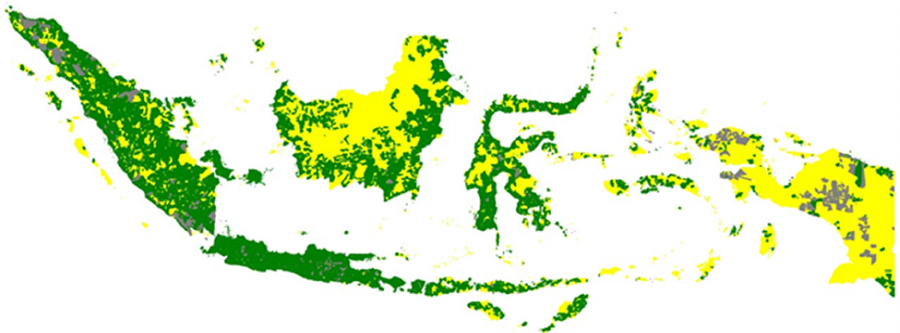
35
Figure 18. 3G and higher network coverage by village, Indonesia, 2018
Source: Calculated from PODES 2018 (BPS 2020b) at village level.
Note: Green indicates 3G and higher coverage, yellow below 3G coverage, and gray no data.
Two factors could explain this wide variation in the quality of digital infrastructure.
First, it could be driven by limited competition in the MNO market in which, in order to
maximize profits, the dominant players provide fewer services than they would in a perfectly
competitive market. Another possibility is that infrastructure is too costly to operate privately,
leading to subpar network quality in some areas.
5.2.1. Competition in the MNO market
Indonesia’s mobile operator market has a significant number of players. By 2020, there
were seven mobile operators competing in the Indonesian market: Telkomsel, Indosat, XL
Axiata, 3 Indonesia, SmartFren, Bakrie Telecom, and Internux (Bolt). It is worth noting that
Telkomsel is a subsidiary company of PT Telkom, the only state-owned enterprise operating
telecommunication in the country. While the telecommunication services oered by Telkom
Indonesia are rather extensive, the backbone of its revenue and profit comes from its mobile
subsidiary, Telkomsel.
Telkomsel has built extensive mobile networks across the country. An estimate suggests
that its 4G network reached more than 70 percent of the population in 2017. It also has
the widest network coverage, with estimated 2G coverage of around 95 percent of the
population and 3G coverage of around 60 percent.
Because of its extensive mobile infrastructure, Telkomsel reaped the lion’s share of
the mobile market in Indonesia. By 2018, it was estimated that the share of Telkomsel
was around 50.4 percent of the total mobile service market (de Rosbo 2020), followed
by Indosat Ooredoo, with 16.7 percent, and then 3 Indonesia, with 15.1 percent, and
XL Axiata, with 13.8 percent (Table 5).
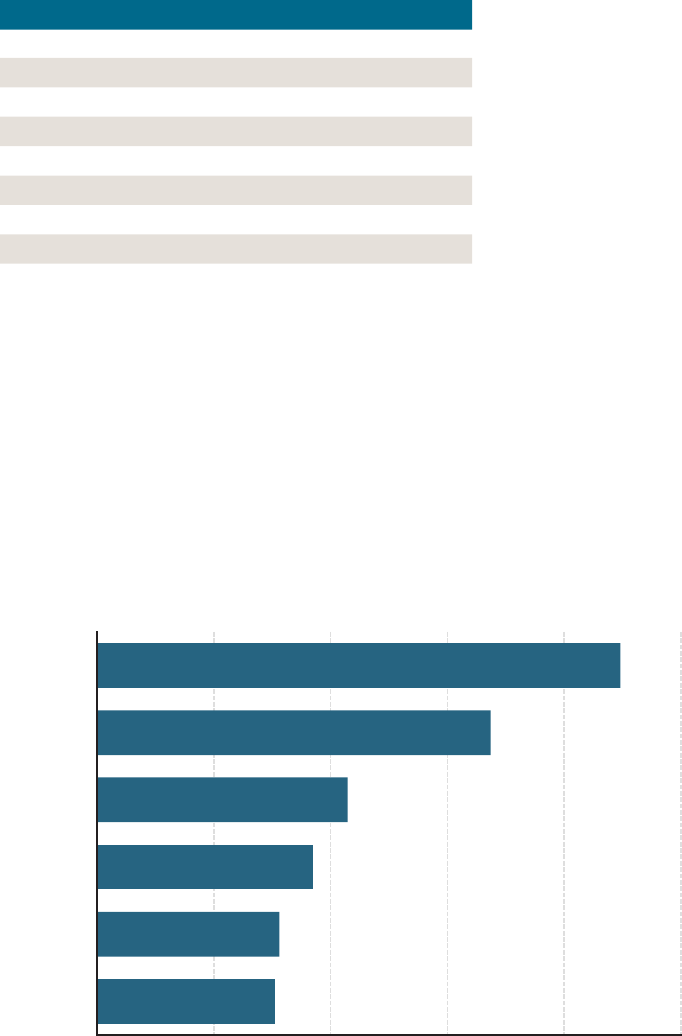
36
Table 5. Market share of MNOs, Indonesia, 2018
Operator Subscribers (million) Market share
Telkomsel 193.0 50.40%
Indosat Ooredoo 64.1 16.70%
3 Indonesia 58.0 15.10%
XL Axiata 52.9 13.80%
SmartFren 10.0 2.60%
Bakrie Telecom 1.0 0.30%
Internux (Bolt) 3.9 1.00%
Total 382.9 100.00%
Source: de Rosbo (2020).
Although the MNO market has been dominated by a single player, PT Telkom and its
cellular subsidiary PT Telkomsel, it still appears to be competitive. To attract new customers,
MNOs oer various data packages at relatively low prices, resulting in price wars (Gibran
2010). Figure 19 shows that most MNOs charge similar prices for Internet data, except for
Indosat and Net 1, which are more expensive. By applying principle 1 of the decision tree
methodology, we find that the relatively competitive prices in the MNO market suggest that
(limited) competition is not a constraint.
Figure 19. Average price per 100 gigabytes of data
(converted to US dollars), Indonesia
0.0015
0.0016
0.0018
0.0021
0.0034
0.0045
000000
Smartfren
XL (XL Axiata)
Tri (Hutchinson 3 Indonesia)
Telkomsel (Telekomunikasi Seluler)
Indosat Ooredoo (Indosat)
Net1 (Sampoerna
Telekomunikasi Indonesia)
Source: Compiled by authors. Complete sources are provided in Appendix 6.
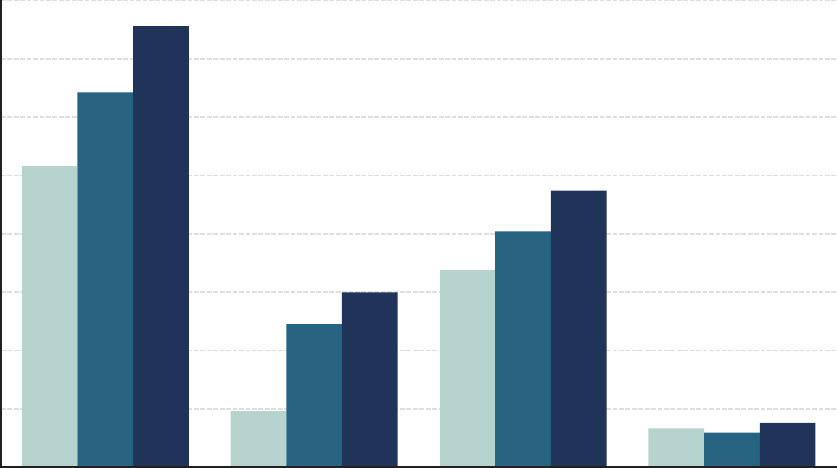
37
5.2.2. Is digital infrastructure too costly to operate privately?
Observing the rapid development of infrastructure in the last five years, we conclude that
despite the high costs involved in their operations, the MNOs have been able to generate
significant profits from expanding networks. As an example, there has been rapid growth
in the number of base transceiver stations (BTSs), a critical cellular infrastructure. Between
2017 and 2018, for example, BTSs owned by PT Telkomsel grew by 18 percent, from around
160 thousand to almost 190 thousand BTSs; other companies expanded their BTSs as well
(Figure 20).
Figure 20. Number of BTSs by provider, Indonesia, 2016–2018
129
24
84
17
161
61
101
15
189
75
119
19
0
25
50
75
100
125
150
175
200
Telkomsel Indosat XL Smartfren
Thousands
Source: Katadata (2019).
MNOs continue to expand and develop their networks, suggesting that the MNO market
is not yet mature and that providers continue to find enough profit to build necessary
infrastructure. But they mostly expand the infrastructure in densely populated regions
and Java, which can again be noted from the previous figure above (see Figure 18). In
geographically challenging and less populated regions, the digital infrastructure expands
slowly. Perceived low profit and high sunk costs prevent MNOs from serving these areas.
Although the development of digital infrastructure has been rapid in recent times, the quality
of the country’s networks is uneven. Better networks are concentrated in Java and Sumatra
while most of the eastern part of Indonesia has less reliable access (see Figure 18). This
correlates with the distribution of financial services that rely on digital infrastructure. The
concentrated digital infrastructure is positively associated with the high concentration of
financial services in certain areas, leaving behind rural and geographically challenging areas.

38
From this finding, we think poor digital infrastructure is a constraint that is binding in certain
areas, although not at the national level.
A way to overcome these issues that aect advanced networks and smartphones would be to
use simple mobile phones. However, the uptake of digital financial services through simpler
mobile money services like the ones we observe in East Africa has been largely unsuccessful.
Box 3 provides a summary of past fruitless eorts to use simple digital infrastructure to
provide digital financial services.
Box 3. The failure of feature phone–based E-money
In the years from 2000 to 2010, Indonesia’s MNOs attempted to provide financial services
through feature phone–based e-money. In 2007, PT Telkomsel and Indosat developed
mobile money. Telkomsel launched T-Cash and Indosat created Dompetku. Both
products allow customers to make retail payments. MNOs also had an interest in tapping
potential business from remittances. With the extensive outreach of digital infrastructure
networks—greater than that of banking services—they attempted to provide P2P transfer
services through telecommunication infrastructure, which was expected to generate
substantial profits. Further, BI also had an interest in increasing the use of formal transfer
channels among migrant workers. To encourage these services, BI set a regulation aimed at
encouraging nonbank providers to oer remittance services.
However, instead of promoting MNOs to enter the digital financial services, BI Regulation
(Peraturan Bank Indonesia) No. 8 Year 2006, concerning money transfers, had an
unintended impact on the players (Flaming, Prochaska, and Staschen 2009). On the one
hand, it allowed nonbanks to provide money transfer services as long as they obtained a
remittance license to oer P2P transfers for both domestic and international customers.
Yet on the other hand, some provisions of the regulation required MNOs, as nonbank
DSPs, to explicitly stipulate in their articles of association or incorporation that fund
transfer activities are one of their business activities. Thus, to comply and get the license,
MNOs had to change their articles.
This proved to be a dicult process, as companies had to ask permission from all
shareholders to change their articles. PT Indosat was one of the MNOs that faced
diculties in changing its articles because it was listed on the US stock market. As a result,
PT Indosat did not get the remittances license; instead, it received a license to provide
e-money. This is an example of how regulations may unintentionally create an unlevel
playing field.
The MNOs’ feature phone–based e-money, which went beyond the initial focus on
remittances to become basically typical mobile money, did not gain a critical mass of users.
This was mainly due to having more limited transaction services than existing commercial
bank–based mobile banking. Some estimated that T-Cash had no more than 80,000
accounts (Flaming, Prochaska, and Staschen 2009). Later, PT Telkomsel shifted T-Cash to
LinkAja, a server-based e-money. PT Indosat also abandoned its mobile money product.

39
In 2018, MNOs attempted to make a comeback through their e-wallet services. In 2018
PT Indosat launched Paypro and XL Axiata introduced XL Tunai. These e-wallet products
could be accessed using either a smartphone or a feature phone, but they did not last long.
Both are now defunct.
We see here that MNOs have entered and exited the e-money market a couple of times,
which may suggest low barriers to entry into the industry. This reinforces our previous
point that the competition level of the players providing e-money is not a constraint and
there must be other issues behind this failure. We have seen previous evidence of an
unlevel playing field that creates a barrier for MNOs to provide digital financial services. In
subsequent sections, we will show that this barrier combines with customers’ perception of
low benefits to create a coordination problem constraining the usage of e-money services.
More recent attempts show some promising, but limited, results. Some banks have started
to oer e-wallet services that combine both server-based and feature phone–based
e-money in a single platform. CIMB Niaga, for example, launched a cell phone savings
account that can be accessed by either a smartphone or a feature phone and does not
require the account holder to have a bank account at CIMB Niaga. It appears that other
banks are beginning to consider the same service. Whether this will be another failure
of feature phone–based mobile money in Indonesia remains to be seen, but current
constraints seem to suggest that it will not be a panacea for DSPs or for store-of-value
services.
5.3. Low appropriability of returns
Poor institutions and weak governance, as well as distortionary taxes and other policies, may
prevent digital finance providers from fully appropriating the returns from their investments,
and thereby discourage the supply of DSPs. Problems verifying the identity of customers,
related to KYC issues, can also limit the appropriability of returns. We now evaluate these
two nodes of the decision tree, as well as the one on coordination failures.
To start, Figure 21 shows that returns from the business of providing digital financial
services might be an issue in Indonesia, where agents—key intermediaries for financial
inclusion—have very low levels of profitability. Comparator countries show better rates,
confirming what has been discussed earlier: the expansion of branchless banking networks
from 60,000 agents in 2015 to more than 1 million agents in 2019 is not all a success story.
In addition, more than 30 percent of agents are dormant, and the transaction volume is low.
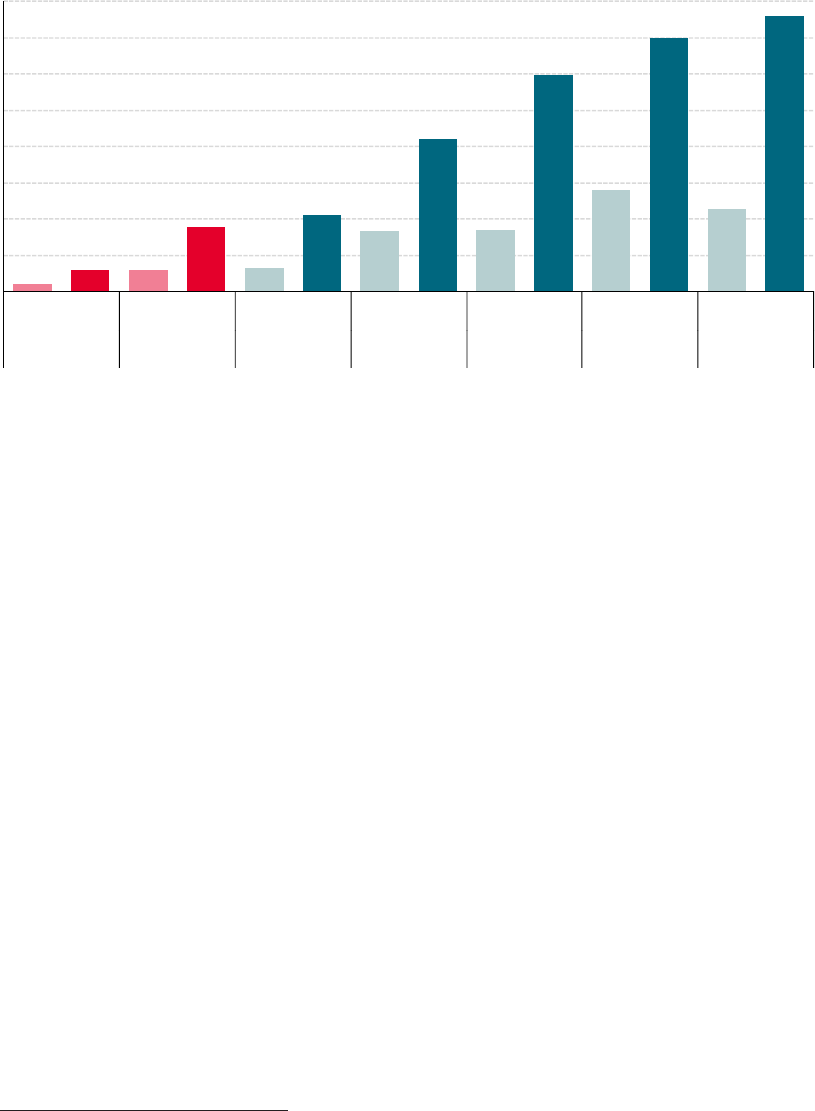
40
Figure 21. Median monthly profit (in US dollars) of branchless banking agents,
Indonesia versus benchmarks of comparator countries
5
15 15
45
16
53
42
105
43
149
70
175
57
190
0
25
50
75
100
125
150
175
200
Nominal PPP
adjusted
Nominal PPP
adjusted
Nominal PPP
adjusted
Nominal PPP
adjusted
Nominal PPP
adjusted
Nominal PPP
adjusted
Nominal PPP
adjusted
Indonesia (rural/
other areas)
Indonesia
(Jabodetabek)
India Zambia Pakistan Ta nzania Bangladesh
Source: BCG (2019).
Note: PPP = purchasing power parity.
5.3.1. Poor governance and weak institutions
Poor governance and weak institutions may contribute to low appropriability of returns
and discourage providers from participating in the market, but whether these constitute
the most binding constraints on digital financial services is a dierent matter. Low levels of
governance quality and poor institutions present a risk on the appropriability of returns for
private firms considering investing if, for instance, contract enforcement laws are weak.
A number of indicators collected by dierent institutions suggest that Indonesia does not
rank highly in governance and quality of institutions. For example, in terms of civil liberties
and political rights, in 2020 Indonesia was seen as “partly free” by Freedom House,
36
with a
rating of 61/100, higher than Malaysia (52), the Philippines (59), and Thailand (32). Also, on
rule of law, Indonesia was rated at 1 on a scale of 0–4 in terms of guaranteeing due process
in civil and criminal matters and in terms of equal treatment. What is also interesting is
that ratings from 2017 suggest that, if anything, Indonesia’s institutions are getting weaker
(Freedom House 2020).
In 2020, Freedom House also published a measure of freedom on the Internet, which
measured obstacles to access, limits on content, and violations of users’ rights. Indonesia
was also rated “partly free” on this measure, with a score of 49/100. Some key findings
on the obstacles to access are consistent with the evidence we have discussed in previous
36
Freedom House is a US-based NGO that rates people’s access to political rights and civil liberties in
210 countries and territories. The rating is based on various indicators including electoral process, political
participation, functioning of government, freedom of expression, and rule of law.
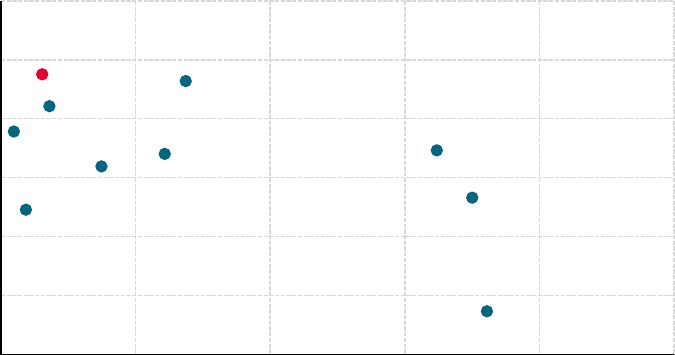
41
sections, including infrastructural limitations that restrict access to the Internet or the speed
and quality of Internet connections in some parts of the country; prohibitively expensive
Internet access that is beyond the reach of certain segments of the population; and a
telecommunications infrastructure built by private providers, resulting in a distribution
of BTSs that reflects the market dominance of the major players. Again, compared
with 2017, there has been a steady decline in freedom on the Internet by this measure
(Freedom House 2020).
Figure 22 shows an alternative metric for institutional quality that may also be relevant to the
appropriability of returns: corruption. However, the figure shows that across countries, there
is no clear correlation between the perception of corruption and the use of digital payment
services. For example, while in Indonesia the perception of corruption is very high and the
use of digital payments is low, in Malaysia, the perception of corruption is almost as high
as in Indonesia, but the percentage of individuals making digital payments is considerably
higher.
Despite the country’s apparent issues with governance and institutions, there has been a steep
increase in the number of private firms applying for e-money licenses (Appendix 1), which
suggests that poor governance and weak institutions may not be a constraint preventing
private firms from entering the market and operating digital financial services.
Figure 22. Percentage of adults making digital payments and perception
of corruption, Indonesia and comparator countries, 2017–2020
AUS
IDN
JPN
KOR
MMR
MYS
NZL
PHL
THA
VNM
40%
50%
60%
70%
80%
90%
100%
0% 20% 40% 60%80%
100%
Corruption is relatively high in the country
(% agree)
Made digital payments in the past year (% age +15)
Source: Demirguc-Kunt et al. (2018) and WVSA (2020).

42
5.3.2. Distortionary taxes and other distortionary policies
The Indonesian tax authority currently does not collect any tax (such as a value-added tax)
on fee-based financial transactions. However, in recent tax policy discussions, there have
been some proposals, not yet enacted, to collect taxes on the fees attached to certain financial
services, such as cash withdrawals from ATMs. In other countries, taxes are imposed on
certain types of fee-based services such as brokerage and safekeeping (for example, in
EU countries) or on certain financial planning fees, notably fees related to initial planning,
monitoring, and evaluation (in New Zealand, for instance). Other than those, financial
services such as payment and store-of-value services are generally tax-exempt. This is the case
in Indonesia where, under the current tax policy regime, taxes are clearly not a constraint.
5.3.3. Problems verifying the identity of customers
As argued earlier, the dierence in requirements faced by nonbank DSPs and banks in the
process of verifying customers’ identities—the KYC process—is part of the evidence showing
the existence of an unlevel playing field that limits the growth of digital payment usage.
In this section we discuss a dierent aspect related to KYC: how problems identifying
customers may limit the appropriability of returns. Although the challenges of fulfilling KYC
requirements are not, on their own, binding constraints for providers, here we discuss how
the current state of the process may prevent all providers, including banks, from reaching the
unbanked population faster.
While each provider and each product has a dierent KYC model at the front end, all
verification processes involve checking consumers’ ID documents against the national
database.
37
This process is time-consuming and fraught with the risk of human error. A study
estimated that from 30 percent to 60 percent of verification queries are rejected by providers
because of blurry images of the ID due to poor-quality cameras (Salyanty et al. 2020).
The cost of resources in terms of sta and time spent on this process can be significant,
particularly for social assistance beneficiaries with BSA accounts.
38
One fact that makes evident of how this process has been a constraint is the emergence of
a small number of private firms that serve as a clearinghouse for KYC between the Ministry
of Home Aairs and nonbank DSPs. This an example of principle 3 of the methodology at
work: some providers are willing to incur extra costs to circumvent the constraint. While this
constraint is not binding, as providers have found ways around it, the high cost of accessing
civil registry databases means that the critical mass of users required for profitability of the
37
For banks, the KYC process for opening a BSA account starts with an agent collecting information on paper,
along with photos of ID documents submitted by the customer, and sending the application to a bank branch.
The bank performs a mostly manual verification against the civil registry. For e-money providers, this task can be
done in-house or outsourced to a third party.
38
From 1 to 3 days for the conventional bank branch–based model and nonbank DSPs, 3–14 days under the bank
agent–assisted model, and up to 60 days for social assistance beneficiaries’ BSA accounts.
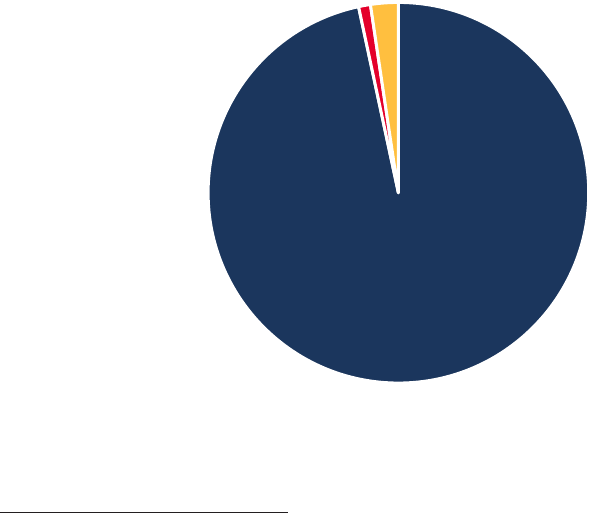
43
business is harder to reach.
39
Further, this costly process reduces the profits of agents that
oer social assistance through BSA services and potentially hinders the expansion of agent
networks. While likely not binding, this constraint is a severe issue, especially for the banks
that are forced to provide BSA accounts to social assistance recipients.
5.3.4. Coordination failures
Given that the other sub-branches in this section have been discarded as potential binding
constraints, coordination failures may be a strong candidate to be behind the low profitability of
agents. Coordination failures may occur when demand and supply constraints interact and result
in an equilibrium that leaves both sides of the market reluctant to enter. Without a critical mass
of users, providers cannot take advantage of economies of scale in digital payment markets, and
without enough points of service to perform transactions or enough other individuals to transact
with, users may be reluctant to take up a product that is perceived to be of little usefulness.
An important indicator of coordination failures is a strong preference by the population to
undertake cash transactions rather than use formal digital financial services. We do, indeed,
observe this phenomenon in Indonesia. Based on the 2018 FII data, cash remains the main
payment method (SNKI and FII 2019). Around 98.73 percent of individuals use cash as
the main method for transactions, suggesting that a coordination failure may be present
(see Figure 23).
Figure 23. Most-used payment methods, Indonesia, 2018
Cash, 98.7%
Card, digital, electronic
payments, 1.0%
Others, 2.4%
Source: FII 2018 (SNKI and FII 2019).
39
Authors’ discussions with fintech practitioners as well as experts on payment services suggest that biometric
identification or another form of e-KYC may be an attractive alternative to solve the KYC problem.
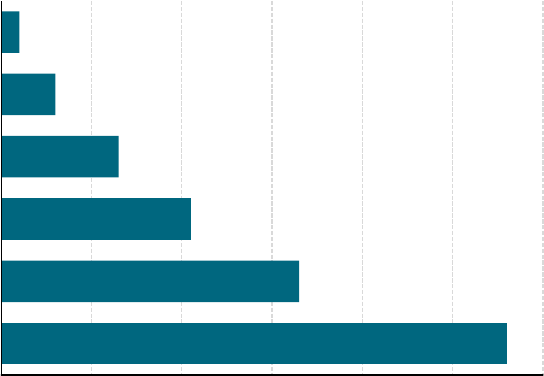
44
We further argue that coordination failure is a binding constraint on e-money services in rural
areas. We identify the low availability and profitability of agents, and the scarcity of point-
of-sale (PoS) terminals, as two clear indications of coordination failures taking place and
substantially hindering the development of digital payment services in Indonesia. We develop
each of these cases below.
First, given that extending agent networks have nonnegligible fixed costs, a critical mass
of users is required to ensure agent profitability. Unfortunately, coordination failures may
be causing an equilibrium in which providers do not expand their networks due to the
lack of a critical mass of customers, and this, in turn, dampens the willingness of users to
adopt the services.
As e-money providers expand their networks and cooperate with other businesses outside
their industry (see Section 5.1.2), access and convenience for individuals also increase. In
some instances, e-money providers work with convenience stores, which serve as their agents
and allow consumers to top up their e-money accounts. Figure 24 shows that more than half
of e-money users go to convenience stores and use cash to top up their e-wallets. The more
widespread availability of these agents would allow individuals in areas far from banks and
ATMs to conduct digital transactions.
Figure 24. Where users top up their e-money accounts, Indonesia, 2018
56%
33%
21%
13%
6%
2%
0% 10% 20% 30%40% 50%60%
Convenience stores
ATM
Internet banking
Others, including P2P transfers
Teller / bank counter
LKD / Laku Pandai agent
Source: FII 2018 (SNKI and FII 2019).
However, as discussed in Section 5.1.1, not all convenience stores can be agents, as they need
to be established as legal entities and apply for licenses. This issue is particularly problematic
given that the majority of these stores are informal, especially in rural and remote areas.
Moreover, the Village Potential Statistics (PODES) 2018 dataset (BPS 2020b) suggests
that, generally, the number of such stores outside of Java and Bali is considerably lower
than on these two major islands (Figure 25). The highest ratio of convenience stores and
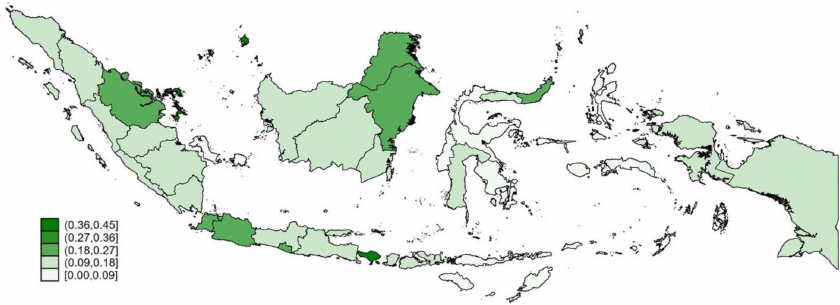
45
supermarkets per 1,000 population is 0.43 in Bali (0.20 in Jakarta), and the lowest is 0.05
in three provinces, East Nusa Tenggara, Maluku, and West Sulawesi, all in the eastern part
of Indonesia. These numbers demonstrate that the convenience stores, which can work
as incidental agents, are scarcer in rural areas and outside Java. Figure 25 does not include
the number of GoJek drivers, who also provide cash-in services to their customers. GoJek
claims to have around 1.7 million drivers in around 170 cities and large towns in Indonesia,
25 percent of them in Greater Jakarta alone (Samboh 2020). Thus, all of these non-DSP
agents, including GoJek drivers, have only a small presence in rural areas and outside
Java and Bali.
While supply-side issues such as an unlevel playing field and poor digital infrastructure in
rural areas harm agent network development, demand-side issues also feed into this problem.
As explored in the next section (6.1), customers’ perception of low benefits from using
digital financial services, related to their lack of awareness about e-money, is a considerable
problem that results in low demand. This low demand, in turn, reduces the profitability of
agents and of providers more broadly, likely yielding a coordination problem.
Second, in relation to PoS availability, the low number of merchants that accept digital
payments highlights an additional dimension of the “chicken-egg” problem that coordination
failures present. If stores perceive that there are few users able or willing to make payments
through digital means, they will not invest in providing this payment option. Simultaneously,
if costumers think there are only a small number of stores where they can transact through
digital means, their demand for these services will likely be depressed, resulting in a vicious
circle and a low-level equilibrium.
Figure 25. Convenience stores and supermarkets per 1,000 population,
Indonesia, 2018
Source: Authors’ calculations based on BPS (2018, 2020b).
The latest data from BI show that by April 2021 there were only 1.5 million EDC devices,
which were operated by 1.06 million merchants (BI 2021a). At the same time, there were
around 18.6 million micro, small, and medium enterprises (MSMEs) operating in retail
sectors such as accommodations and restaurants (meaning that around 37.9 percent of
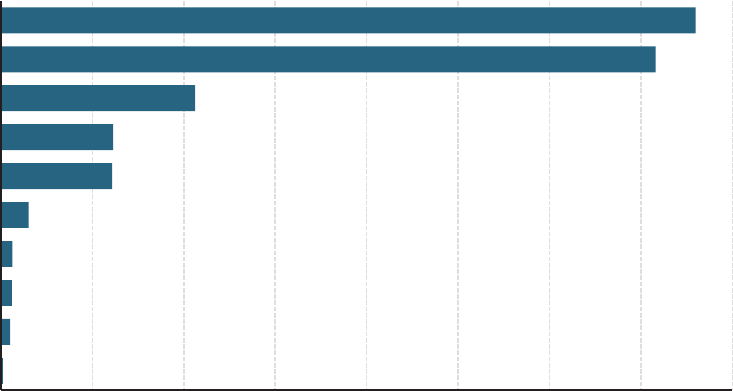
46
MSMEs were in such sectors) (see Figure 26). This implies that a large majority of MSMEs
did not use electronic payment systems such as EDCs. This is consistent with the bank’s
survey result that 95.5 percent of merchants use cash (BI 2013) and shows how hard it is for
consumers to use digital services to transact business. Because there are very few places to
use digital means of payment, many potential users of these services will naturally perceive
low benefits from using them. If they do not take up digital payment services, merchants will
remain lacking incentives to operate more EDCs.
Figure 26. Distribution of MSMEs by sector, Indonesia, 2019
0.1%
0.5%
0.6%
0.6%
1.5%
6.1%
6.1%
10.6%
35.8%
38.0%
0% 5% 10%15% 20%25% 30%35% 40%
Finance
Utility
Mining
Information
Construction
T
ransportation
Other services
Manufacturing
Agriculture
Retail
Source: BPS (2019b).
These two examples serve to identify coordination failures as a binding constraint in
rural areas of Indonesia. We next study demand-side factors, including perceived low or
nonexistent benefits, that can feed into these coordination failures.

47
6. Demand-side constraints on payment
and store-of-value services
We now move on to the demand side of the decision tree. We assess three major nodes:
perceived low or no benefits of usage, low trust in providers, and challenges associated with
low income and geography.
6.1. Perceived low or no benefits of usage
People might not use digital payments as much when they perceive that the services provide
low benefits or none at all, and in this way the perception of no benefit could be a potentially
severe constraint on the expansion of digital financial services. Data from FII 2018 (SNKI
and FII 2019) show that around 35.6 percent of the adult population without a bank
account
40
stated that the reason for not having a bank savings account is that they feel they
do not need one, a strong proxy for perceived low benefits (Figure 27).
41
In addition, the other important stated reason for not having a bank account was a
preference for cash, which might also be taken as representing perceived low benefits from
using formal financial services. Adding these two reasons (“don’t need it” and “prefer cash),
it’s clear that perceptions of low benefits from having accounts in the formal financial sector
are prevalent in Indonesia. When combined with supply-side constraints in the less populated
and rural areas, these reasons contribute to the presence of the coordination failure discussed
in section 5.3.4.
40
The percentage of those without a bank savings account is around 61.6 percent. Following Harihareswara and
Miller (2021), we exclude respondents answering that they “Don’t have enough money” for an account from the
analysis.
41
As we break down the data into several characteristics, we do not observe significant dierences, except
between Java and outside Java, and between urban and rural areas. It is rather surprising that almost 40 percent of
the population in Java, a well-developed region, felt they did not need a bank account. This is much higher than
outside Java, which was 29.6 percent. On the other hand, around 37.6 percent of the rural population without a
bank account reported that they did not need one.
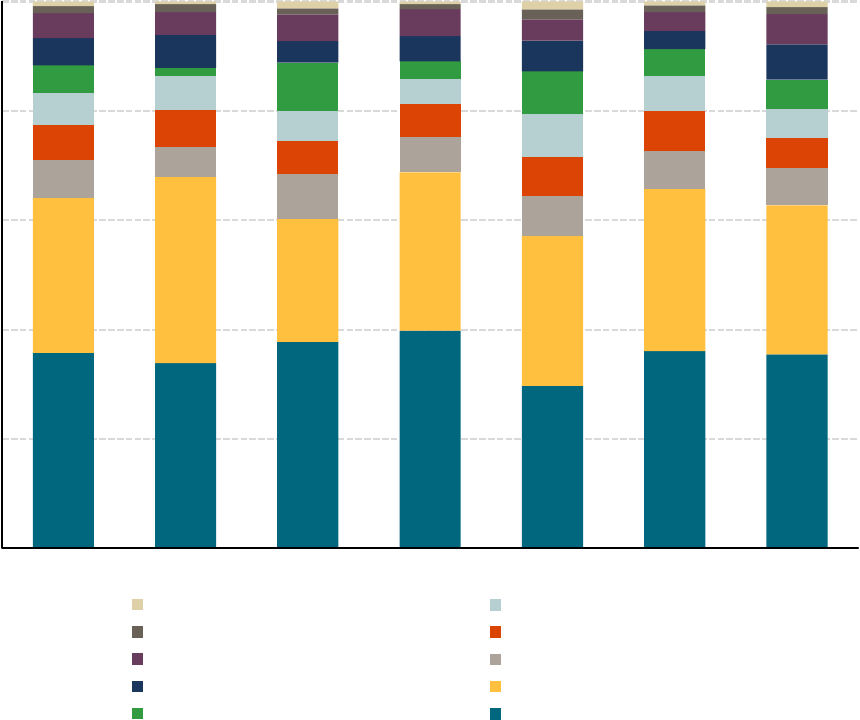
48
Figure 27. Reasons for not having a bank account,
by demographic characteristic (percentages)
35.6%
33.7%
37.6%
39.6%
29.6%
35.9%
35.4%
28.3%
33.9%
22.5%
28.8%
27.4%
29.5%
27.2%
6.8%
5.5%
8.1%
6.5%
7.2%
6.9%
6.7%
6.3%
6.7%
6.0%
5.8%
7.2%
7.2%
5.5%
5.9%
6.2%
5.6%
4.6%
7.8%
6.4%
5.4%
5.1%
1.4%
8.8%
3.2%
7.8%
4.8%
5.3%
0%
20%
40%
60%
80%
100%
All Urban Rural Java Non-Java Male Female
Against religion Don’t have required document
Don’t believe in product or service Don’t have enough information
Administration cost is too high Never heard of savings products
Other HH member already have
Prefer cash
Financial service office is too far away
Don't need one
Source: FII 2018 (SNKI and FII 2019).
We next investigate one of the potential reasons behind this apparent low perception of
benefits among the unbanked population that particularly applies to e-money services: lack
of awareness of financial products.
6.1.1. Lack of awareness of financial products
The perception of low benefits from digital financial services could be due to a low (or lack
of) understanding about the advantages of those services, such as speed, convenience, safety,
protections, and in some cases, costs. Individuals may not be aware of the options available
to them and the potential benefits they may derive from using the services. They may also
simply lack basic knowledge on how to use the services. The lack of awareness may prevent
individuals from fully reaping the benefits of digital financial services. Numerous studies
suggest that lack of information about the products (as well as customers’ attitudes toward
using financial services), rather than mere numeracy, are the most important components
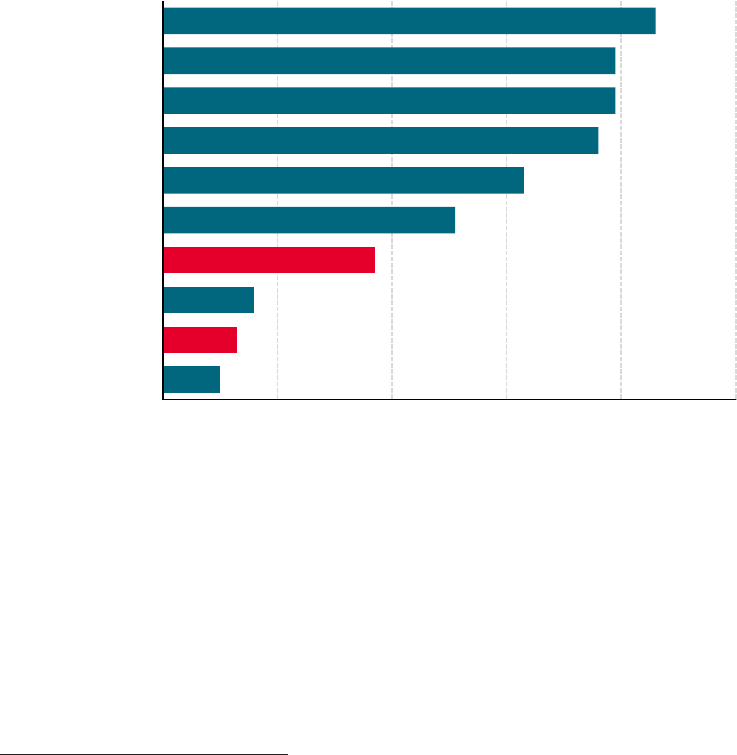
49
of a broader, more rigorous concept of the financial literacy problems that may be
responsible for the low usage of digital financial services (Hastings and Tejeda-Ashton 2008;
Cole, Sampson, and Zia 2011; Hastings, Mitchell, and Chyn 2011; Behrman et al. 2012;
Lusardi and Mitchell 2014).
A study on the landscape of government-to-person payments in Indonesia, conducted in
2018, asked individuals ages 18 and older whether they had heard of any of the financial
terms that were read to them (Figure 28). While the majority of the adult population had
heard the terms interest rate, pawnshop, ATM, and transfer, only a small proportion of them had
heard of e-money (13 percent) and transaction fees (37 percent).
42
This suggests that new services
are relatively unknown to a substantial portion of the population. As they are not familiar
or comfortable with those products, they will not demand them. Low awareness of a new
financial product will likely lead to a perception of low benefit from that product.
Figure 28. Knowledge of financial terms, Indonesia, 2018
13
16
37
51
63
76
79
79
86
020406080100
Financial budge
t
E-money
Premium
Transaction fee
Collateral
Savings Account
Transfer
Interest rate
ATM
Pawnshop
10
Source: Authors’ calculation using data from World Bank (2018a).
With such low levels of awareness about e-money, it is not surprising that large segments of
the population say they do not perceive significant benefits from having an account in the
formal financial system.
42
We also observe spatial variation in the financial literacy index, measured as the number of financial terms that
respondents knew, out of these 10: financial budgeting, savings account, interest, ATM, electronic money, transfer, transaction
fee, collateral, insurance premium, and pawnshop.
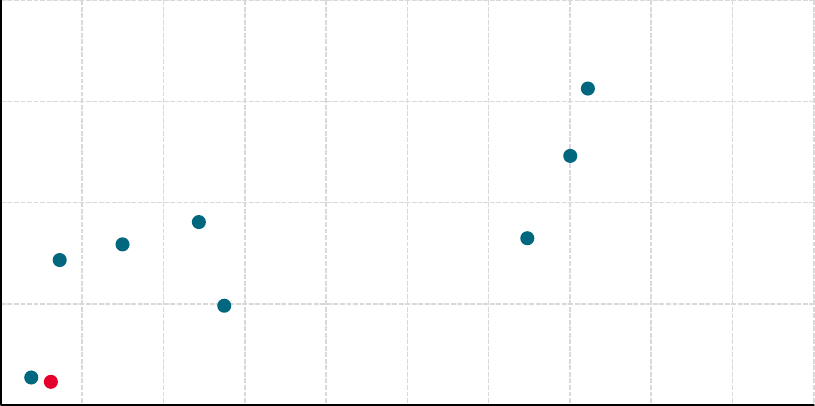
50
6.2. Low trust in providers
Trust may be an important factor that aects whether customers are willing to shift from
traditional to modern financial services, including digital ones, and from cash-driven
transactions to those that go through formal financial institutions. We can think of
three relevant trust issues—(1) trust in the modern financial services system, (2) trust in
technology, and (3) trust in the providers—and all of these may be related to the overall level
of trust in the society.
Indonesia ranks low in general trust compared with neighboring countries. More than
90 percent of Indonesians, when asked whether in general people can be trusted, responded
“No, one has to be careful not to be taken advantage of.” Figure 29 shows a positive
correlation between the level of general trust and the use of digital payment in Indonesia
and neighboring countries. A recent cross-country experiment measuring civic honesty
also reported that Indonesia ranked 31 among 40 countries sampled (Cohn et al. 2019).
So, Indonesia does not rank high either in general trust or trustworthiness, compared with
many countries.
Figure 29. General trust level and digital payments, Indonesia and comparator
countries, 2017–2020
AUS
IDN
JPN
KOR
MYS
NZL
PHL
THA
VNM
0%
People can generally be trusted (% agree)
20%
40%
60%
80%
0% 10% 20% 30% 40% 50%60% 70%80% 90
%1
00
%
Made digital payments in the past year (% age +15)
Source: Authors’ calculation using data from Demirguc-Kunt et al. (2018) and WVSA (2020).
We use FII 2018 (SNKI and FII 2019) to look at the relationship between trust in financial
service providers and ownership of accounts, studying dierent groups. Figure 30 shows
that 65 percent of those who reported having low trust in financial providers did not have a
bank account, but 35 percent of them did. The percentage of those who said they had high
trust but did not have a bank account was 55 percent. Lack of trust may be an important
constraint preventing uptake of modern financial services for some segments of the

51
population, but small numbers suggest that it is not a deterrent for a significant fraction of
individuals who own an account. While this may indicate that the constraint is not binding,
we later analyze two potential causes of these low levels of trust and whether they can be
related to low financial inclusion, namely, macroeconomic instability and consumer insecurity.
Figure 30. Bank account ownership and trust in financial service providers,
Indonesia, 2018
35%
65%
45%
55%
0%
15%
30%
45%
60%
75%
Have account No account Have account No account
Don't trust financial service provider Trust financial service provider
Source: FII 2018 (SNKI and FII 2019).
The lack of trust in new digital products may also be related to lack of information about
the product, the agent, or the technology. A recent study on the eects of incentivizing
branchless banking agents to increase uptake of a new financial product found that trust in
banks, agents, and products aects adoption of the new product (Deserranno et al. 2021).
In the context of a lack of clear information about new products, potential customers
make decisions based on what is observable to them. For instance, the authors reported,
when agents were oered high incentives for successfully signing up new customers and
the incentives were public knowledge, there was low trust in the product, the bank, and the
agent, resulting in low uptake.
43
In the following sections, we explore two channels aecting
trust: consumer insecurity and macroeconomic instability.
6.2.1. Consumer insecurity
Consumers’ low level of trust in providers and in the modern financial system in general
may be related to insecurity. When people perceive that transactions conducted through
43
With little information about a product, it is possible that public knowledge about high incentives could increase
trust if these incentives are perceived as a signal of the quality of the product. However, it could potentially
also lower trust if it leads to perception of being taken advantage of. The empirical findings of Deserranno and
colleagues (2021) suggest the latter.
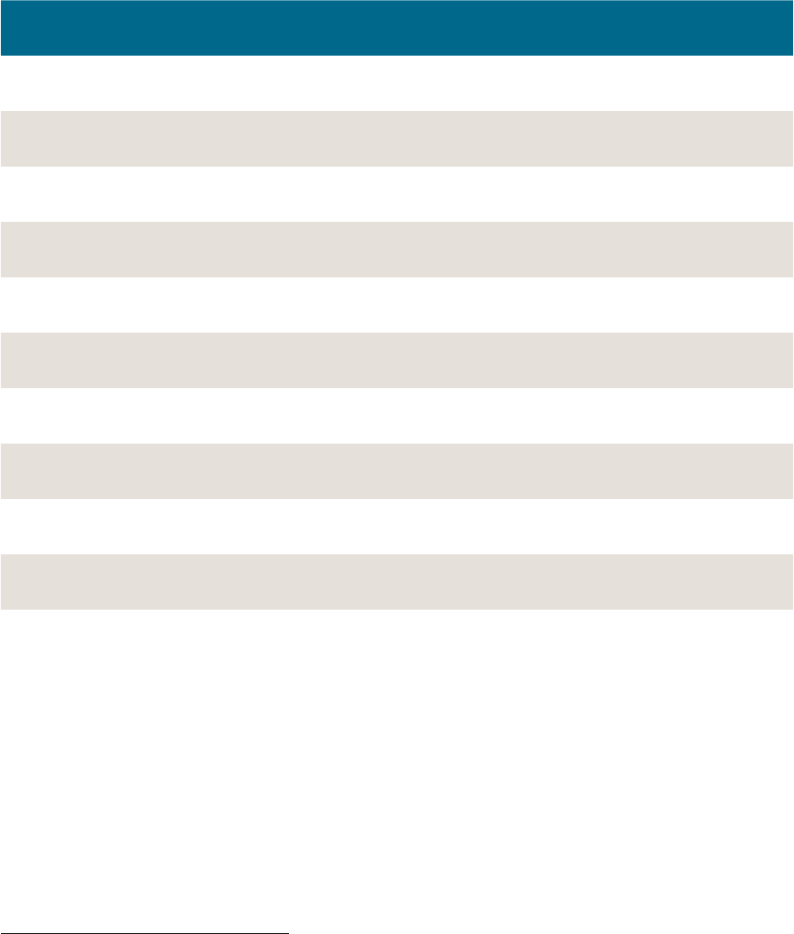
52
digital platforms are not secure, they may avoid using such services. In Indonesia in recent
years, there have been high-profile breaches of customers’ data on online platforms, raising
serious public concern (Eloksari 2020). Table 6 presents some of the high-profile cases
of fraud, crime, and data breach involving the digital economy just in the last few years.
Several regulations have been introduced to increase consumer security or at least the
perception of security.
44
Table 6. Recent cases of fraud, crime, and data breach involving
the digital economy, Indonesia, 2018–2020
Institution Institution
type
Period Type of breach, fraud,
or crime
Potential impacted
users
Tokopedia E-commerce July 2020 Privacy breach on customer
data
91 million consumers
Government
of Indonesia
Government June 2020 Privacy breach on
COVID-19 test takers’ data
230,000 citizens
MeMiles Fintech Jan. 2020 MeMiles conducted a Ponzi
scheme using users’ funds
264,000 users
Dompet Kartu
& Pinjam Beres
Fintech Dec. 2019 Misuse of personal data and
harassment in debt collection
undisclosed
Incash Fintech July 2019 Misuse of personal data and
harassment in debt collection
undisclosed
Dompet Gajah Fintech Oct. 2020 Misuse of personal data and
harassment in debt collection
undisclosed
DanaCepat Fintech Oct. 2018 Misuse of personal data and
harassment in debt collection
undisclosed
CoCo Tek Fintech Aug. 2019 Misuse of personal data and
harassment in debt collection
undisclosed
Koperasi FKSS Fintech March 2020 Misuse of personal data and
harassment in debt collection
undisclosed
TunaiCepat Fintech Jan. 2020 Misuse of personal data and
harassment in debt collection
undisclosed
Source: Compiled by authors; sources are displayed in Appendix 7.
These cases may aect consumers’ willingness to use digital financial services or restrict the
amounts of the transactions they are willing to perform digitally. It is dicult to assess how
much these cases aect perceptions of consumer security and trust in providers. However,
according to principle 3 of the methodology, if we observe that consumers are willing to
bear extra costs for more secure digital transactions, it may indicate that consumer security is
a constraint.
44
For example, BI issued a memorandum setting a national standard of six digits for ATM and debit card PINs.
In addition, the OJK requires all registered fintech companies to state in all of their product promotions that they
are registered and supervised by the OJK.
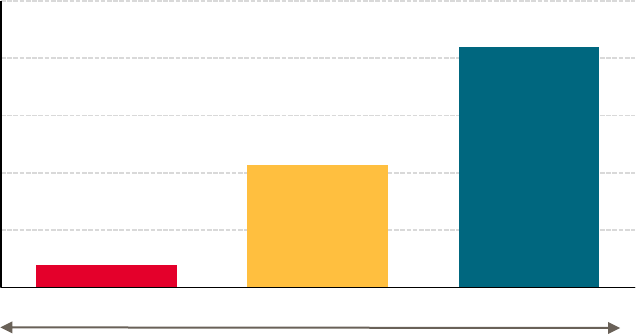
53
A 2019 study conducted by Microsoft and IDC suggested that around 44 percent of
consumers of digital financial services believe that their data will be well protected
(Microsoft and IDC 2019). When asked whether they would be willing to transact on
a more secure platform even though it costs more or on a less secure platform that costs less,
an overwhelming majority said they would prefer to use a highly trusted platform even if it
is more costly (see Figure 31). This is related to principle 3 of the decision tree methodology,
in which individuals are willing to incur additional costs to circumvent barriers. This appears
to suggest that consumer insecurity is a constraint on the use of digital financial services.
However, according to the same study, around 56 percent of consumers did not have
confidence that their data were secure. This perception may reflect consumers’ assessment
that the current national ID database is not robust and secure. Investing resources to
improve this database infrastructure would restore consumer trust. It also may suggest
that although consumer security is a constraint, it is not a binding one. Instead, robust
KYC infrastructure is a critical constraint, a fact that brings us to the supply-side constraints,
as discussed above.
Figure 31. Consumer preferences on the cost of and trust in digital platforms
6%
32%
63%
0%
15%
30%
45%
60%
75%
1 &
234
& 5
Digital platform with lower
cost but lower trust
Digital platform with highe
r
cost but higher trust
Source: Microsoft and IDC (2019).
6.2.2. Macroeconomic instability
The financial sector thrives in an environment of high growth, but shocks to the economic
system may quickly erode confidence in financial institutions, possibly with a significant
eect on people’s trust in storing their money in banks or other financial institutions. Note,
however, that such a shock should not severely aect payment services, so the impact on
e-money services may be more limited if consumers perceive such services to be mainly for
payment purposes.

54
The story of the 1997/98 financial crisis arms this line of reasoning. Indonesia is one
of the countries that was severely aected by the Asian financial crisis of 1997/98.
45
The
financial crisis, which evolved into a political crisis as well, triggered herd behaviors that
led to a withdrawal of liquidity and bank runs. The latter were among the factors behind
the collapse of the banking sector in Indonesia (Hill 1999). Although the government
decided to intervene in the banking sector, bailing out several banks, many households lost
their money.
46
Under such a situation, storing money in financial products and financial
institutions is perceived as not a fully safe option.
In the medium and long term, macroeconomic instability could have a persistent impact on
individuals’ behavior. Those who were exposed to the macroeconomic volatility of 1997/98
may exhibit dierent risk attitudes than those who were not exposed to it. Extensive studies
focusing on developed countries show that cohorts of individuals who have lived through
economic volatility tend to exhibit lower rates of financial risk taking decades after the event
(Malmendier and Nagel 2011; Sahm 2012; Dohmen, Lehmann, and Pignatti 2016; Guiso,
Sapienza, and Zingales 2018; Shigeoka 2019).
In developing countries, which are prone to economic shocks from both global and domestic
factors, policy options to mitigate economic fluctuations are limited. Thus, people in
developing countries may anticipate such shocks by lowering their financial risk taking. This
behavior may lead individuals to have a strong preference for holding cash or converting their
wealth into assets other than savings—such as livestock or jewelry—with ramifications on
the adoption of financial services.
Storing money in a financial institution—either bank or nonbank—could be a risky financial
decision, particularly in a country with an unstable financial sector. However, in the past two
decades, the government of Indonesia has built sound monetary policies and prudent fiscal
policies (Basri and Hill 2020). On the monetary side, after the 1997/98 economic crisis, the
government focused on supplying emergency liquidity, increasing the capital adequacy ratio
of financially distressed banks, and restructuring poorly performing banks. The government
also improved its supervision practices and institutionalized risk management systems for
individual banks as well as a deposit insurance system. By 2004, the government deposit
insurance corporation guaranteed deposits in banks up to IDR 2 billion. This reform has
brought credibility to the banking sector in Indonesia (Basri and Hill 2020).
This assessment of Indonesia’s macroeconomic condition in the past two decades suggests
that the country has managed macroeconomic volatility thanks to significant institutional
reforms. By the time of the global financial crisis of 2008/09, although Indonesia was not
insulated, the impact was much less severe than that of the 1997/98 crisis. Nevertheless,
real GDP growth slowed down from about 6.5 percent to 4.5 percent. The Jakarta Stock
45
The exchange rate of the country’s currency, the Indonesian rupiah, collapsed from IDR 2,400 per US$1 to
IDR 15,900 per US$1. The exchange rate was also extremely volatile, and inflation skyrocketed to more than
60 percent annually.
46
Before the 1998 crisis, Indonesia did not have deposit insurance.

55
Exchange fell by about 50 percent at the end of 2008, and the growth in bank lending fell
sharply, from an annual rate of about 32 percent before the crisis to 10 percent (Hill 2012).
Despite nervousness in the financial sector, Indonesia managed to avoid the worst impact of
the 2008/09 global recession. Only one bank, Bank Century, faced a closure due to a liquidity
issue, and the country did not see the bank runs that it experienced in 1997/98. While risks
to macroeconomic stability remain, policy credibility has strengthened people’s confidence in
Indonesia’s financial authority thanks to significant reforms (Hill 2012, Basri and Hill 2020).
47
Thus, we see that macroeconomic instability, despite posing risks, does not seem to be a
binding constraint on the use of e-money.
6.3. Low income and geography
Low income is often cited as the major reason for low utilization of digital financial services
(Cole, Sampson, and Zia 2011; Moorena et al. 2020). Experience in other countries suggests
that although low income is correlated with low usage of e-money, it is not necessarily a
binding constraint. Indeed, the ease of use of e-money, with just a simple phone, has proven
to be one of the key strengths behind the growth of MNO-based e-money such as M-Pesa.
This seems to be the case for Indonesia’s e-money as well. However, in the Indonesian
context, low income may prove to be an important constraint for a specific part of the
population, namely the extremely poor living in the more remote parts of the country.
First, preference for cash is more robust among low-income people because they tend to
live in areas where financial access is lower. As shown in Table 7, due to lower coverage
of financial access points (banks, ATMs, and agents), reaching an access point results in
additional costs that lower-income people tend to avoid. This condition is clearly observed
for Bali and Nusa Tenggara but not very clear for the other islands. Based on the data
in Table 7, it appears that the constraint is most likely an issue only for certain areas in
Indonesia, particularly eastern Indonesia, which has plenty of smaller islands
48
where the cost
is higher than in the rest of the country.
49
47
Better policymaking can be attributed to Indonesia’s democratic processes after the 1998 political turmoil and
its institutions’ eective management of these shocks (Hill 2012).
48
As of 2019, BPS reported that the eastern provinces (e.g., Sulawesi, Maluku, and Papua provinces) comprise
9,730 (61 percent) of the 16,056 islands in Indonesia (BPS 2020a).
49
According to World Bank (2018b) data, the average cost for one trip to an ATM in eastern Indonesia (the data
were available only for Sulawesi province) is 45.8 percent higher than in the rest of Indonesia and 38.4 percent
higher than the national average.

56
Table 7. Percentage of low-income people and ratio of PoS machines, Indonesia
Island Percentage of population
with low income
Number of PoS terminals
per 1,000 people
Sumatera 28.1 1.99
Jawa 36.4 2.68
Bali and Nusa Tenggara 39.6 1.83
Kalimantan 20.5 2.11
Sulawesi 36.3 2.48
Maluku & Papua 25.2 1.67
Source: Authors’ calculation from BI (2021b) and BPS (2019a).
Second, DSPs have shifted away from processes that can be accessed through a simple,
USSD-based phone
50
to apps that require a smartphone.
51
The low take up of USSD-based
digital financial services, as discussed in Box 3, might be because many less sophisticated and
poorer potential customers for this technology live in cash-based environments who see far
less value from using it because it is not able to intermediate digital value into cash. The shift
to smartphones may have further disenfranchised the low-income population with no access
to smartphones, the very population that was supposed to be the main target for financial
inclusion.
FII 2018 data (SNKI and FII 2019) show that ownership of a bank savings account is
associated with having a higher income (Figure 32). For the poor population living in less
developed regions of Indonesia (rural and outside Java), a low income may pose a constraint
when combined with supply constraints that are binding. For the extremely poor in urban
Java, where supply constraints are less severe, the low income itself may be a binding
constraint.
50
USSD (Unstructured Supplementary Service Data) is a protocol similar to SMS (Short Message Service).
51
When the LKD (the generic name for the e-cash oered by banks) was launched in 2015, most banks went
with USSD-based technology. Around the same time, the state-owned telecommunication company Telkomsel
launched its own electronic money, T-Cash, also based on USSD technology and requiring only a chip attached
to a simple phone. By 2019, however, LinkAja, based on a technology requiring a smartphone for access, was
launched to replace the LKD.
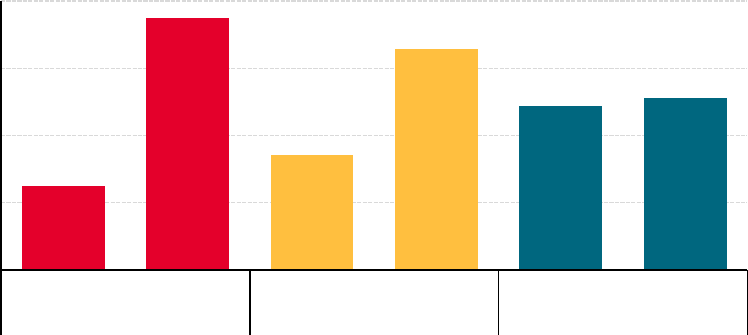
57
Figure 32. Ownership of bank savings account and income level, Indonesia, 2018
25%
75%
34%
66%
49%
51%
0%
20%
40%
60%
80%
Have BSA Don't have BSA Have BSA Don't have BSA Have BSA Don't have BSA
Extreme Poor (< USD 1.25/day) Poor (USD 1.25–2.50/day) Above poverty (> USD 2.5)
Source: FII 2018 (SNKI and FII 2019).
In sum, we observe that while the binding constraints for digital payments are mostly on
the supply side—namely in coordination failures and associated with the unlevel playing
field between banks and nonbanks in terms of regulations on cashing out, KYC, and agent
recruitment—there are important constraints on the demand side that are relevant for
financial inclusion in Indonesia. Some of these demand-side constraints, such as perceptions
of low benefits of usage, feed into coordination failures. Other demand-side constraints,
such as low income, may be binding, but only for particular groups such as very poor urban
populations in Java and poor populations in remote areas.
7. Conclusions
Although Indonesia has made significant progress in extending financial services over the
past 10 years, a large proportion of the population is still financially underserved. The latest
data from the FII survey (SNKI and FII 2019) show that in 2018, only around 45.5 percent
of individuals 15 and older reported having owned and used either a regular bank account,
a BSA, or e-money, despite the concerted eorts of the Indonesian government to promote
financial inclusion. The e-commerce–led development of digital financial services, while
remarkable, seems to have been mainly concentrated among the already financially included
population.
This paper attempts to explain why the usage of digital financial services remains low by
using the decision tree framework developed by Claessens and Rojas-Suárez (2020). We
particularly focus on a product that has a large potential for financial inclusion: e-money.
Given the relatively high fees charged for the usage of digital financial services, our price
analysis in Section 4 suggests the existence of binding constraints on the supply side. Our
subsequent evaluation confirms that initial insight and identifies regulatory constraints
creating an unlevel playing field between banks and nonbank providers of digital financial
58
services as a key binding constraint. We find other constraints to be binding for specific
subpopulations. Specifically, a coordination failure between suppliers and customers of digital
financial services, reflected in a strong preference for cash, and poor digital infrastructure
are identified as additional binding constraints limiting the usage of digital financial services
outside of Java and in rural areas.
The first binding constraint, the unlevel playing field between banks and nonbank DSPs,
manifests in regulatory restrictions on cash-out services, agent recruitment, and KYC
processes that unduly adversely aect nonbank DSPs. Second, we also observe coordination
failures that are driven by the supply constraints identified above, as well as by potential
customers’ perception of low benefits from using e-money. The perception of low benefits,
which is rooted in a lack of awareness of the existence and functioning of digital financial
services, constrains the demand for these services and prevents the formation of the critical
mass of customers necessary to make the activities of agents profitable, particularly in rural
and remote areas outside of Java. In turn, the scarcity of agents feeds into perceptions that
the services are of low benefit. This vicious circle keeps the market depressed in certain
regions, leaving substantial parts of the population underserved. Finally, because of the
spatial and geographic features of Indonesia, the uneven quality of digital infrastructure also
presents a binding constraint for rural areas outside Java, which further contributes to the
uneven distribution of financial services. Digital infrastructure is a particularly important
issue if we think of the goal of reaching the last mile, the unbanked population in hard-to-
reach communities where traditional services are not well established.
Additionally, to maximize the gains from relaxing the constraints that are binding, there
are some constraints that, while not binding, need to be addressed. These include, on the
demand side, improving trust in digital financial service providers, and on the supply side,
delivering a robust and safe KYC architecture that will not only lower costs for all providers
but also go a long way toward relieving consumer insecurity.
It can be argued that banks, with their resources, infrastructure, and array of products and
services, would be better o serving markets at a higher level rather than low-end retail
customers. Nonbank DSPs, with their limited products but nimble features, may be better
placed to serve small-scale, retail-level, previously unbanked consumers. This is particularly
true for nonbank DSPs with nontraditional agents, such as GoJek, whose drivers interact
more directly with the community in urban areas.
Despite the multitude of constraints that exist, there are signs that banks as well as nonbank
DSPs are trying to innovate within the current market and regulatory environment, by
forming strategic partnerships to expand their networks and developing new products. Some
of the most recent regulations (e.g., laws on the regulatory sandbox) also seem to be aimed to
accommodate these innovations. We also see some banks adopting relatively low-level digital
technologies aimed at reaching populations with limited access to digital infrastructure. For
example, some banks are readopting the rekening ponsel (“mobile account”), which is based on
the feature phone and could bring access to groups covered by mobile networks lower than
3G. These developments point in the right direction. However, unless the current binding
constraints are relaxed, the markets for digital financial services will not really flourish.
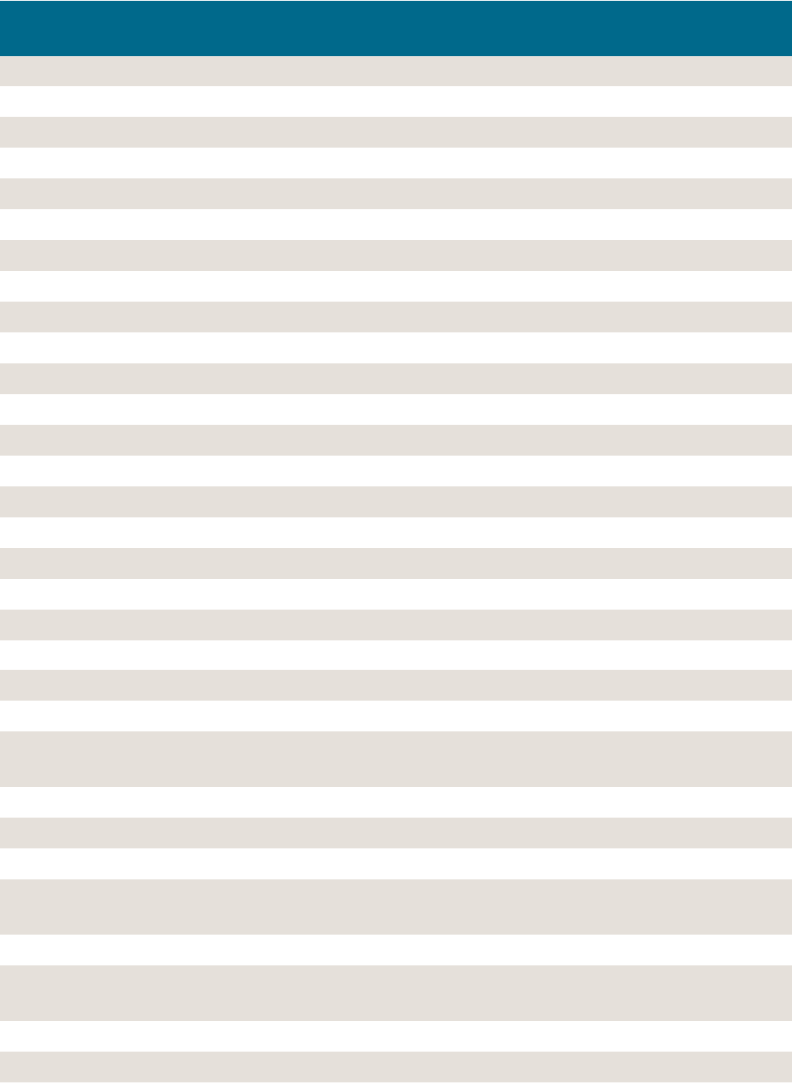
59
8. Appendixes
Appendix 1. Electronic money licenses
Table A1.1. E-money licenses, Indonesia, 2020
Company Operational
as of
Product
(server-based)
Product
(chip-based)
Airpay International Indonesia 28-Nov-18 ShopeePay
Artajasa Pembayaran Elektronis 21-Nov-12 MYNT Emoney
Astra Digital Arta 18-Feb-20 AstraPay
Bank BNI Syariah 30-Dec-19 Hasanahku
Bank CIMB Niaga 27-Mar-13 Rekening Ponsel
Bank DKI 3-Jul-09 Jakarta One (JakOne) JakCard
Bank Jabar dan Banten 5-Mar-20 DigiCash
Bank Mega 3-Jul-09 Mega Virtual Mega Cash
Bank National Nobu 29-Apr-13 Nobu emoney Nobu emoney
Bank OCBC NISP 2-Mar-20 One Wallet
Bank Permata 23-Jan-13 BUM Money
Bank QNB Indonesia 1-Mar-17 Dooet
Bank Sinarmas 6-Dec-18 Simas E-money
BCA 3-Jul-09 Sakuku Flazz
Bimasakti Multi Sinergi 14-Jun-17 Speed Cash
Bluepay Digital Internasional 8-Aug-18 Bluepay Cash
BNI 3-Jul-09 Unikqu Tap-Cash
BPD Sumsel Babel 4-Apr-17 BSB Cash
BRI 29-Dec-10 T-bank Brizzi
Buana Media Teknologi 29-May-17 Gudang Voucher
Cakra Ultima Sejahteira 5-Nov-18 Duwit
Datacell Infomedia 7-Nov-19 Paydia
Dompet Anak Bangsa (d/h PT
MV Commerce Indonesia)
29-Sep-14 GoPay
E2Pay Global Utama 4-Sep-18 M-Bayar
Espay Debit Indonesia Koe 20-Jul-16 Dana (d/h Unik)
Ezeelink Indonesia 8-Aug-18 Ezeelink
Finnet Indonesia 1-Jun-12 Finpay Money With
Mobile Cash)
Fintek Karya Nusantara 22-Feb-19 LinkAja
Indosat 3-Jul-09 IMkas (d/h Pay Pro
d/h Dompetku)
Intl Dunia Sukses 10-Oct-17 1Saku
Kereta Commuter Indonesia 14-Nov-19 KMT
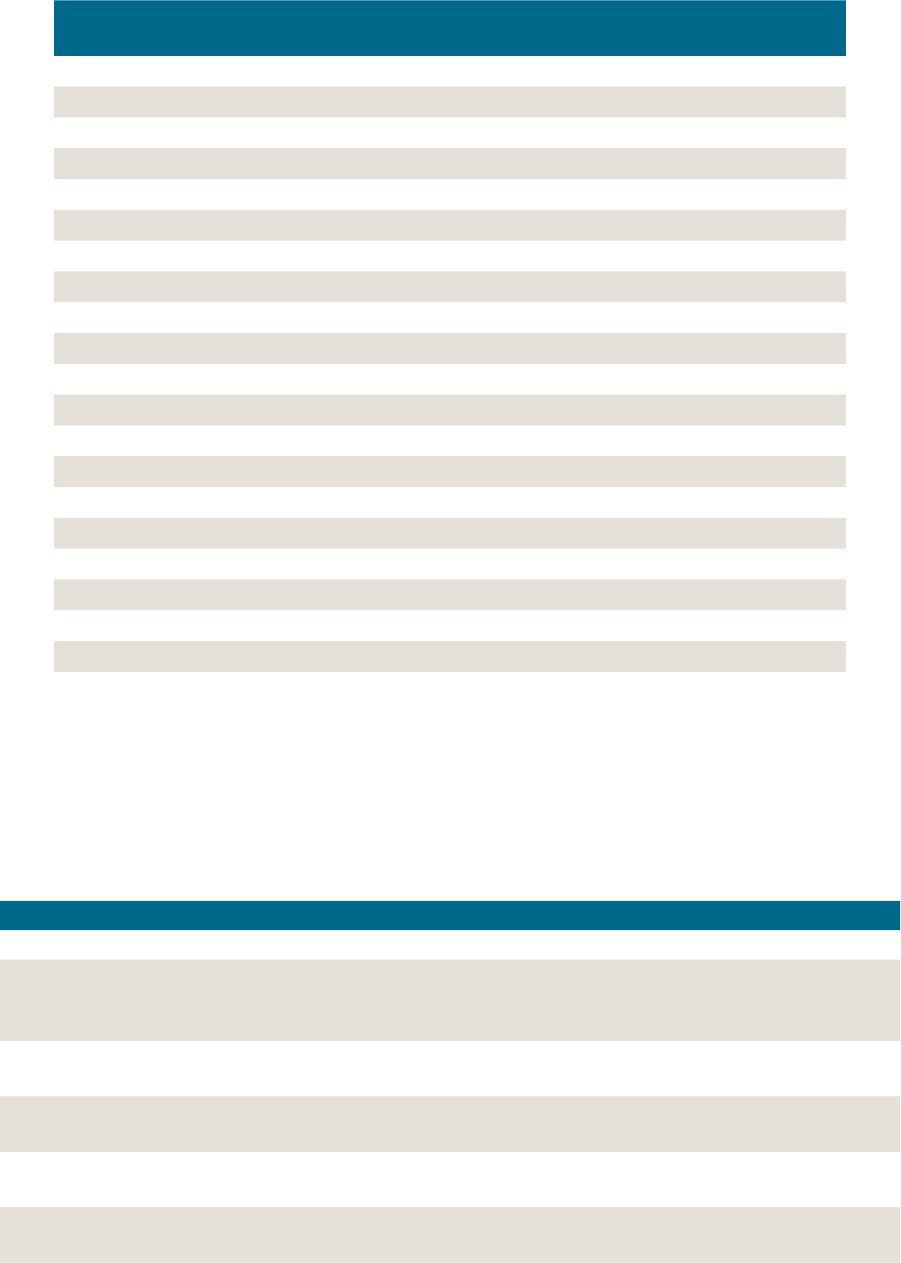
60
Company Operational
as of
Product
(server-based)
Product
(chip-based)
Mandiri 3-Jul-09 Mandiri e-Cash Mandiri emoney
Mass Rapid Transit 25-Nov-19 MIT
Max Interactives Technologies 6-May-19 Zipay
MNC Teknologi Nusantara 1-Dec-19 Spinpay
Netzme Kreasi Indonesia 23-Dec-19 Netzme
Nusa Satu Intl Artha 25-Mar-13 DokuPay
Paprika Multi Media 6-Feb-20 Paprika
Rpay Finansial Digital Indonesia 18-Mar-20 Yourpay
Sarana Pactindo 30-Aug-19 PAC Cash
Skye Sab Indonesia 3-Jul-09 Skye Mobile Money Skye Card
SmartFren 16-Jun-14 Uangku
Solusi Pasti Indonesia 20-Jul-18
Telkom Indonesia 3-Jul-09 Flex Cash iVas Card
Telkomsei 3-Jul-09 T-Cash Tap Izy
Transaksi Artha Gemilang 11-Feb-19 OttoCash
Veritra Sentosa Internasional 1-Jun-18 Paytren
Visi Jaya Indonesia 6-Apr-20 Eidupay
Visionet Internasional 22-Aug-17 OVO Cash
Witarni Tunai Mandiri 5-Jan-15 Truemeney
XL Axiata 29-Mar-11 XL Tuna
Source: BI, cited in Lesmina and Noverdanius(2020).
Appendix 2. Sources for provider-level data
Table A2.1. Sources for provider-level cost and price data displayed in
Table 1 and Figures 6 and 9–12
Provider Country Link
Android Pay Australia https://support.google.com/pay/merchants/answer/6288971?hl=en
Australia and
New Zealand
Banking Group
Australia https://www.anz.com.au/personal/bank-accounts/everyday-accounts/
access-advantage/
Commonwealth
Bank of Australia
Australia https://www.commbank.com.au/banking/everyday-account-smart-access/
rates-fees.html
National Bank
of Australia
Australia https://www.nab.com.au/personal/accounts/transaction-accounts/
nab-classic-banking
National Bank
of Australia
Australia https://www.nab.com.au/personal/help-and-guidance/personal-banking-
fees-and-charges
National Bank
of Australia
Australia https://www.nab.com.au/personal/accounts/transaction-accounts/
nab-classic-banking
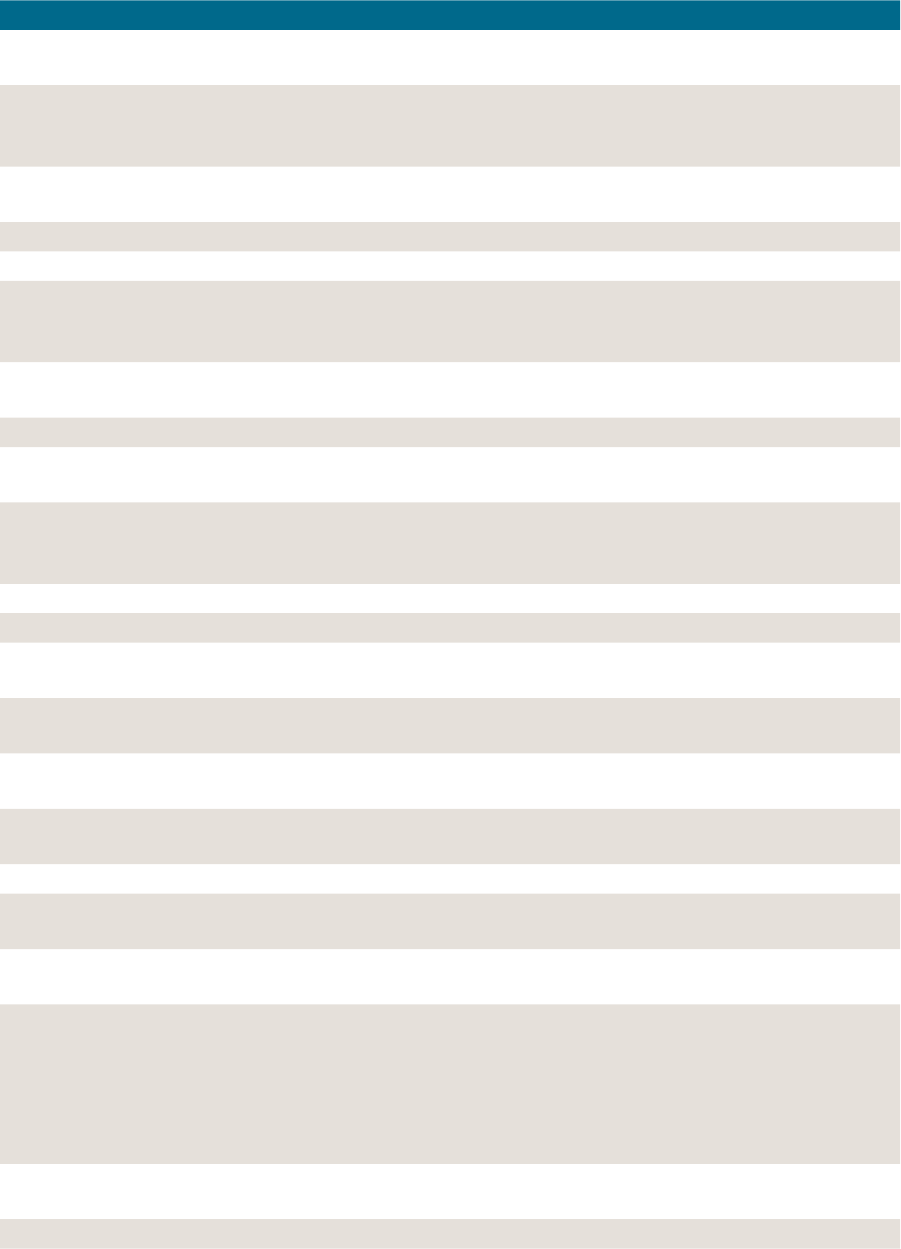
61
Provider Country Link
Westpac Banking
Corporation
Australia https://www.westpac.com.au/personal-banking/bank-accounts/
life-choice/?fid=bundle:2001:fom:bacat
Bank Islam
Brunei
Darussalam
Brunei
Darussalam
http://bibd.com.bn/assets/pdf/resource-centre/SOT2019.pdf
BruPay Brunei
Darussalam
https://www.brupay.com/
ACLEDA Bank Cambodia https://www.acledabank.com.kh/kh/eng/ps_decurrentacc
Canadia Bank Cambodia https://www.canadiabank.com.kh/
Foreign Trade
Bank of
Cambodia
Cambodia https://www.ftbbank.com/
TrueMoney
Cambodia
Cambodia https://truemoney.com.kh/
Wing Cambodia https://www.wingmoney.com/en/personal/fees/
Bank of China China https://www.bankofchina.com/au/forms/CBD_Schedule%20of%20Fees
%20and%20Charges.pdf
China
Construction
Bank
China https://www.asia.ccb.com/hongkong/doc/about_us/F1168-banking-
services.pdf
BHIM Axis Pay India https://www.paisabazaar.com/banking/upi-charges/
Freecharge India https://www.freecharge.in/termsandconditions
HDFC Bank India https://www.hdfcbank.com/personal/save/accounts/savings-accounts/
regular-savings-accounts/fees-and-charges
HDFC Bank India https://www.hdfcbank.com/personal/save/accounts/savings-accounts/
basic-savings-bank-deposit-account/fees-and-charges
HDFC Bank India https://www.hdfcbank.com/personal/ways-to-bank/banking-in-person/
atms/fees-and-charges
HDFC Payzapp India https://www.desidime.com/amp/discussions/payzapp-will-charges-3-5-gst-
from-3rd-june-on-bank-transfer
ICICI Bank India https://www.icicibank.com/service-charges/regular-savings-account.page
ICICI Bank India https://www.icicibank.com/Personal-Banking/account-deposit/Outward-
Remittance/Wire-Transfer.page
ICICI Bank India https://www.bankbazaar.com/debit-card/steps-to-use-icici-bank-debit-card-
internationally.html
ICICI Pocket India https://www.bankbazaar.com/icici-bank-savings-account/pocket-savings-
account.html#:~:text=Fees%20%26%20Charges%20of%20ICICI%20
Pockets%20Savings%20Account&text=20%20per%20financial%20
transactions%20and,financial%20transactions%20will%20be%20
charged.&text=First%205%20financial%20and%20non,for%20financial
%20transaction%20and%20Rs
JioMoney India https://www.jiomoney.com/faq.html#:~:text=Also%2C%20you%20may%20
load%20a,no%20charges%20for%20using%20JioMoney
Mobikwik Wallet India https://www.mobikwik.com/termsandconditions/users
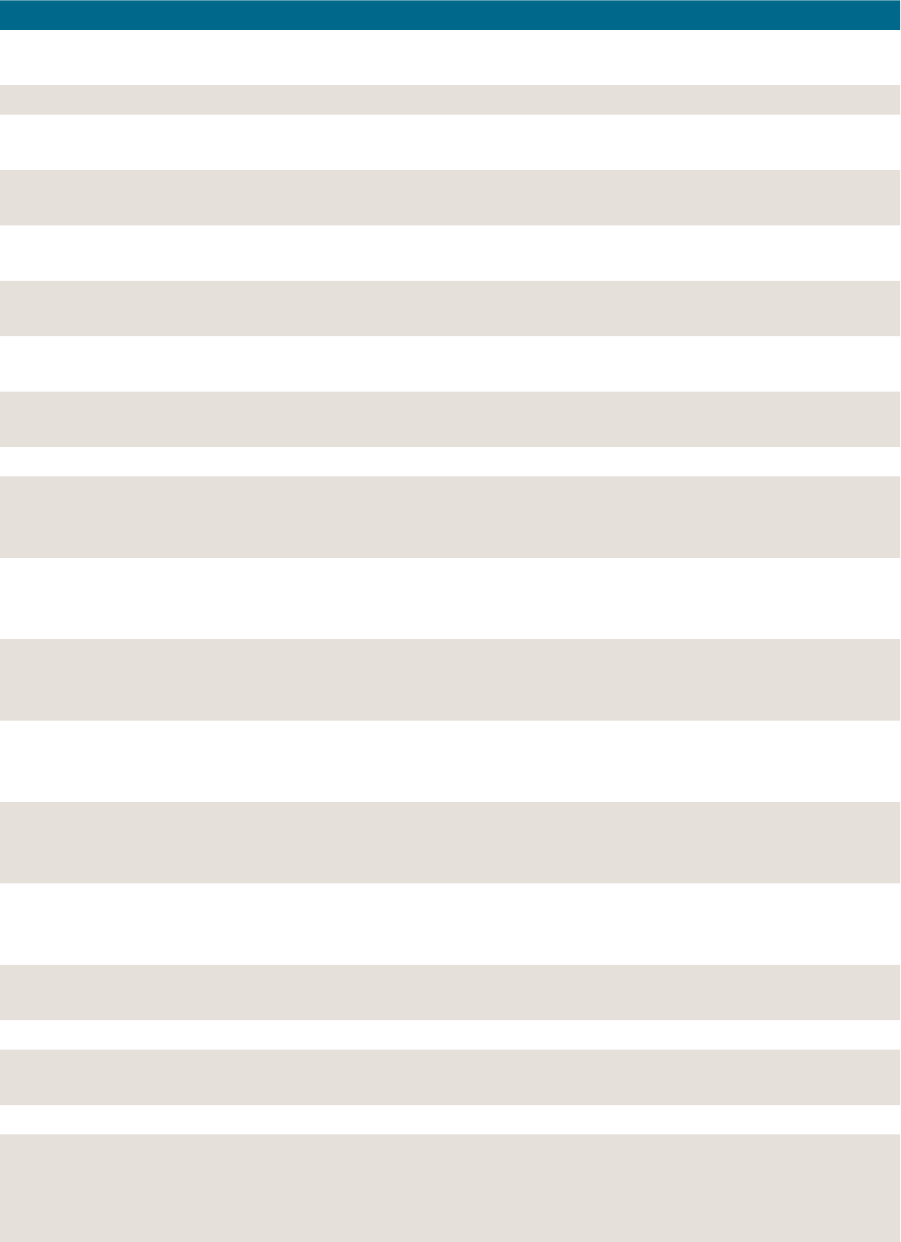
62
Provider Country Link
PayTM India https://www.livemint.com/money/personal-finance/paytm-wallet-charges-
for-adding-money-and-making-bank-transfers-11578674249825.html
PhonePe India https://www.phonepe.com/en/terms.html
PhonePe India https://www.techsuvam.com/phonepe-wallet-to-bank-transfer-process-with-
0-charge.html
State Bank
of India (SBI)
India https://www.ndtv.com/business/state-bank-of-india-sbi-service-charges-for-
atm-card-usage-net-banking-fund-transfer-penalty-fees-fo-2004041
State Bank
of India (SBI)
India https://www.sbi.co.in/web/personal-banking/accounts/saving-account/
basic-savings-bank-deposit-account
State Bank
of India (SBI)
India https://www.bankbazaar.com/ifsc/neft-sbi.html
State Bank
of India (SBI)
India https://www.ndtv.com/business/sbi-latest-imps-neft-rtgs-charges-1784440
Yono by SBI India https://www.financialexpress.com/money/good-news-sbi-waives-o-imps-
charges-from-this-date/1641949/
Yono by SBI India https://www.sbiyono.sbi/wps/portal/tnc
BCA (Debit
Paspor BCA
Platinum)
Indonesia https://lifepal.co.id/media/kartu-debit-bca/
BCA (Debit
Paspor BCA
Platinum)
Indonesia https://www.bca.co.id/en/individu/produk/e-banking/atm-bca
BCA (Debit
Paspor BCA
Platinum)
Indonesia https://pilihkartu.com/kartu-kredit/mandiri-visa-platinum.html
BCA (Debit
Paspor BCA
Platinum)
Indonesia https://duwitmu.com/tabungan/transfer-uang-ke-dari-luar-negeri/
BCA (Debit
Paspor BCA
Platinum)
Indonesia https://flip.id/biaya-transfer-antar-bank
BNI Indonesia http://gdputra.sta.ugm.ac.id/2014/03/19/cara-kirim-uang-ke-luar-negeri-
via-bank-bni/#:~:text=Menurut%20standar%20BNI%2C%20biaya%20
transfer,mata%20uang%20EUR%3A%2030%20EUR.
BNI Indonesia https://www.bni.co.id/creditcard/id-id/produk/
informasibiayadanperhitunganbunga
BNI Indonesia https://flip.id/biaya-transfer-antar-bank
BRI Indonesia https://harga.web.id/melayani-pengiriman-valuta-asing-inilah-kisaran-
biaya-jasa-wire-transfer-remittance-bri.info
BRI Indonesia https://duwitmu.com/kartu-kredit/kartu-kredit-bri/amp/
CIMB (CIMB
Clicks and CIMB
Mastercard
Premium)
Indonesia https://duwitmu.com/tabungan/transfer-uang-ke-dari-luar-negeri/
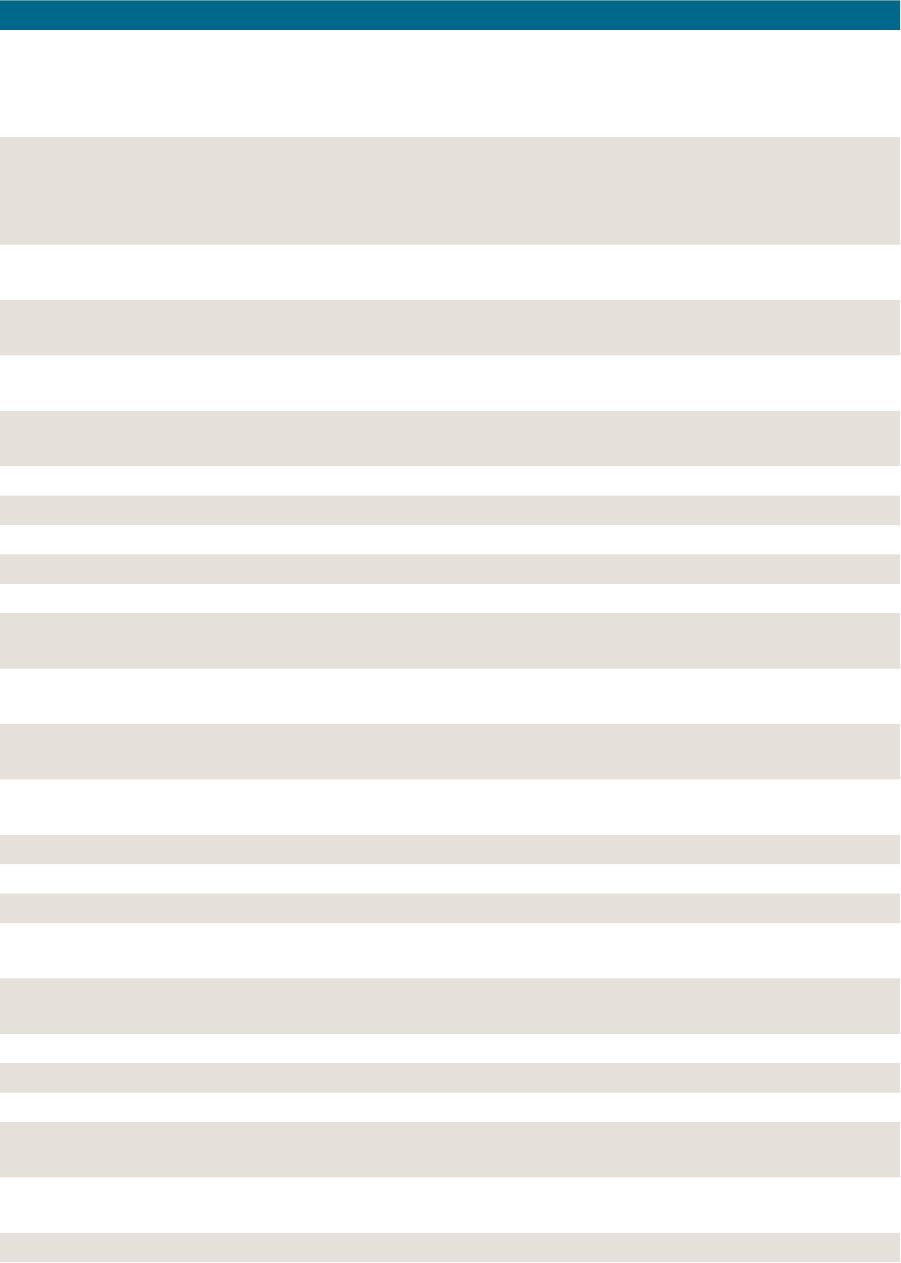
63
Provider Country Link
CIMB (CIMB
Clicks and CIMB
Mastercard
Premium)
Indonesia https://harga.web.id/info-lengkap-biaya-transfer-antar-bank-yang-ada-di-
indonesia.info
CIMB (CIMB
Clicks and CIMB
Mastercard
Premium)
Indonesia https://www.sepulsa.com/blog/limit-transfer-dan-biaya-administrasi-bank
Dana Indonesia https://www.cindenian.com/cara-transfer-saldo-dana-ke-akun-lain-
dengan-mudah/
Dana Indonesia https://technologue.id/perbandingan-biaya-admin-top-up-ovo-gopay-dana-
dan-linkaja/
Dana Premium Indonesia https://www.cindenian.com/cara-transfer-saldo-dana-ke-akun-lain-
dengan-mudah/
Dana Premium Indonesia https://technologue.id/perbandingan-biaya-admin-top-up-ovo-gopay-dana-
dan-linkaja/
GoPay Indonesia https://www.gojek.com/blog/gopay/cara-transfer-go-pay/
GoPay Indonesia https://www.gojek.com/blog/gopay/cara-transfer-bank-go-pay/
GoPay Indonesia https://www.gojek.com/gopay/cara-top-up/
GoPay Plus Indonesia https://www.gojek.com/blog/gopay/tips-jitu-berhasil-upgrade-akun-go-pay/
LinkAja Indonesia https://www.linkaja.id/faq
LinkAja Indonesia https://technologue.id/perbandingan-biaya-admin-top-up-ovo-gopay-dana-
dan-linkaja/
Mandiri (Debit
Visa Platinum)
Indonesia https://www.bankmandiri.co.id/tarif-layanan
Mandiri (Debit
Visa Platinum)
Indonesia https://www.mandirikartukredit.com/produk/platinum
Mandiri (Debit
Visa Platinum)
Indonesia https://flip.id/biaya-transfer-antar-bank
OVO Indonesia https://www.ovo.id/helpcenter/article/360025450012
OVO Premier Indonesia https://www.ovo.id/helpcenter/article/360025450012
OVO Premier Indonesia https://www.ovo.id/helpcenter/article/360025747491
ShopeePay Indonesia https://help.shopee.co.id/s/article/Bagaimana-cara-melakukan-Transfer-
saldo-ShopeePay-ke-teman
ShopeePay Indonesia https://help.shopee.co.id/s/article/Bagaimana-cara-saya-melakukan-
penarikan-dana-dari-ShopeePay
ShopeePay Indonesia https://www.viralorchard.com/cara-top-up-shopeepay-lewat-atm/
Japan Post Bank Japan https://tokyocheapo.com/living/japan-banks-comparison/
Japan Post Bank Japan https://origami-book.com/column/course-en/13868
Mitsubishi UFJ
Financial Group
Japan https://www.bk.mufg.jp/tesuuryou/furikomi.html
Mitsubishi UFJ
Financial Group
Japan https://tokyocheapo.com/living/japan-banks-comparison/
PayPay Japan https://yourstory.com/2019/08/paytm-softbank-yahoo-japan-digital-payment
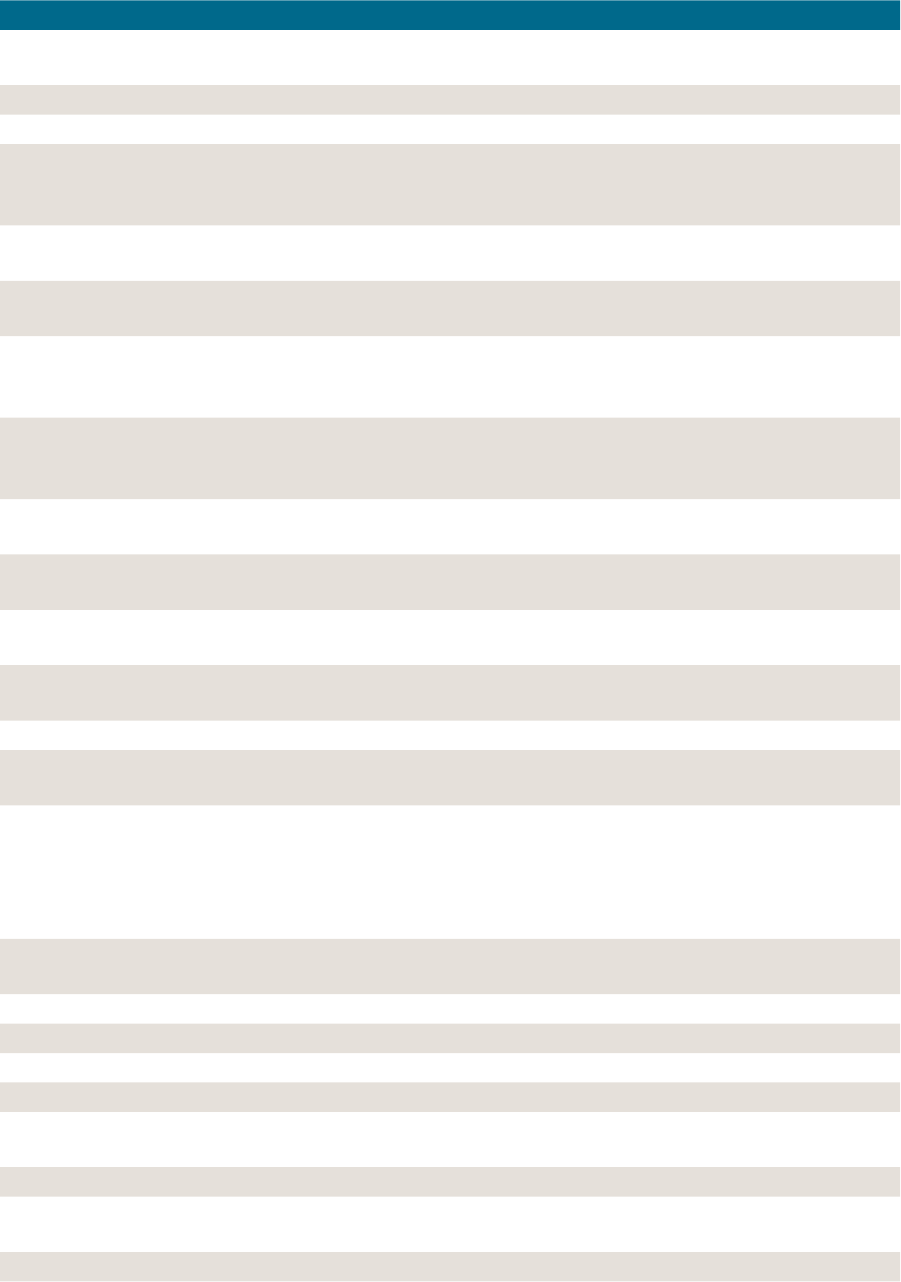
64
Provider Country Link
PayPay Japan https://blog.paytm.com/our-qr-tech-now-powers-japans-qr-based-
paypay-1b39ee3884c6
Pixiv Pay Japan https://pay.pixiv.net/
Rakuten Pay Japan https://www.rakuten.com/help/article/how-to-join-rakuten-360002101108
Rakuten Pay Japan https://global.rakuten.com/corp/news/press/2016/0926_01.
html#:~:text=No%20transfer%20fees%20are%20charged,of%20165%20
yen%20per%20transfer
Sumitomo Mitsui
Financial Group
Japan https://www.smbc.co.jp/kojin/fee/
Sumitomo Mitsui
Financial Group
Japan https://tokyocheapo.com/living/japan-banks-comparison/
Kakao Pay Korea, Rep. https://reviews.financesonline.com/p/kakaopay/#:~:text=The%20
Kakaopay%20service%20is%20free,are%20no%20enterprise%20pricing%20
plans
Kakao Pay Korea, Rep. https://m.blog.naver.com/PostView.nhn?blogId=the_
esc&logNo=220706924398&proxyReferer=https:%2F%2Fwww.google.
com%2F
KB Kookmin
Bank
Korea, Rep. https://bankmeister.com/korea/bank/kb#tab_fee
KB Kookmin
Bank
Korea, Rep. http://img2.kbstar.com/obj/eng/f_guide.pdf
KB Kookmin
Bank
Korea, Rep. https://obank1.kbstar.com/quics?page=C024835
KB Kookmin
Bank
Korea, Rep. https://obank1.kbstar.com/quics?page=C024843
KEB Hana Bank Korea, Rep. https://bankmeister.com/korea/bank/keb#tab_fx_fee
KEB Hana Bank Korea, Rep. https://www.kebhana.com/cont/mall/mall09/mall0906/mall090601/
mall09060101/index.jsp
Naver Pay Korea, Rep. https://campaign.naver.com/npay/sendmoney_
howto/#:~:text=%EC%86%A1%EA%B8%88%20%EB%B3%B
4%EB%82%B4%EA%B8%B0,%ED%9A%9F%EC%88%98%20
%EC%A0%9C%ED%95%9C%20%EC%97%86%EC%9D%B4%20%EC%
88%98%EC%88%98%EB%A3%8C%20%EB%AC%B4%EB%A3%8C!
Naver Pay Korea, Rep. https://m.blog.naver.com/PostView.nhn?blogId=the_esc&logNo=
220706924398&proxyReferer=https:%2F%2Fwww.google.com%2F
PayCo Korea, Rep. https://www.payco.com/
Samsung Pay Korea, Rep. https://reviews.financesonline.com/p/samsung-pay/
Samsung Pay Korea, Rep. https://www.samsung.com/sec/samsung-pay/finance/
Shinhan Bank Korea, Rep. https://bankmeister.com/korea/bank/shinhan#tab_fx_fee
Shinhan Bank Korea, Rep. http://img.shinhan.com/nexhpe/ko/news/201001280441159_12646435130
00000173.pdf
Shinhan Bank Korea, Rep. https://bank.shinhan.com/en/index.jsp#015004020000
Shinhan Bank Korea, Rep. https://oldm.shinhan.com/pages/notice/mbanking_commission_info.
jsp?select_cate=1
Toss Korea, Rep. https://blog.toss.im/2019/12/12/toss/guide/newtosscard/
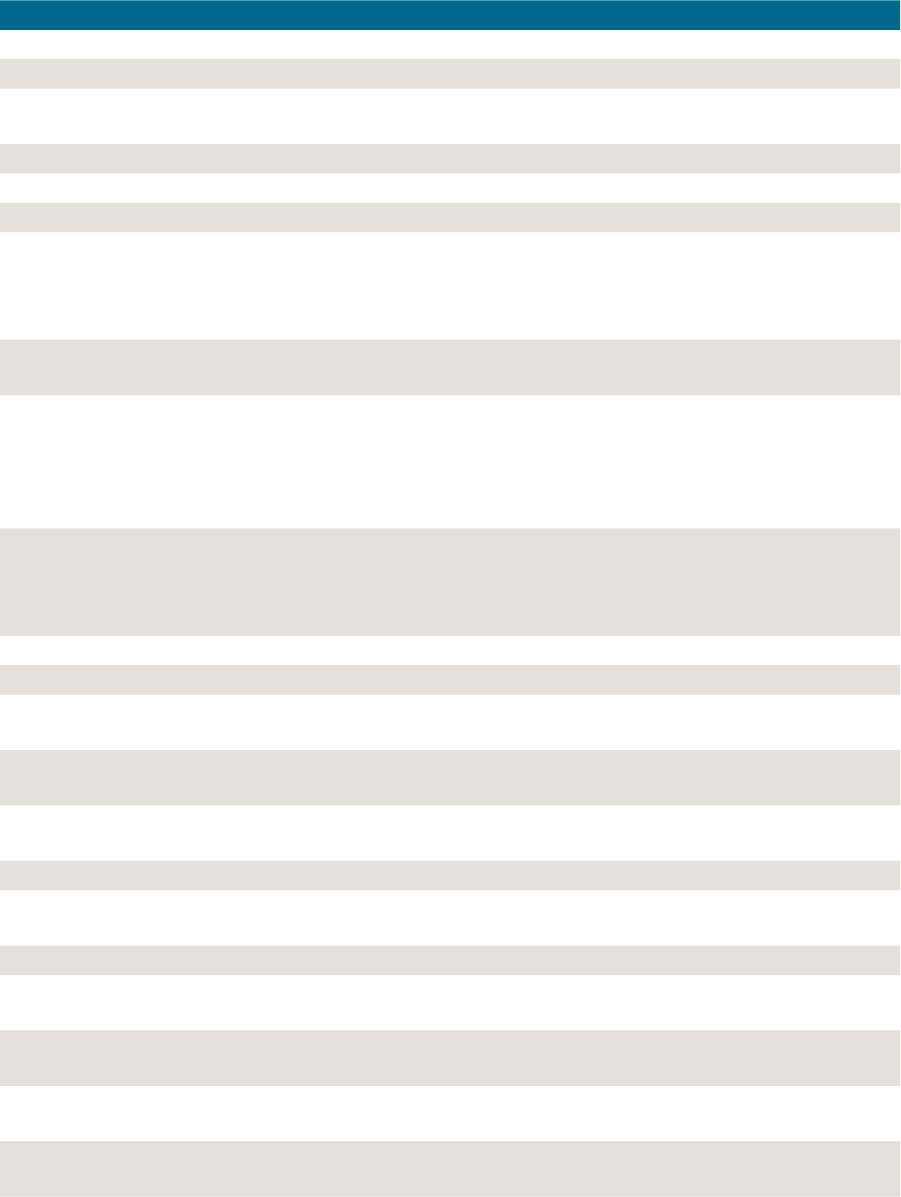
65
Provider Country Link
Toss Korea, Rep. https://blog.toss.im/2019/03/06/toss/guide/toss-best-5-hidden-features/
Toss Korea, Rep. https://blog.toss.im/2020/07/01/toss/guide/toss-transfer/
Toss Korea, Rep. http://blog.naver.com/PostView.nhn?blogId=parosaone&log
No=221505687356
BigPay Malaysia https://www.bigpayme.com/fees-charges
Boost Malaysia https://www.myboost.com.my/product-disclosure/
Gopayz Malaysia https://gopayz.com.my/product-disclosure-sheet/
Maybank
Anytime
Everywhere
(MAE)
Malaysia https://www.google.nl/url?sa=t&source=web&rct=j&url=https://www.
maybank2u.com.my/iwov-resources/pdf/personal/digital_banking/MAE_
PDS.pdf&ved=2ahUKEwjR55C5oJbsAhXZbCsKHbv5B1
wQFjABegQIExAI&usg=AOvVaw0ildlUVkbGOt59B8VH15Wl
MBSB Bank
e-wallet
Malaysia https://www.mbsbbank.com/storage/misc/FINAL%20e-wallet%20
TC18082020_.pdf
ShopeePay Malaysia https://ringgitplus.com/en/blog/e-wallet/Shopee-Releases-Its-
Own-E-Wallet-ShopeePay.html?utm_source=facebook&utm_
medium=social&utm_campaign=my-fbsoc-gen-gen&utm_
content=EWT-SPP-20190711&fbclid=IwAR3mIiOHg0rv9OZ2
HVm-a-HEDkLpI_NVTiOarRWm6dP4d6zqkevxOaEsaSo
Touch ’n Go
eWallet
Malaysia https://www.google.nl/url?sa=t&source=web&rct=j&url=https://cdn-web.
tngdigital.com.my/images/cdnimages/pds.pdf&ved=2ahUKEwjroeXmzp
XsAhXDV30KHaSOAG0QFjAEegQIExAH&usg=AOvVaw0GCe
BzRH_2kG67zatlm3l3
WeChat Pay Malaysia https://pay.wechat.com/en_my/faq.html
AYA Bank Myanmar https://www.ayabank.com/en_US/ayaworldremit/
CB Bank Myanmar https://www.cbbank.com.mm/en/consumer-banking/daily-banking/local-
payment-transfer/local-fund-transfer-remittance
Kanbawza Bank
Limited (KBZ)
Myanmar https://www.kbzbank.com/en/accounts/saving-deposit-account/
Kanbawza Bank
Limited (KBZ)
Myanmar https://www.kbzbank.com/en/remittance/international-remittance/
M-Pitesan Myanmar https://ooredoo.com.mm/portal/en/mpitesantari
Wave Money Myanmar https://www.wavemoney.com.mm/products-prices/wave-account/
using-app/
ANZ New Zealand https://www.anz.co.nz/rates-fees-agreements/personal-accounts/
Kiwibank New Zealand https://media.kiwibank.co.nz/media/documents/Personal_banking_fees_
and_limits_brochure_Mar20.pdf
Westpac New Zealand https://www.westpac.co.nz/assets/Personal/Your-Money-and-Tailored-
Packs/Brochures/transaction_service_fees.pdf
BDO Philippines https://www.bdo.com.ph/personal/accounts/peso-savings-account/
atm-savings
BDO Philippines https://www.bdo.com.ph/support-topics/vi-internet-banking-
requesting-special-services/wire-transfer-there-service-charge
BDO Philippines https://fintechnews.sg/36161/fintechphilippines/philippines-banks-
atm-fees-compared/
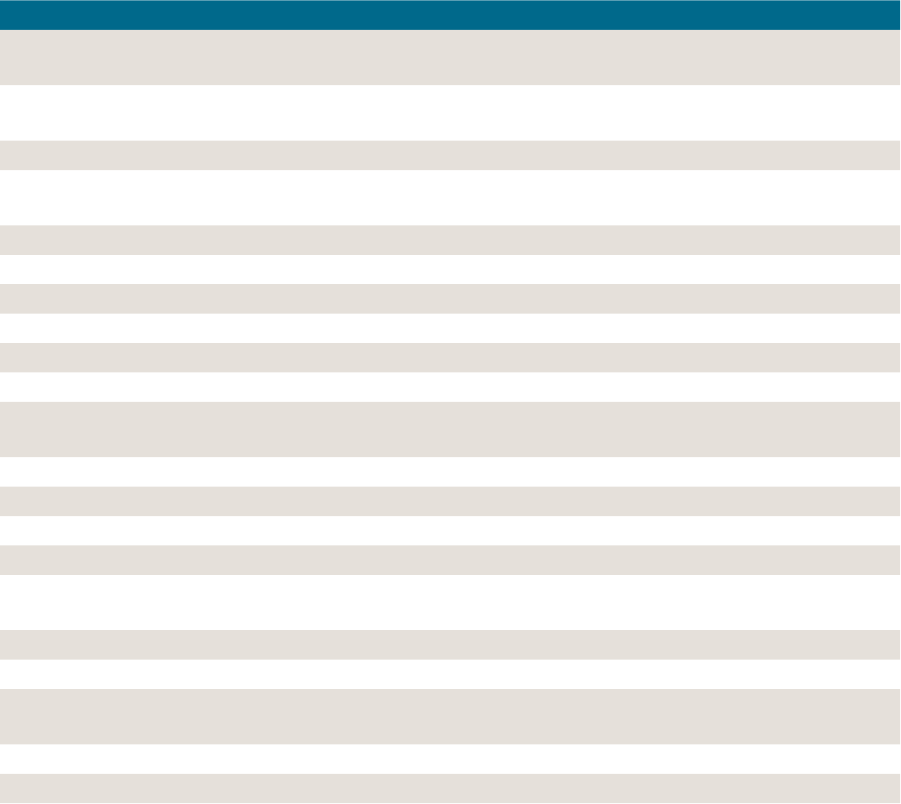
66
Provider Country Link
BPI Philippines https://www.bpiexpressonline.com/p/1/326/deposit-rates-savings-
and-checking
BPI Philippines https://www.bpiexpressonline.com/p/1/691/account-maintenance-
and-transaction-fees
BPI Philippines https://www.bpiexpressonline.com/p/1/694/international-wire-transfer
GCash Philippines https://help.gcash.com/hc/en-us/articles/900001636203-What-are-the-fees-
I-may-encounter-in-GCash-
GCash Philippines https://debtbombers.com/qa/can-i-use-gcash-mastercard-abroad.html
Metrobank Philippines https://metrobank.com.ph/rates-and-fees
PayMaya Philippines https://www.negosyo.paymaya.com/merchant
PayMaya Philippines https://store.paymaya.com/pages/faq
PayMaya Philippines https://www.paymaya.com/terms-and-conditions
DBS Bank Singapore https://www.dbs.com.sg/personal/cards/debit-cards/dbs-visa-debit
DBS Bank Singapore https://www.dbs.com.sg/personal/deposits/pay-with-ease/
international-transfers
AirPay Thailand https://app.airpay.in.th/en/home
Bangkok Bank Thailand https://www.bangkokbank.com/en/Personal/Other-Services/View-Rates
K Plus Thailand https://kasikornbank.com/en/rate
Kasikorn Bank Thailand https://kasikornbank.com/en/rate
Line Pay Thailand https://help.line.me/line/ios/pc?country=TH&lang=en&contentId=
20013092
mPay Thailand https://www.ais.co.th/mpaypromptpay/en/
SCB Easy Thailand https://www.scbeasy.com/v1.4/site/presignon/en/srv/srv_ftb.asp
Siam Commercial
Bank
Thailand https://www.scb.co.th/en/personal-banking/rates-fees.html
TrueMoney Thailand https://www.truemoney.com/rates-en/
VietinBank Vietnam https://www.vietinbank.vn/web/home/en/fees/usd.html
Appendix 3. Key stakeholders and regulations
On the regulatory side, two governing bodies play critical roles in shaping the landscape of
digital finance in Indonesia, namely, Bank Indonesia (BI) and Otoritas Jasa Keuangan (OJK,
the Financial Services Authority). BI, the central bank of Indonesia, is the monetary authority
as well as the regulatory and supervisory authority of the banking and payment system.
On the other hand, OJK was established to promote and organize a system of regulations
and supervisions that is integrated into the overall activities in the financial services sector,
including nonbank financial institutions. Although the two institutions oversee dierent
aspects of financial institutions, they have similar and occasionally overlapping initiatives
related to financial inclusion policies. In addition to these two institutions, the Dewan
Nasional Keuangan Inklusif (National Financial Inclusion Council) serves in a coordinating
and advisory role on financial inclusion initiatives across dierent government institutions.
Other government institutions that indirectly shape the regulatory landscape of digital
financial services are the Ministry for Communication and Informatics (MINFO) and
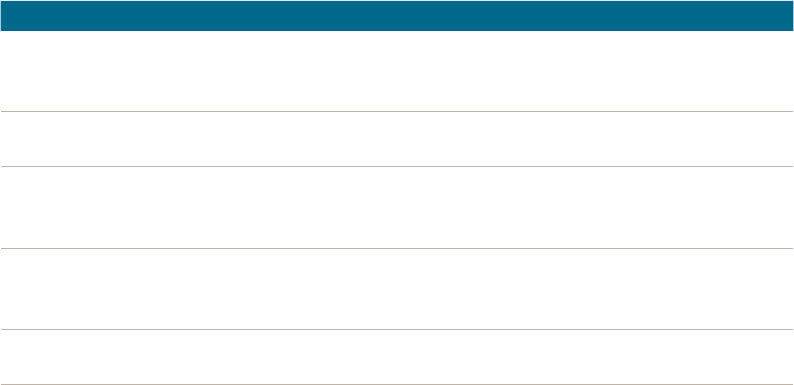
67
Ministry of State-Owned Enterprises. It was MINFO that issued Law No. 11 Year 2008 on
Information and Electronic Transactions, which proved to be a key regulation behind the
growth of digital financial services. The Ministry of State-Owned Enterprises, responsible
for directing the long-term business plans of such enterprises, played a key role in setting
up LinkAja, one of the major providers of e-money. The involvement of the state-owned
MNO, PT Telkomsel, in LinkAja followed several failed attempts by MNOs to develop
mobile money in Indonesia.
The last set of key stakeholders is the users and potential users of the digital payment
services. Expanding digital financial services at the extensive margins is the goal of financial
inclusion programs. Branchless banking agents, who provide financial services through both
e-money and BSAs, as well as “accidental agents,” such as GoJek drivers and merchants, who
provide payment services using e-money, play an important role. For e-commerce-based
providers like GoJek, expanding their users may not be limited to tapping into those who
already have access to digital financial services, but also to segments of the population who
are still excluded. E-commerce platforms, especially, will likely seek to expand their networks
of merchants as well as users.
Several key regulations have aected the country’s digital financial markets in recent years.
Some of these regulations were formulated with the specific aim to promote digital financial
markets and at the same time protect customers and providers alike. There are other
regulations, both preexisting and new, that were not specifically formulated to govern the
industry but nevertheless have consequences—sometimes unintended—on the market
structures and degree of competition as well as other aspects of digital financial markets. As
the digital financial services market has flourished, more regulations have been established
to address issues brought about by new types of financial products such as P2P lending.
Both BI and OJK have issued regulations regarding a regulatory “sandbox,” aimed to
accommodate innovations in digital financial services. Table A.3.1 summarizes the key
regulations on digital financial services enacted through October 2020.
Table A.3.1. Key regulations on digital financial services, Indonesia,
through October 2020
Year Institution Regulation Description
2008 MINFO/
Federal
government
Law No. 11/2008 On Information and Electronic Transactions
2012 Federal
government
Government Regulation
No. 82/2012
On the Implementation of Electronic Systems
and Transactions
2016 MINFO/
Federal
government
Minister Regulation
No. 4/2016
On Information Protection Management
Systems
2016 MINFO/
Federal
government
Minister Regulation
No. 20/2016
On Protection of Personal Data in Electronic
Systems
2016 Federal
government
President Regulation
No. 82/2016
On National Strategy for Financial Inclusion
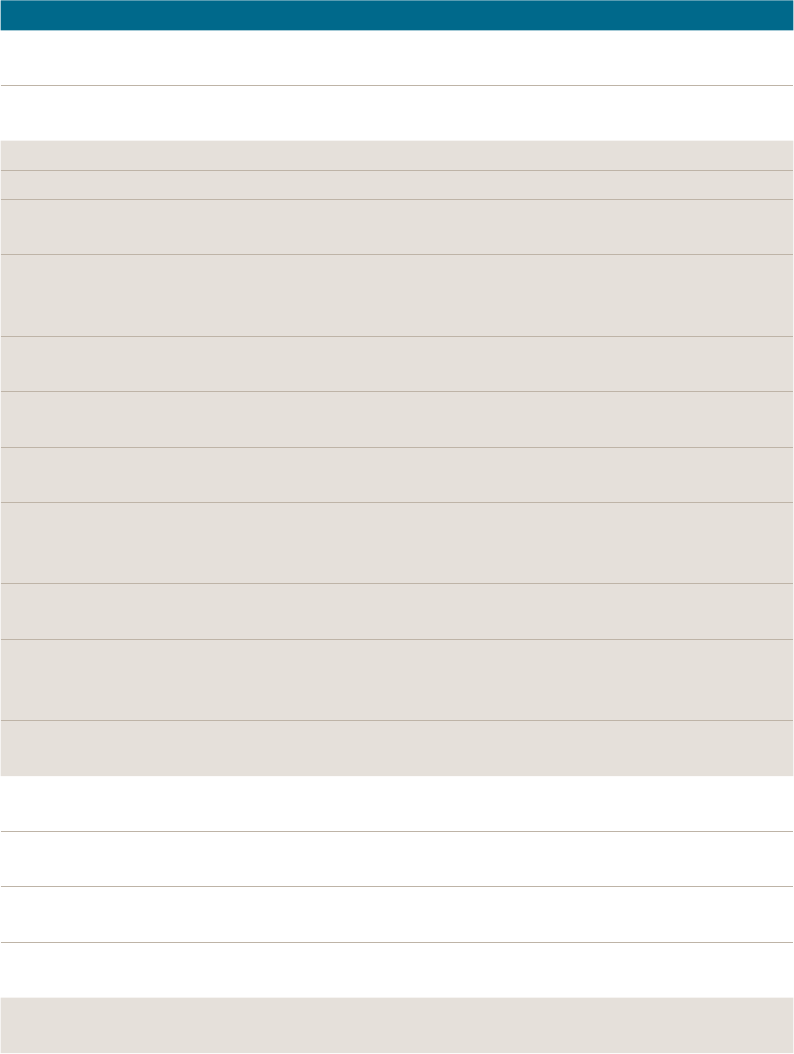
68
Year Institution Regulation Description
2017 Federal
government
President Regulation
No. 74/2017
On E-Commerce Road Map
2020 Federal
government
President Regulation
No. 114/2020
On National Strategy for Financial Inclusion
(Updated)
2006 BI BI Regulation No. 8/2006 On Money Transfer
2009 BI BI Regulation No. 1 1/2009 On Electronic Money
2009 BI BI Circular Letter
No. 11/2009
On Implementation of Card-Based Payment
Instrument Activities
2012 BI BI Regulation No. 14/2012 Revision on the Implementation of Card-
Using Payment Instrument Activities
(& Electronic Money)
2014 BI BI Circular Letter
No. 16/2014
On the Implementation of Electronic Money
2015 BI BI Circular Letter
No. 17/2015
Revision on the Implementation of Electronic
Money (revised the cash-out limit)
2016 BI BI Regulation No. 18/2016 Revision on Electronic Money (including
payment system processing)
2016 BI BI Circular Letter
No. 18/2016
On the Implementation of Digital Financial
Service and Electronic Money (revised limit
for loan interest rate)
2017 BI BI Regulation No. 19/2017 On Operation of Financial Technology
(national payment gateway)
2017 BI BI Board of Governors
Regulation No. 19/2017
On Governance for Registration, Information
Sharing and Surveilance for Fintech (including
fintech regulatory sandbox)
2019 BI BI Board of Governors
Regulation No. 21/2019
On Payment using Quick Response Code
Indonesia Standard—QRIS
2013 OJK OJK Regulation
No. 1/2013
On Consumer Protection in Financial Sector
2016 OJK OJK Regulation
No. 77/2016
On P2P Lending
2017 OJK OJK Circular Letter
No. 18/2017
On P2P Lending Risk Management and
Governance
2018 OJK OJK Regulation
No. 13/2018
On Digital Financial Innovation in Financial
Service Sector (including regulatory sandbox)
2017 Ministry of
Public Works
Minister Regulation
No. 16/2017
On Non-cash Transactions on Toll Roads
(starting October 31, 2017)
69
Appendix 4. The decision tree methodology: further details
This appendix extends the discussion in Section 3 by providing additional details regarding
the methodology used in this paper. The complete analytical framework, the principles of the
methodology, and numerous examples can be found in “A Decision Tree for Digital Financial
Inclusion Policymaking” (Claessens and Rojas-Suárez 2020).
The methodology is inspired by work on growth diagnostics by Hausmann, Rodrik, and
Velasco (2005) and Hausmann, Klinger, and Wagner (2008), who created a decision tree to
identify the binding constraints on growth in developing economies—that is, the factors
that are preventing countries from reaching their growth potential. The motivation behind
this framework is to oer a diagnostic tool that will help policymakers prioritize areas
where actions are needed the most and can have the largest impact. Many factors can be
constraints—indeed, all the branches in the decision tree are determinants of financial
inclusion—but the methodology seeks to find those that are binding.
Hence, the decision tree for digital financial inclusion outlines a set of potential constraints
that analysts have to evaluate in order to determine which are binding, in the sense that
they are the root causes limiting the expansion of financial inclusion. Claessens and Rojas-
Suárez (2020) oered three dierent trees, for payment, store of value, and credit services,
respectively, though some constraints are naturally common to the three trees. These trees
have served us as a guide in the search for the binding constraints on digital payments and
transfers in Indonesia.
The decision tree for digital payments and transfers is presented in Figure 5. We evaluate all
the branches (and sub-branches) of the tree to identify the binding constraints on financial
inclusion, applying the following principles:
1. Prices of financial services are key indicators to determine whether binding
constraints are (likely) on the demand or the supply side. Observing low quantities
(low usage) of a service does not indicate whether the constraints are aecting
providers or consumers. Analysts can get an initial idea of whether binding
constraints are on the supply or the demand side by considering prices, though
they should evaluate all the branches in the tree individually. Generally, if the price
of a service is relatively high compared with either another similar service or the
(properly adjusted) customary price charged in other countries with similar levels
of development, it indicates the existence of supply-side constraints (left graph in
Figure A4.1). This situation suggests that providers are willing to supply the service
only at a high price (due to high costs or other distortions related to supply-side
constraints). These high prices, as a result, exclude significant proportions of the
population, who cannot aord the service. On the other hand, a relatively low price
would indicate a demand-side problem, since users are unable or unwilling to use the
service despite its low price (right graph in Figure A4.1).
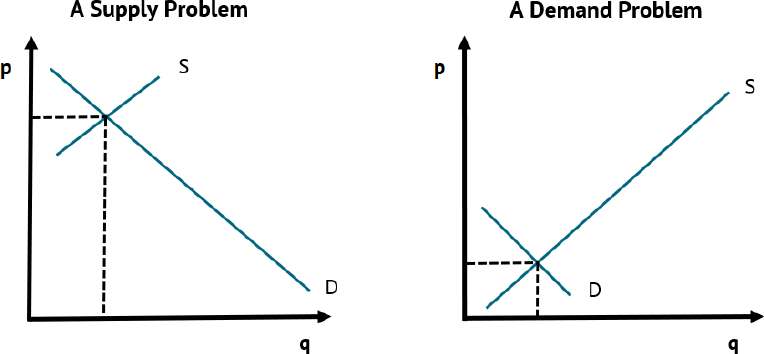
70
Figure A4.1. Distinguishing between supply and demand problems
Note: S and D represent, respectively, the supply of and demand for a financial service, and p and q represent,
respectively, the price and quantity used of that service. Actual usage occurs at the intersection of both curves.
Source: Claessens and Rojas-Suárez (2020) taken from Hausmann et al (2008).
In addition, in many cases, it is necessary to consider a broader definition
of prices, accounting for potential unobserved shadow prices and other
factors, such as opportunity costs, that aect the market equilibrium. A
clear example is geographical constraints, whereby the opportunity cost
of displacement is built-in for customers and might cause low demand.
The three other principles indicate that a constraint is likely binding in one or more of the
following cases:
2. If relaxing the constraint results in a significant change in usage or other relevant
behaviors—for example, if reducing or eliminating certain taxes on payment services
causes a sharp rise in the usage of the services
3. If agents are trying to overcome or bypass the constraint by using either equivalent
alternative services (such as informal lending in a study of credit markets) or a
combination of other, less ecient, financial instruments
4. If agents less intensive in that constraint are thriving—that is, if the constraint
aects only a subpopulation and those not aected by it are largely financially
included. For example, in countries where institutional and governance quality is
low, the ability to use financial services may depend on factors other than those
driving the sound conduct of business, such as political connections. If so, one
should observe that those with privilege to use the services do better than would be
expected given their capacities.
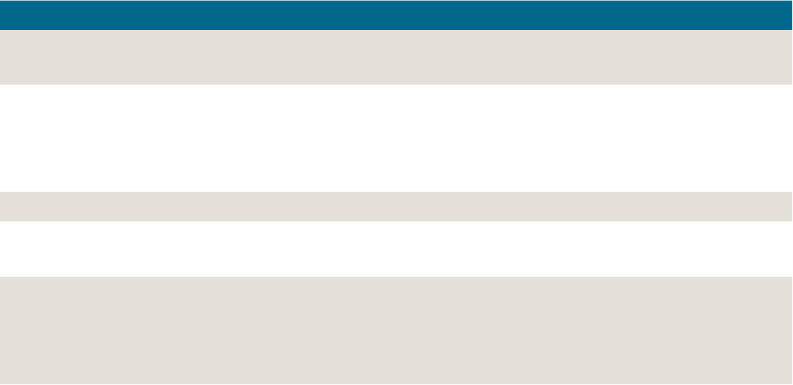
71
Further considerations to take into account when using the decision tree methodology
include these:
• When assessing whether a constraint (branch in the tree) is binding, analysts
need to consider as many indicators as possible, including hard data as well
as surveys reflecting perceptions. Claessens and Rojas-Suárez (2020) suggested
possible indicators to use on each of the branches, but analysts should select a set
of indicators based on the specific characteristics and context of both the services
and the country under study. Data should encompass both aggregate and microlevel
statistics.
• Keep in mind that removing nonbinding constraints might be necessary to expose
a binding constraint. For instance, allowing mobile money to operate by law can
ease a constraint but, while necessary, it might not be sucient to improve financial
inclusion. Relaxing this constraint might instead help to uncover a truly binding
constraint, such as the lack of a critical mass of customers (a coordination problem).
• Acknowledge that branches can interrelate. In some cases, to fully evaluate a branch
requires analyzing others. Analysts should draw the necessary connections and assess
which indicators to use to evaluate each of the branches.
Appendix 5. Sources for account registration requirements
Table A5.1. Sources of data displayed in Table 2, requirements to open an account
Account type Source
BSA (Laku Pandai) https://www.bankmandiri.co.id/tabungan-simakmur
https://bri.co.id/tentang-brilink
Regular savings account https://www.cermati.com/artikel/cara-buat-rekening-
di-bank-bca-berapa-saldo-minimalnya
https://lifepal.co.id/media/tabungan-mandiri-ini-pilihan-
dan-syarat-buka-rekeningnya/
Card-based e-money https://www.cermati.com/e-money/flazz-bca
Server-based e-money https://www.gojek.com/gopay/kebijakan-privasi/
https://www.cermati.com/e-money/ovo
Premium server-based e-money https://www.gojek.com/blog/gopay/tips-jitu-berhasil-
upgrade-akun-go-pay/
https://keuangan.kontan.co.id/news/mau-upgrade-ovo-
premium-tersedia-lima-langkah-ini
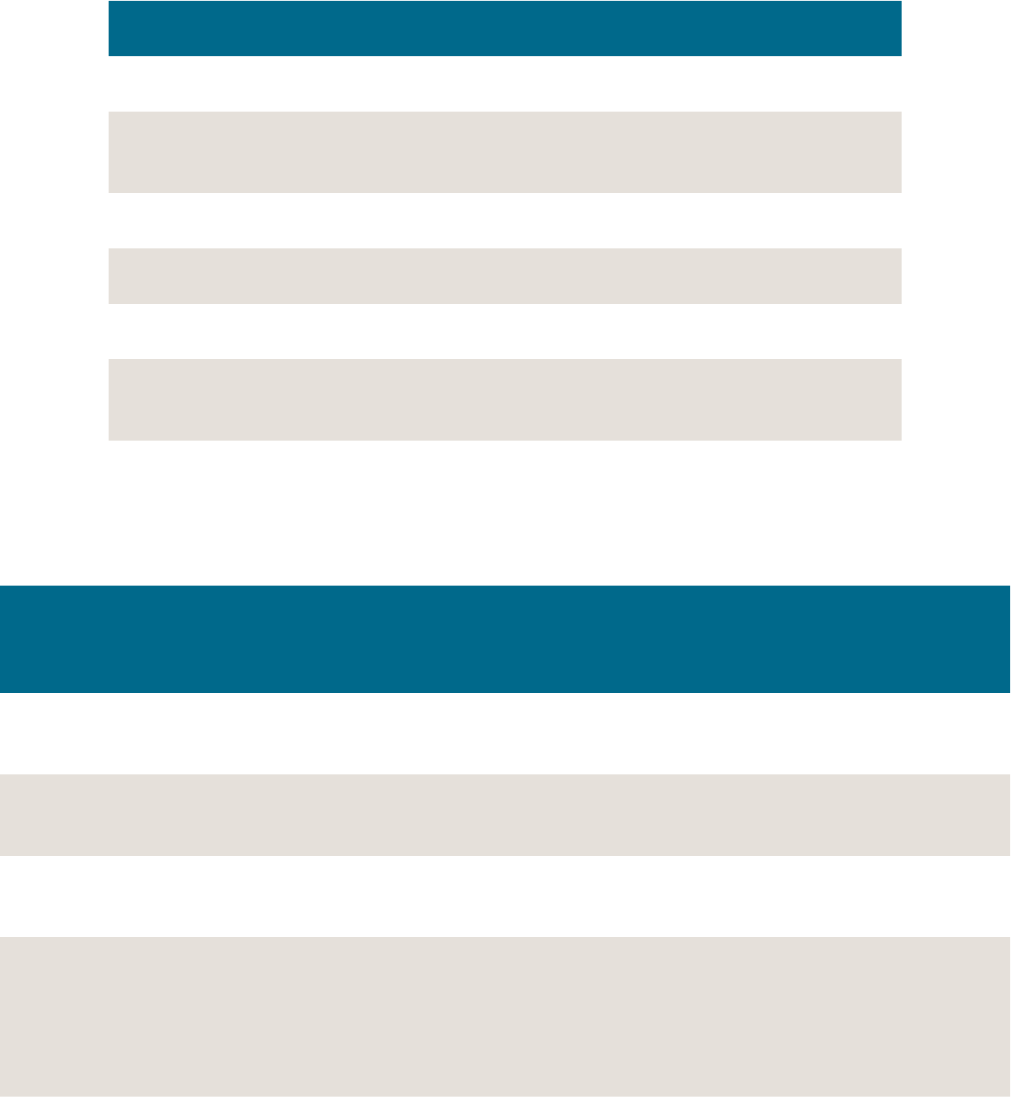
72
Appendix 6. Sources for telco provider–level prices
Table A6.1. Sources of data displayed in Figure 19, average price
per 100 gigabytes of data
Provider name
(company)
Package name Source
XL (XL Axiata) Xtra Combo Plus
Reguler
https://www.xl.co.id/id/mobile/prabayar/paket-dan-tarif/
internet/xtra-combo-plus
Telkomsel
(Telekomunikasi
Seluler)
Paket Internet
OMG! Telkomsel
Simpati
https://www.telkomsel.com/en/internet-telkomsel/
paket-internet-simpati?page=3
Indosat Ooredoo
(Indosat)
Freedom Combo https://indosatooredoo.com/portal/id/psfreedomcombo
SmartFren Unlimited MAXI https://www.smartfren.com/en/explore/product/
unlimited/
Tri (Hutchinson 3
Indonesia)
Mix Combo https://tri.co.id/PaketMixTri
Net1 (Sampoerna
Telekomunikasi
Indonesia)
Paket Business
Pro 50
https://net1.co.id/id/personal
Appendix 7. Sources for institution-level fraud data
Table A7.1. Sources of data displayed in Table 6, cases of institution-level fraud
Institution Company
type
Period Type of breach,
fraud, or crime
Potential
number of
impacted
users
Source
Tokopedia E-commerce July
2020
Privacy breach on
customer data
91 million
consumers
https://www.thejakartapost.com/news/2020/
05/04/tokopedia-data-breach-exposes-
vulnerability-of-personal-data.html
Government
of Indonesia
Government June
2020
Privacy breach on
COVID-19 test
takers’ data
230,000
citizens
https://www.thejakartapost.com/
news/2020/06/20/hacker-allegedly-breaches-
govt-database-on-covid-19-test-takers.html
MeMiles Fintech Jan.
2020
MeMiles conducted
a Ponzi scheme using
users’ funds
264,000
users
https://mediakonsumen.com/2018/10/27/
surat-pembaca/akun-akulaku-dibobol-penipu-
yang-mengatasnamakan-akulaku
Dompet
Kartu &
Pinjam
Beres
Fintech Dec.
2019
Illegal fintech
operation as classified
by OJK; harassment
and misuse of
personal data in
billing enforcement
Undisclosed https://keuangan.kontan.co.id/news/kasus-vega-
data-dan-barracuda-fintech-satgas-investasi-beri-
apresiasi-ke-polisi?page=1
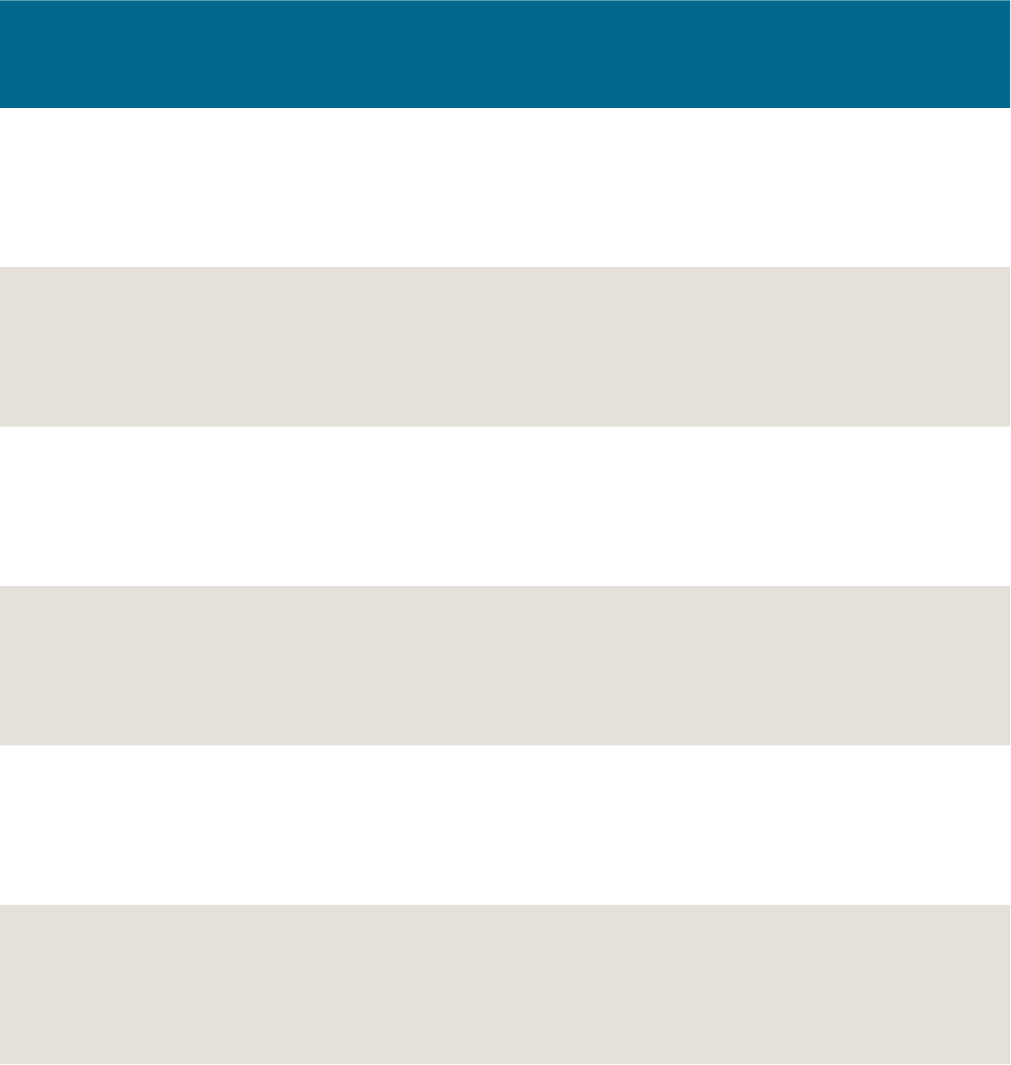
73
Institution Company
type
Period Type of breach,
fraud, or crime
Potential
number of
impacted
users
Source
Incash Fintech July
2019
Illegal fintech
operation as classified
by OJK; harassment
and misuse of
personal data in
billing enforcement
Undisclosed https://wow.tribunnews.com/amp/2019/07/
26/5-fakta-pinjaman-online-incash-setelah-
viral-iklan-wanita-rela-digilir-untuk-bayar-
utang?page=4
Dompet
Gajah
Fintech Oct.
2020
Illegal fintech
operation as classified
by OJK; harassment
and misuse of
personal data in
billing enforcement
Undisclosed https://m.cyberthreat.id/read/8995/Fintech-
Ilegal-Dompet-Gajah-Muncul-Kembali-di-Play-
Store-OJK-Itu-Mungkin-Aplikasi-Baru
DanaCepat Fintech Oct.
2018
Illegal fintech
operation as classified
by OJK; harassment
and misuse of
personal data in
billing enforcement
Undisclosed https://www.google.com/amp/s/www.bbc.
com/indonesia/trensosial-46107193.amp
CoCo Tek Fintech Aug.
2019
Illegal fintech
operation as classified
by OJK; harassment
and misuse of
personal data in
billing enforcement
Undisclosed https://www.google.com/amp/s/www.inews.
id/amp/news/nasional/nasib-pahit-ayu-korban-
fintech-ilegal-pinjam-rp700000-dipaksa-bayar-
rp36-juta
Koperasi
FKSS
Fintech March
2020
Illegal fintech
operation as classified
by OJK; harassment
and misuse of
personal data in
billing enforcement
Undisclosed https://www.google.com/amp/s/prfmnews.
pikiran-rakyat.com/citizen-report/amp/
pr-13347939/nasib-pahit-dedi-korban-fintech-
ilegal-gara-gara-telat-bayar-nama-baiknya-
dicemarkan
TunaiCepat Fintech Jan.
2020
Illegal fintech
operation as classified
by OJK; harassment
and misuse of
personal data in
billing enforcement
Undisclosed https://makassar.tribunnews.com/
amp/2020/01/08/waspada-penjual-bubur-di-
makassar-jadi-korban-fintech-ilegal-modusnya
74
9. References
BI (Bank Indonesia). 2013. Payment System Statistics 2013. Jakarta.
———. 2021a. “APMK Infrastruktur.” Accessed June 1st, 2021. https://www.bi.go.id/id/
statistik/ekonomi-keuangan/ssp/apmk-infrastruktur.aspx.
———. 2021b. “Statistik Sistem Pembayaran (Payment System Statistics).” Accessed
June 1st, 2021. https://www.bi.go.id/id/statistik/ekonomi-keuangan/ssp/uang-
elektronik-jumlah.aspx.
———. 2021c. “BI dan Industri Targetkan Perluasan QRIS Capai 12 Juta Merchant di 2021.”
Accessed on April 2021. https://www.bi.go.id/id/publikasi/ruang-media/news-release/
Pages/sp_233721.aspx.
Basri, C., and H. Hill. 2020. “Making Economic Policy in a Democratic Indonesia: The First
Two Decades.” Asian Economic Policy Review15 (2): 214–234.
BCG (Boston Consulting Group). 2019. “CICO Economics in Indonesia: Research
Findings.” Microsave Consulting, Lucknow and Nairobi.
Beck, T., A. Demirguc-Kunt, and M. S. M. Peria. 2006. “Banking Service for Everyone?
Barriers to Bank Access and Use around the World.” Policy Research Working Paper,
World Bank, Washington, DC. https://doi.org/10.1596/1813-9450-4079.
Behrman, J. R., O. S. Mitchell, C. K. Soo, and D. Bravo. 2012. “How Financial Literacy
Aects Household Wealth Accumulation.”American Economic Review102 (3): 300–304.
Bourreau, M., and Valletti, T. 2015. Enabling digital financial inclusion through
improvements in competition and interoperability: What works and what doesn’t.
CGD Policy Paper,65, pp. 1–30.
BPS (Statistics Indonesia). 2018. National Socio-economic Survey (SUSENAS) 2018. Jakarta.
———. 2019a. National Socio-economic Survey (SUSENAS) 2019. Jakarta.
———. 2019b. Statistik Angkatan Kerja Nasional (SAKERNAS) 2019. Jakarta.
———. 2020a. “Area and Number of Islands by Province, 2019.” https://
www.bps.go.id/indikator/indikator/view_data_pub/0000/api_pub/
UFpWMmJZOVZlZTJnc1pXaHhDV1hPQT09/da_01/1.
———. 2020b. “Village Potential Statistics (PODES) 2018.” Harvard Dataverse, V2.
https://doi.org/10.7910/DVN/87KYRV.
———. 2021a. “Dynamic Table for Subject Public Finance.” Accessed June 1st, 2021.
https://www.bps.go.id/subject/13/keuangan.html#subjekViewTab5.
———. 2021b. “Proportion of Individuals Who Use the Internet by Province (Percent),
2017–2019.” Accessed May 30. https://www.bps.go.id/indicator/27/1225/1/proporsi-
individu-yang-menggunakan-internet-menurut-provinsi.html.
CGAP (Consultative Group to Assist the Poor). 2010. “Update on Regulation of Branchless
Banking in Indonesia.” Washington, DC.
Claessens, S. 2006. “Access to Financial Services: A Review of the Issues and Public Policy
Objectives.”The World Bank Research Observer21 (2): 207–240.
Claessens, S., and L. Rojas-Suárez. 2020.“A Decision Tree for Digital Financial Inclusion
Policymaking.” Working Paper 525, Center for Global Development, Washington, DC.
https://www.cgdev.org/publication/policy-decision-tree-improving-financial-inclusion.
Cohn, A., M. A. Maréchal, D. Tannenbaum, and C. L. Zünd. 2019. “Civic Honesty around
the Globe.” Science365 (6448): 70–73.
75
Cole, S., T. Sampson, and B. Zia. 2011. “Prices or Knowledge? What Drives Demand for
Financial Services in Emerging Markets?” The Journal of Finance 66 (6): 1933–1967.
Demirguc-Kunt, A., L. Klapper, D. Singer, S. Ansar, and J. Hess. 2018. The Global Findex
Database 2017: Measuring Financial Inclusion and the Fintech Revolution. Washington, DC:
World Bank. https://openknowledge.worldbank.org/handle/10986/29510.
De Rosbo, S. 2020. Indonesia—Telecoms, Mobile and Broadband—Statistics and Analyses. Sydney:
Paul Budde Communication.
Deserranno, E., G. León-Ciliotta, and F. Witoelar. 2021. “When Transparency Fails: Financial
Incentives for Local Banking Agents in Indonesia.” Departmental Working Paper
2021-07, Arndt-Corden Department of Economics, Australian National University,
Canberra.
Dohmen, T., H. Lehmann, and N. Pignatti. 2016. “Time-Varying Individual Risk Attitudes
over the Great Recession: A Comparison of Germany and Ukraine.”Journal of
Comparative Economics44 (1): 182–200.
Ecaraku. 2021.”Cara Transfer LinkAja ke Gopay, OVO dan ke Dana.” Accessed on July 1st,
2021. https://ecaraku.com/cara-transfer-linkaja-ke-gopay-ovo-dan-ke-dana/.
Eloksari, E. A. 2020. “Tokopedia Data Breach Exposes Vulnerability of Personal Data.”
The Jakarta Post, May 5. https://www.thejakartapost.com/news/2020/05/04/tokopedia-
data-breach-exposes-vulnerability-of-personal-data.html.
Emerhub. 2018. “Penerbitan Uang Elektronik di Indonesia.” https://emerhub.com/id/
bisnis/penerbitan-uang-elektronik-di-indonesia/.
Fitch. 2020. Indonesia Banking and Financial Services Report. London.
Flaming, M., K. Prochaska, and S. Staschen. 2009. Diagnostic Report on the Legal and Regulatory
Environment for Branchless Banking in Indonesia. Washington, DC: CGAP. http://
documents1.worldbank.org/curated/en/165141500443532553/pdf/117401-WP-ID-
Tool-2-5e-Diagnostic-Report-Indonesia-Series-IFC-mobile-money-toolkit-PUBLIC.pdf.
Freedom House. 2020. Indonesia Country Report. Washington, DC. https://freedomhouse.org/
country/indonesia/freedom-net/2020.
Gelb, A., and D. Castrillón. 2019.“Identifying and Verifying Customers: When Are
KYC Requirements Likely to Become Constraints on Financial Inclusion?”
Working Paper 522, Center for Global Development, Washington, DC.
Gibran, E. A. 2010. “Price War Leads to More Options for Users.” The Jakarta Post, July 20.
https://www.thejakartapost.com/news/2010/07/20/price-war-leads-more-options-
users.html.
Guiso, L., P. Sapienza, and L. Zingales. 2018. “Time Varying Risk Aversion.”Journal of
Financial Economics128 (3): 403–421.
Harihareswara, N., and H. Miller. 2021. “An Analysis of the Binding Constraints on Digital
Financial Inclusion in India Using a Decision Tree Methodology.” Working Paper 210,
Center for Global Development, Washington, DC.
Hastings, J., O. S. Mitchell, and E. Chyn. 2011. “Fees, Framing, and Financial Literacy in the
Choice of Pension Manager.” InFinancial Literacy: Implications for Retirement Security and
the Financial Marketplace,edited by O. S. Mitchell and A. Lusardi, 101–115. New York:
Oxford University Press.
76
Hastings, J. S., and L. Tejeda-Ashton. 2008.“Financial Literacy, Information, and Demand
Elasticity: Survey and Experimental Evidence from Mexico.”Working Paper 14538,
National Bureau of Economic Research, Cambridge, MA.
Hausmann, R., B. Klinger, and R. Wagner. 2008. “Doing Growth Diagnostics in Practice:
A ‘Mindbook.’” CID Working Paper 177, Center for International Development,
Harvard University, Cambridge, MA. https://growthlab.cid.harvard.edu/publications/
doing-growth-diagnostics-practice-mindbook.
Hausmann, R., D. Rodrik, and A. Velasco. 2005. “Growth Diagnostics.” Growth Lab,
Center for International Development at Harvard University, Cambridge, MA.
https://growthlab.cid.harvard.edu/publications/growth-diagnostics-0.
Hernandez, Emilio. 2019. Agent Networks at the Last Mile. Technical Guide. Washington, D.C.:
CGAP.
Hill, H. 1999. The Indonesian Economy in Crisis: Causes, Consequences and Lessons. New York:
Palgrave Macmillan.
———. 2012. “The Best of Times and the Worst of Times: Indonesia and the Economic
Crises.” InLand, Livelihood, the Economy and the Environment in Indonesia: Essays in Honour of
Joan Hardjono, edited by A. Patunru, 279–301. Jakarta: Yayasan Pustaka Obor Indonesia.
Katadata. 2019. “Berapa Jumlah Menara Pemancar Tiap Operator Seluler?” accessed on
February 14th, 2021. https://databoks.katadata.co.id/datapublish/2019/08/20/
berapa-jumlah-menara-pemancar-tiap-operator-seluler.
Lesmina, S., and H. Noverdanius. 2020. Indonesia Fintech: Sector Outlook. Hong Kong: CLSA.
Lusardi, A., and O. S. Mitchell. 2014. “The Economic Importance of Financial Literacy:
Theory and Evidence.”Journal of Economic Literature52 (1): 5–44.
Malmendier, U., and S. Nagel. 2011. “Depression Babies: Do Macroeconomic Experiences
Aect Risk Taking?”The Quarterly Journal of Economics126 (1): 373–416.
Microsoft and IDC (International Data Corporation). 2019. “Understanding Consumer Trust
in Digital Services in Asia Pacific.” Redmond, WA, and Needham, MA.
Moorena, L., M. Rabb, A. Rusdinar, S. Schaner, C. Tangoren, and N. Theys. 2020. “Towards
Inclusive Digital Finance in Indonesia.” Inclusive Financial Innovation Initiative (IFII)
white paper, Abdul Latif Jameel Poverty Action Lab, Cambridge, MA.
Otoritas Jasa Keuangan (OJK). 2020. Laku Pandai: Sahabat Masyarakat. Accessed
https://www.ojk.go.id/id/pages/Laku-Pandai.aspx
Sahm, C. R. 2012. How much does risk tolerance change?The Quarterly Journal of
Finance2(04): p. 1250020.
Salyanty, A.,A. Aadil,R. Kapoor,S. Sampath, and R. Febrianti. 2020. Existing KYC practices
in Indonesia and opportunities for implementing e-KYC to accelerate financial inclusion.
Microsave.
Samboh, E. 2020. “GoJek Bosses Give Up 25% of Annual Salary for Drivers, Partners as
COVID-19 Deals Blow.” The Jakarta Post, March 4. https://www.thejakartapost.com/
news/2020/03/24/gojek-bosses-give-up-25-of-annual-salary-for-drivers-partners-as-
covid-19-deals-blow.html.
Shigeoka, H. 2019.“Long-Term Consequences of Growing Up in a Recession on
Risk Preferences.” Working paper 26352, National Bureau of Economic Research,
Cambridge, MA.
77
SNKI (National Financial Inclusion Strategy) and FII (Financial Inclusion Insights). 2019.
Financial Inclusion Insights Indonesia: 2018. https://finclusion.org/uploads/file/fii-
indonesia-2018-2019-final-report(1).pdf.
Suri, T., and W. Jack. 2016. “The Long-Run Poverty and Gender Impacts of Mobile
Money.”Science354 (6317): 1288–1292.
World Bank. 2018a. “Landscape Study of Government-to-Person (G2P) Payments in
Indonesia.” Unpublished, Washington, DC.
———. 2018b. “Study on Harmonization of LKD and Laku Pandai.” Unpublished,
Washington, DC.
———. 2020. World Development Indicators database. World Bank. Accessed June 1st,
2021. https://datacatalog.worldbank.org/dataset/world-development-indicators.
WVSA (World Value Survey Association). 2020. “World Values Survey Wave 7 (2017–2020).”
https://www.worldvaluessurvey.org/WVSDocumentationWV7.jsp.
